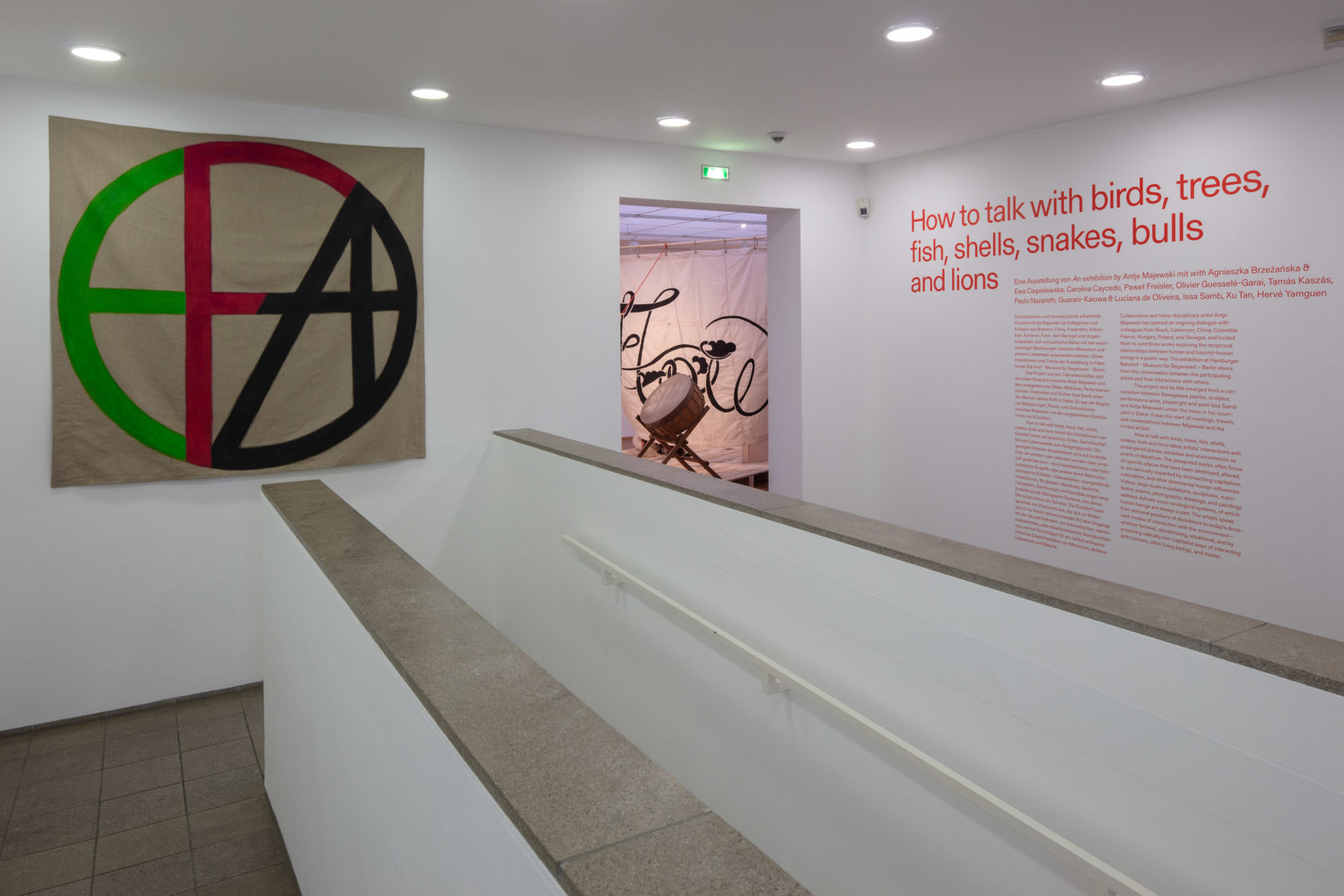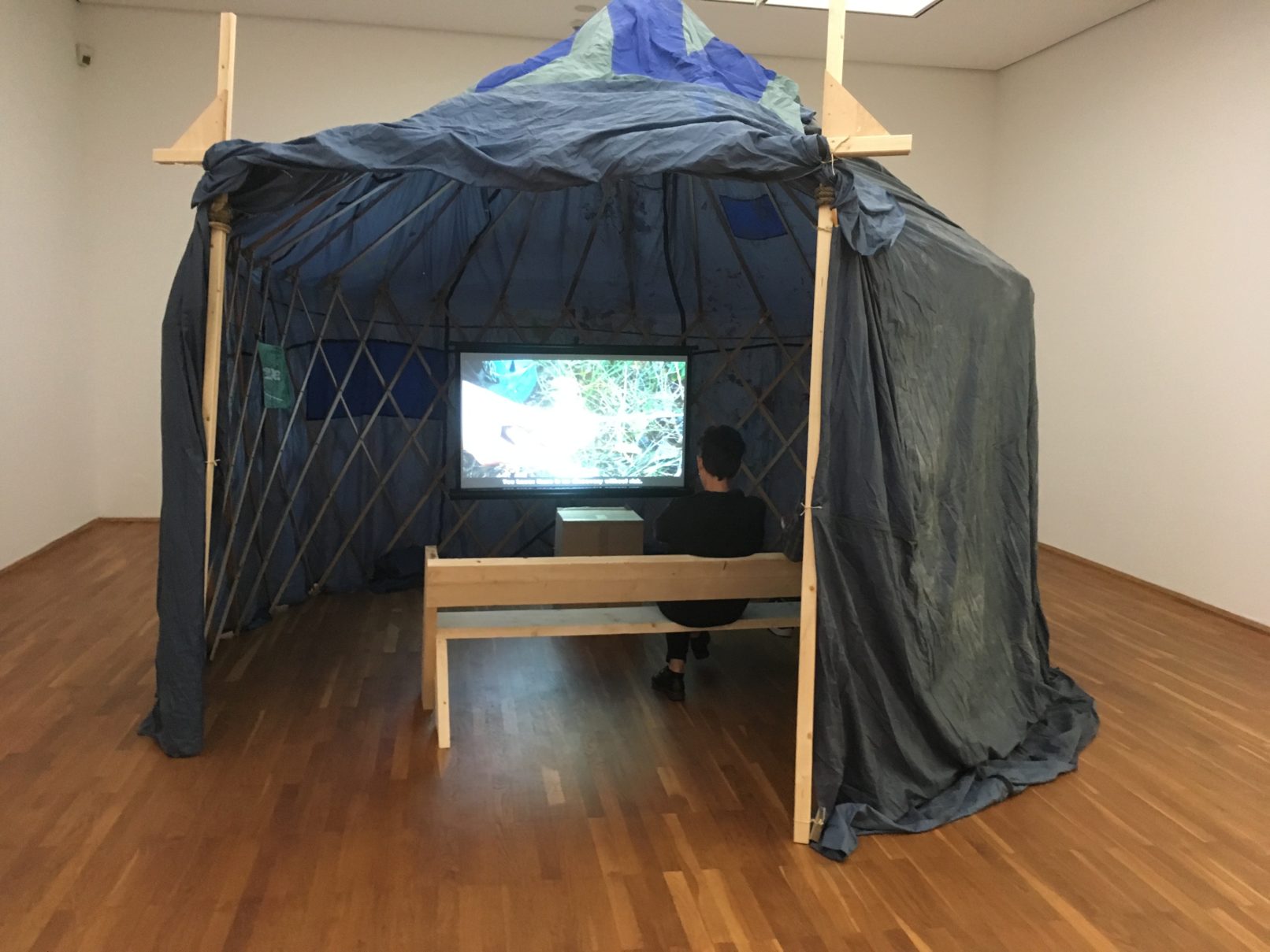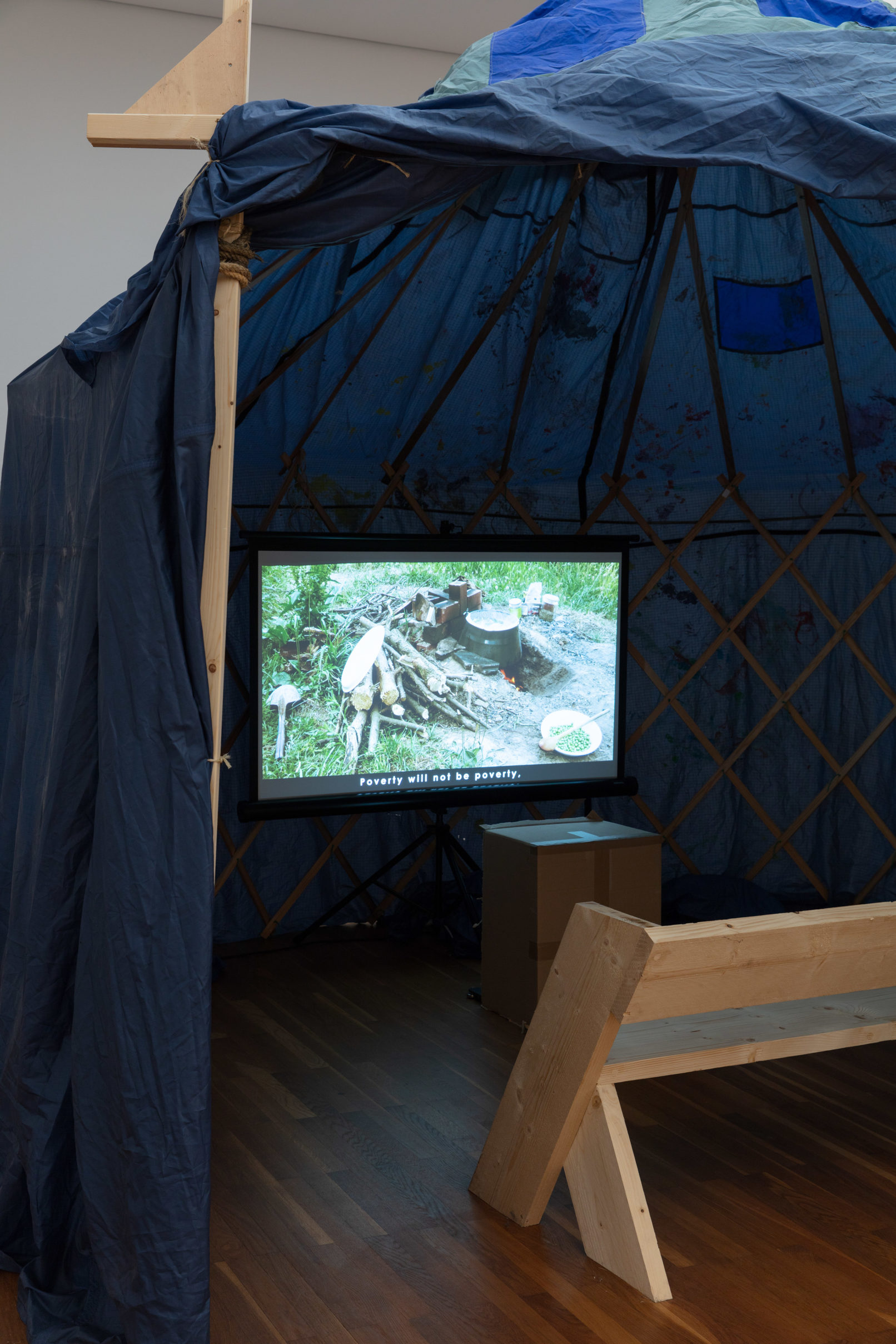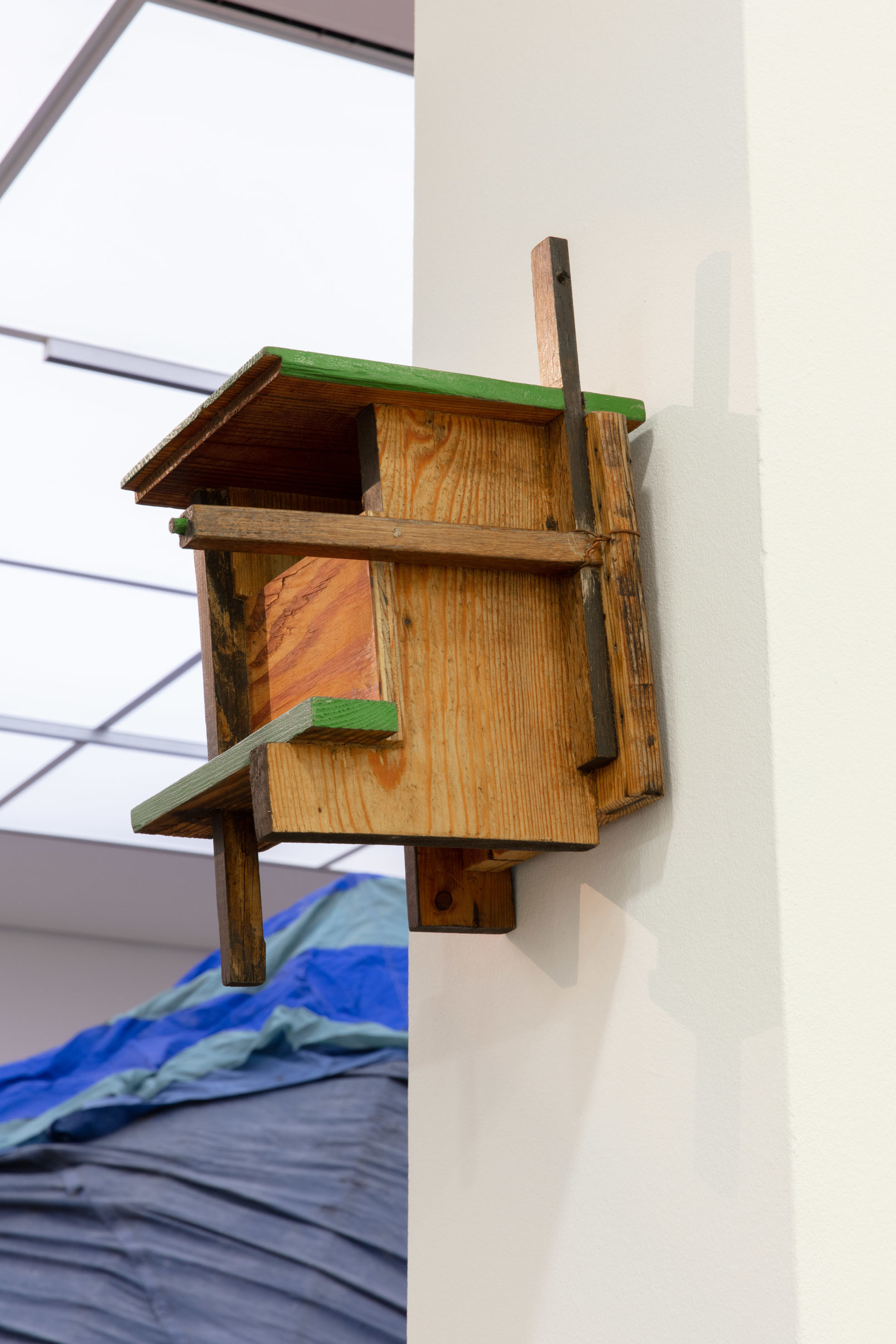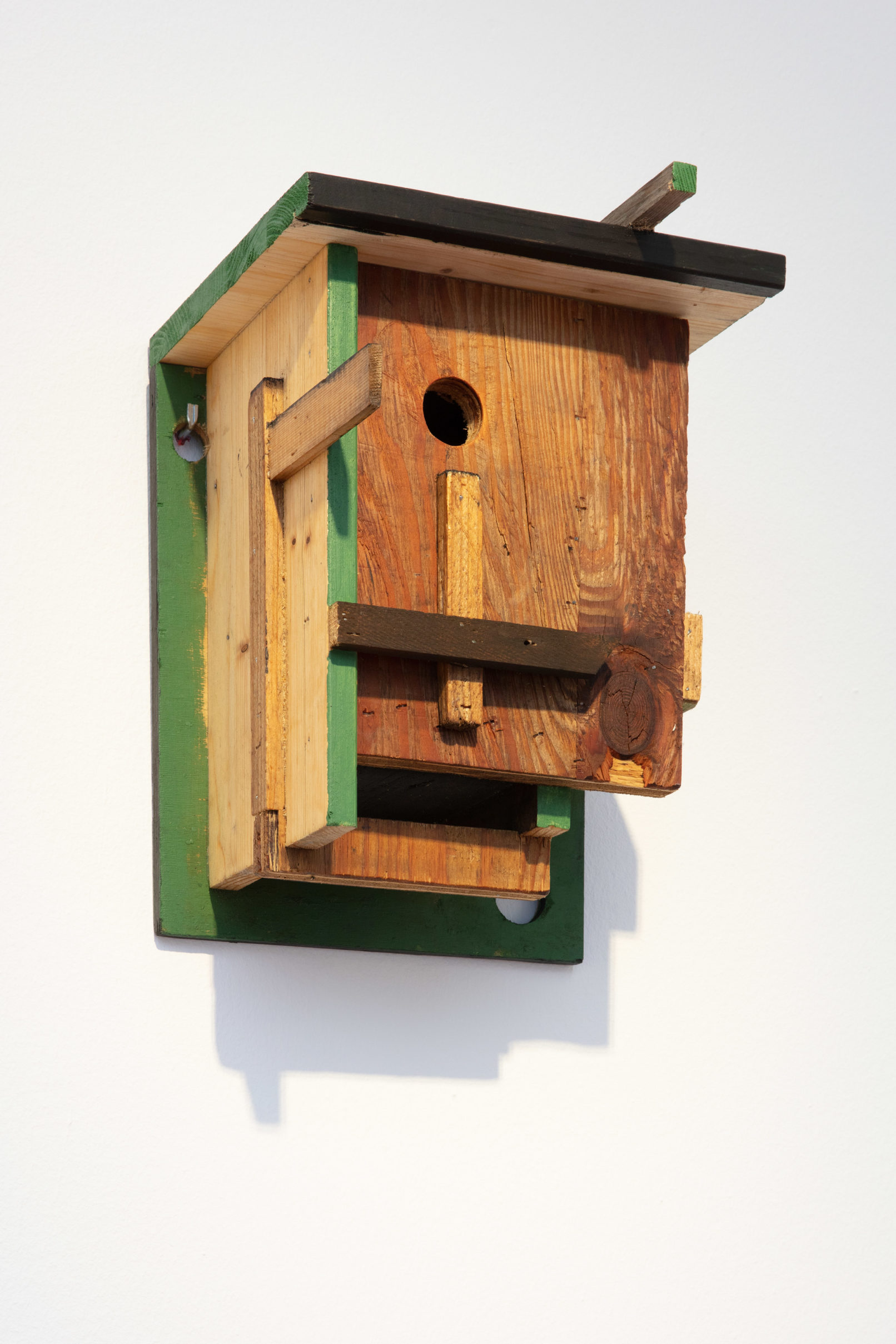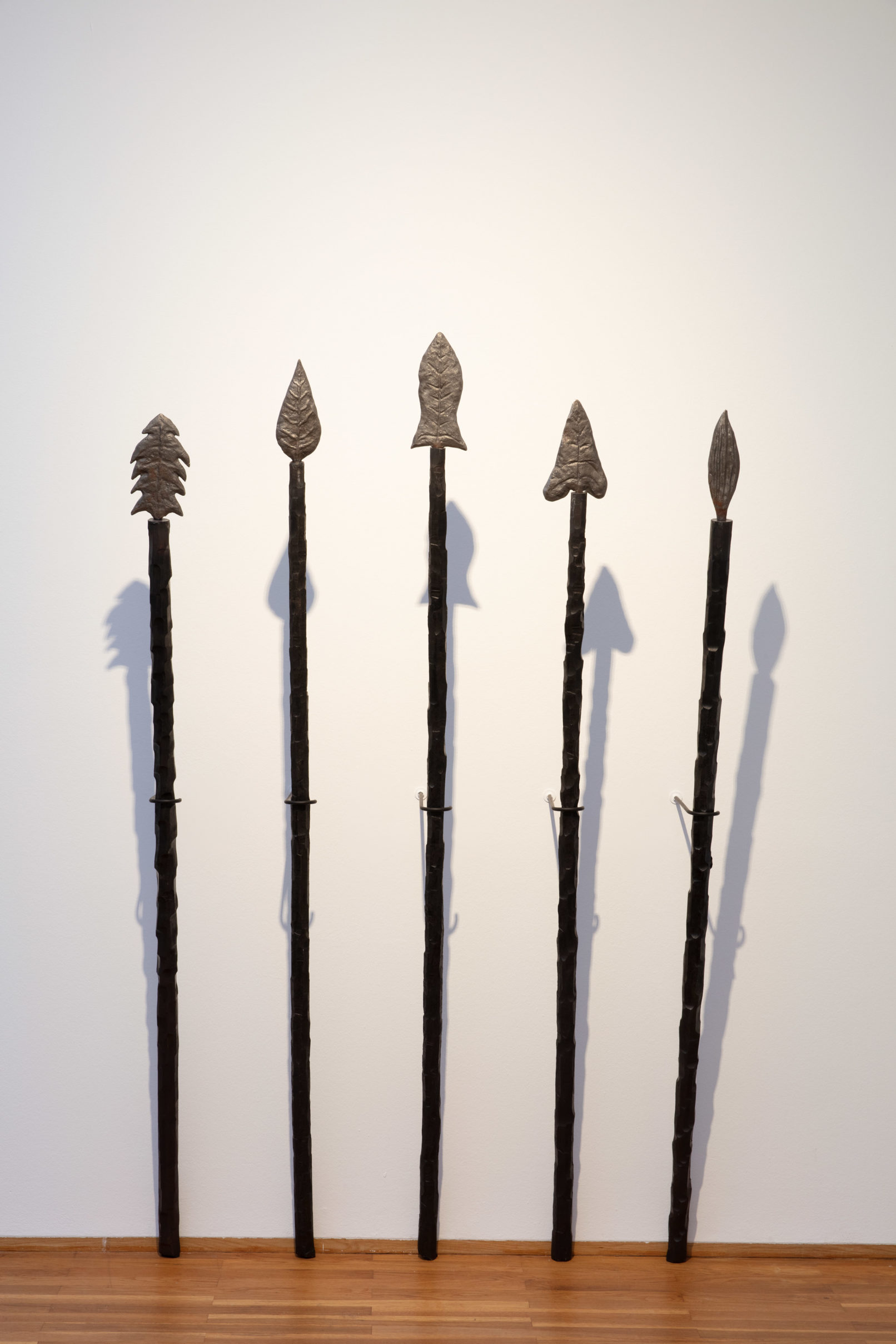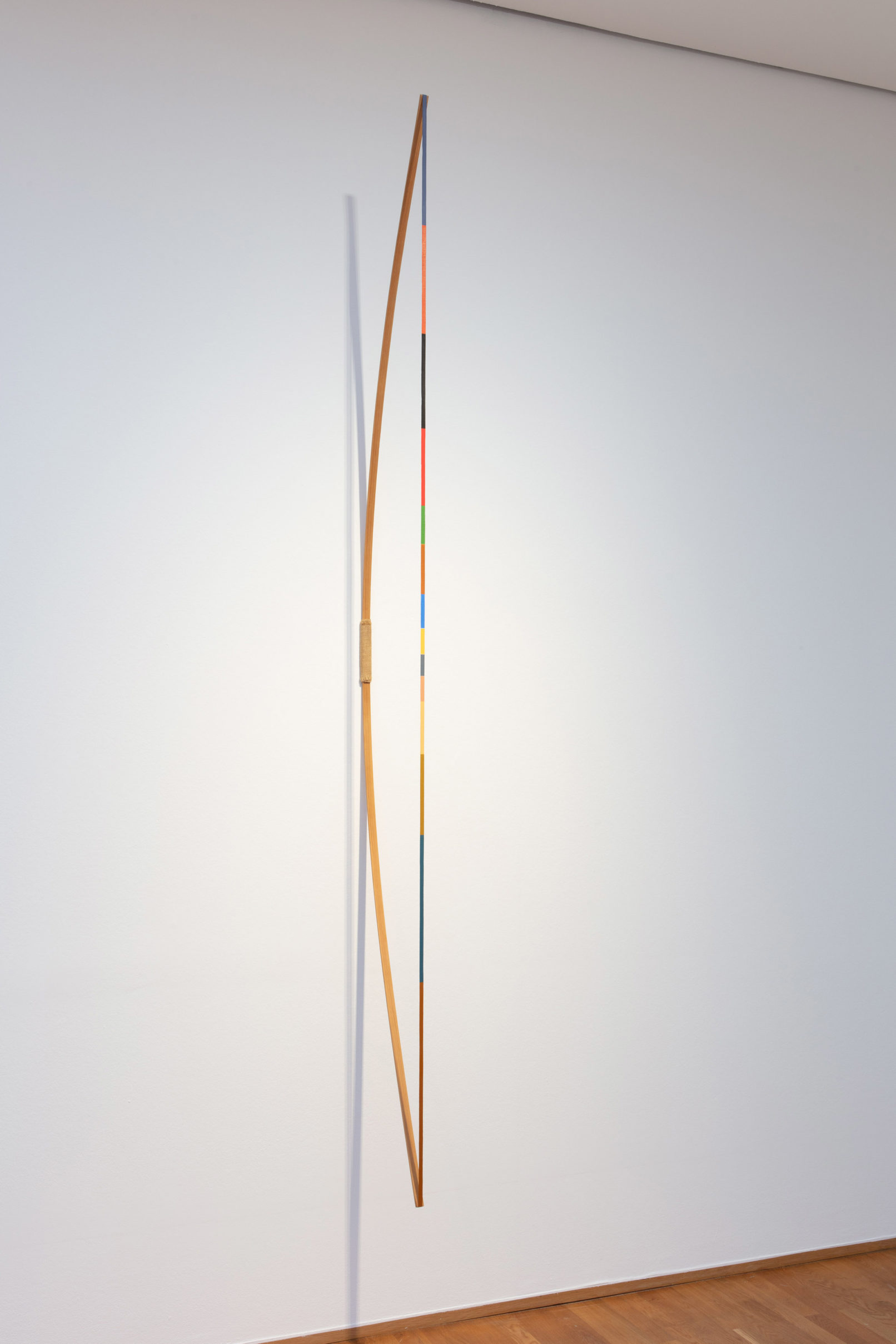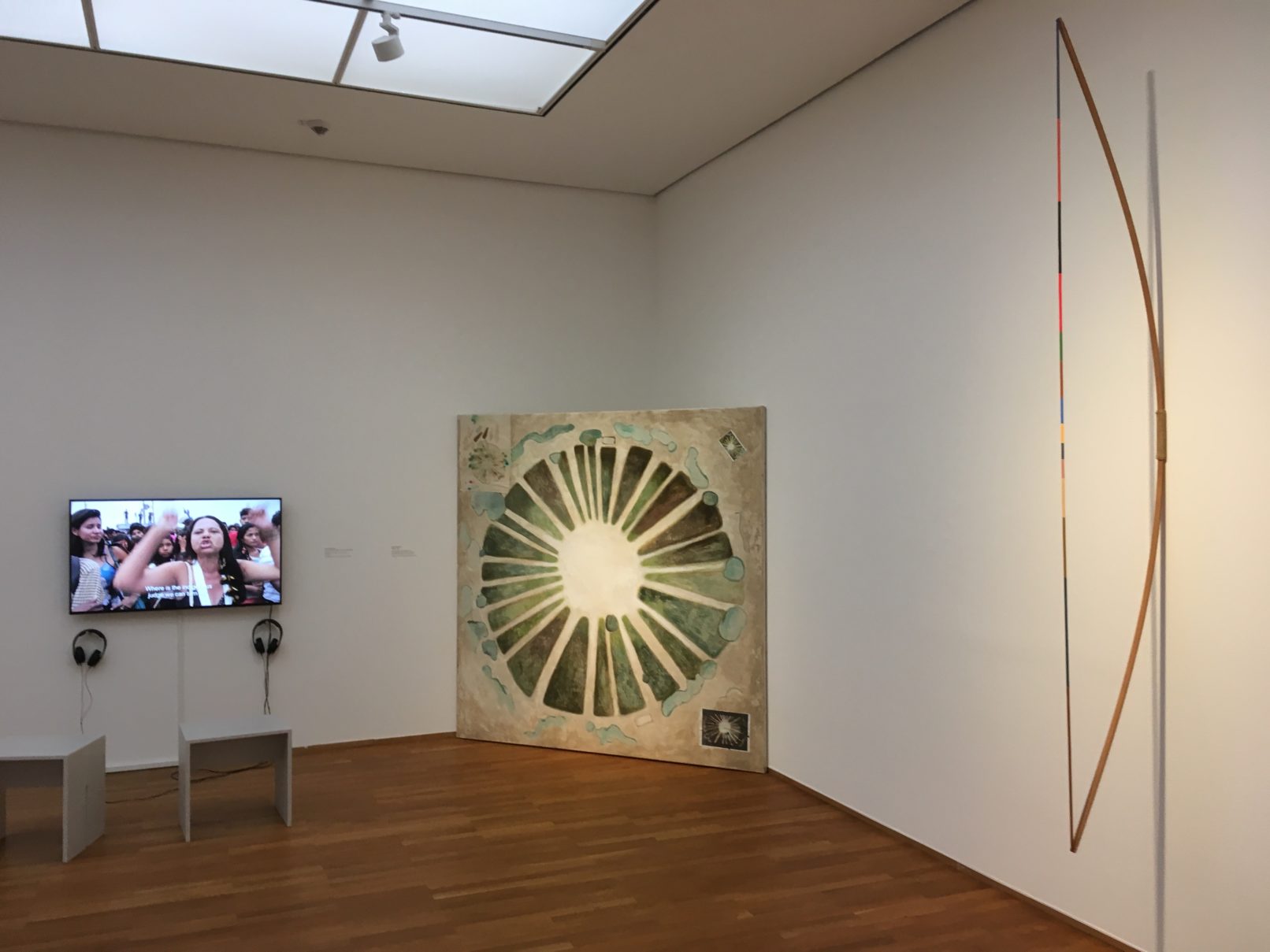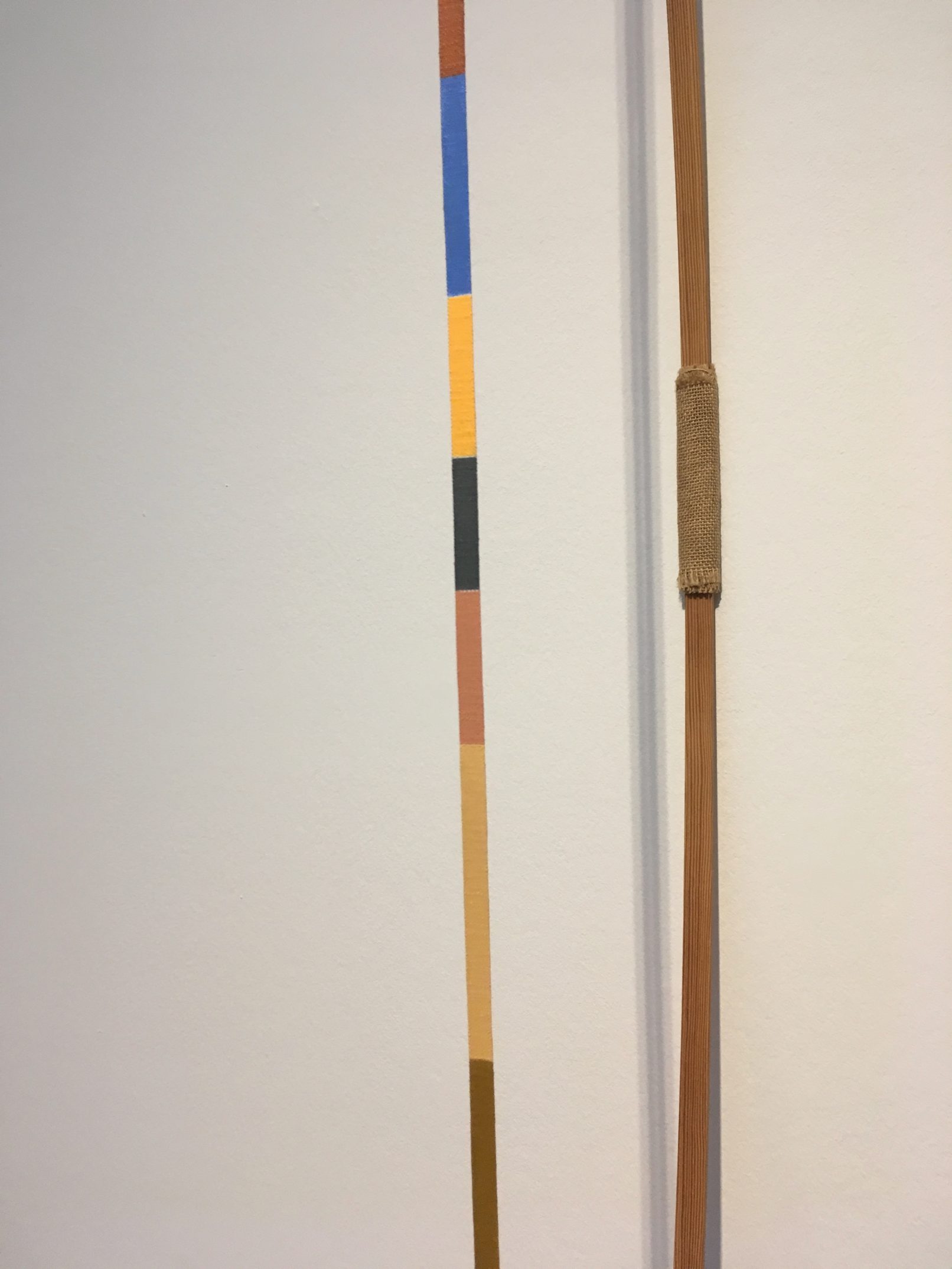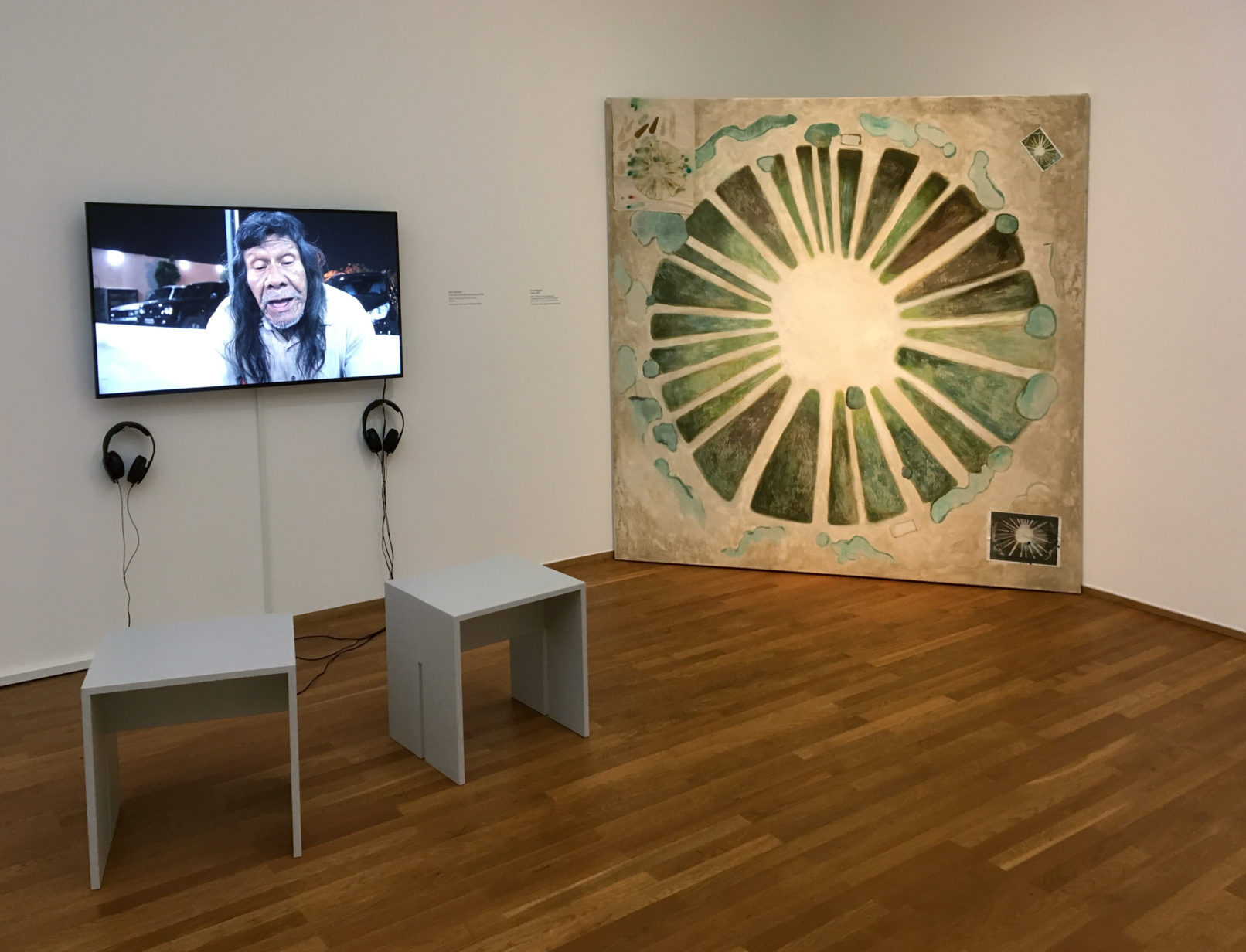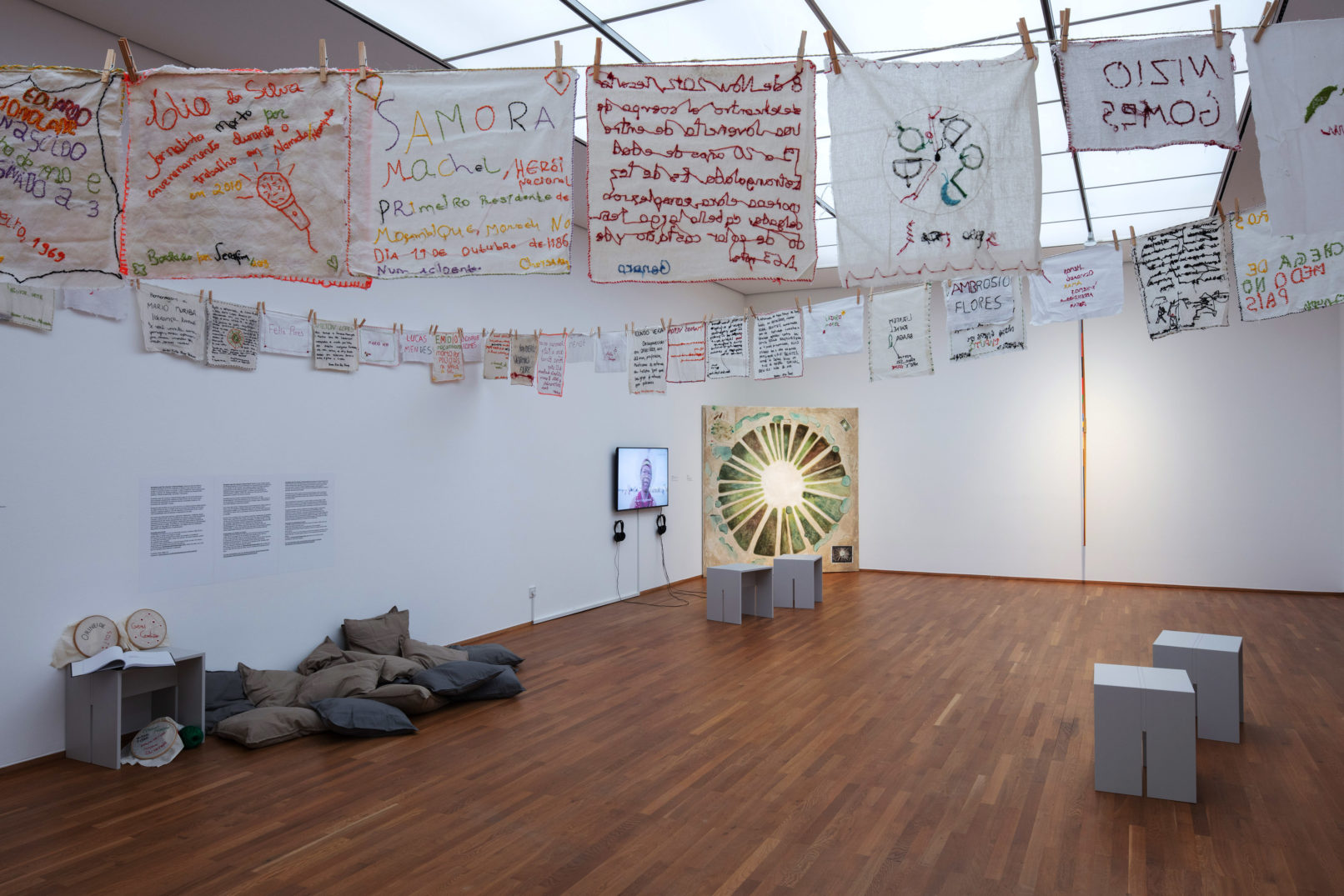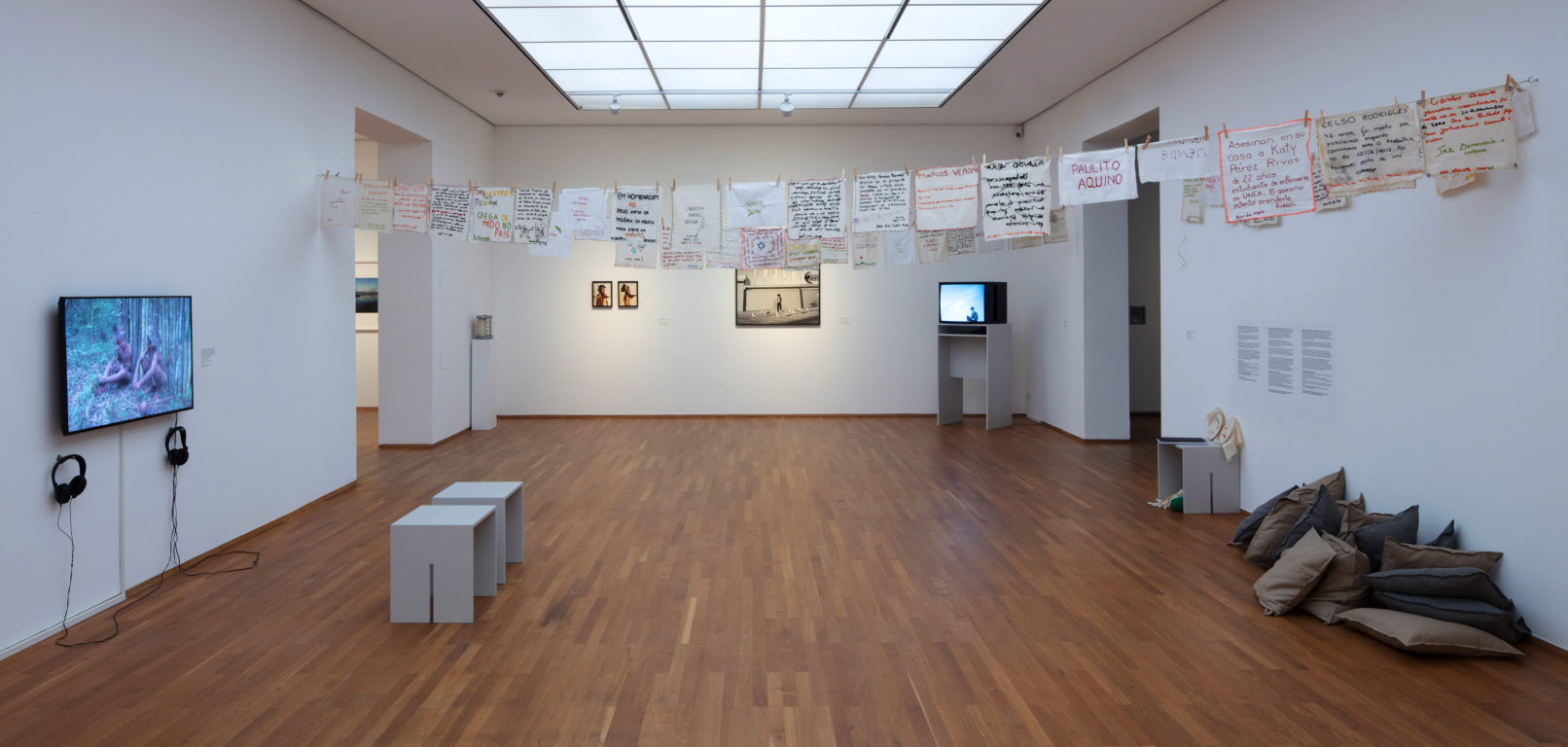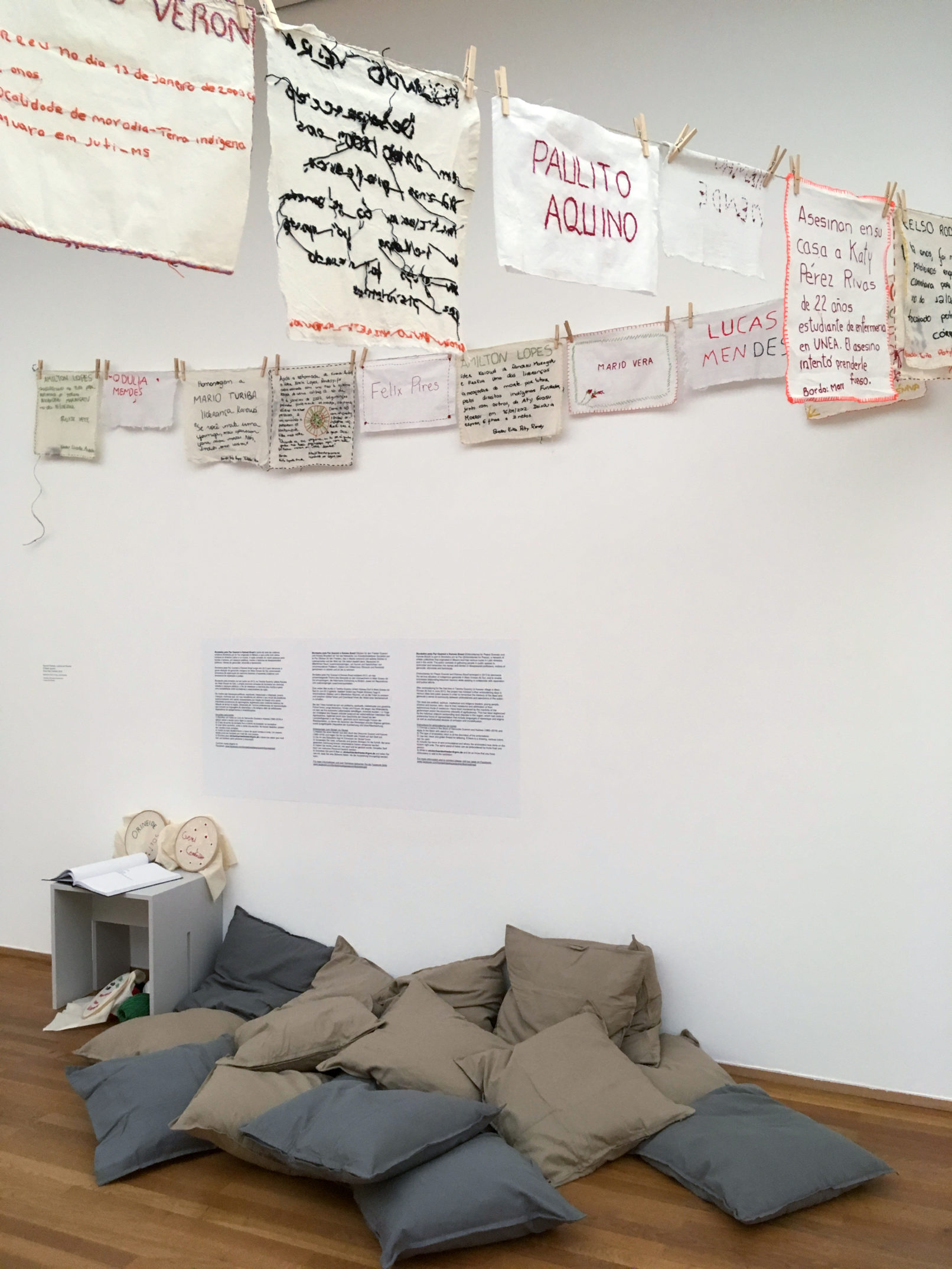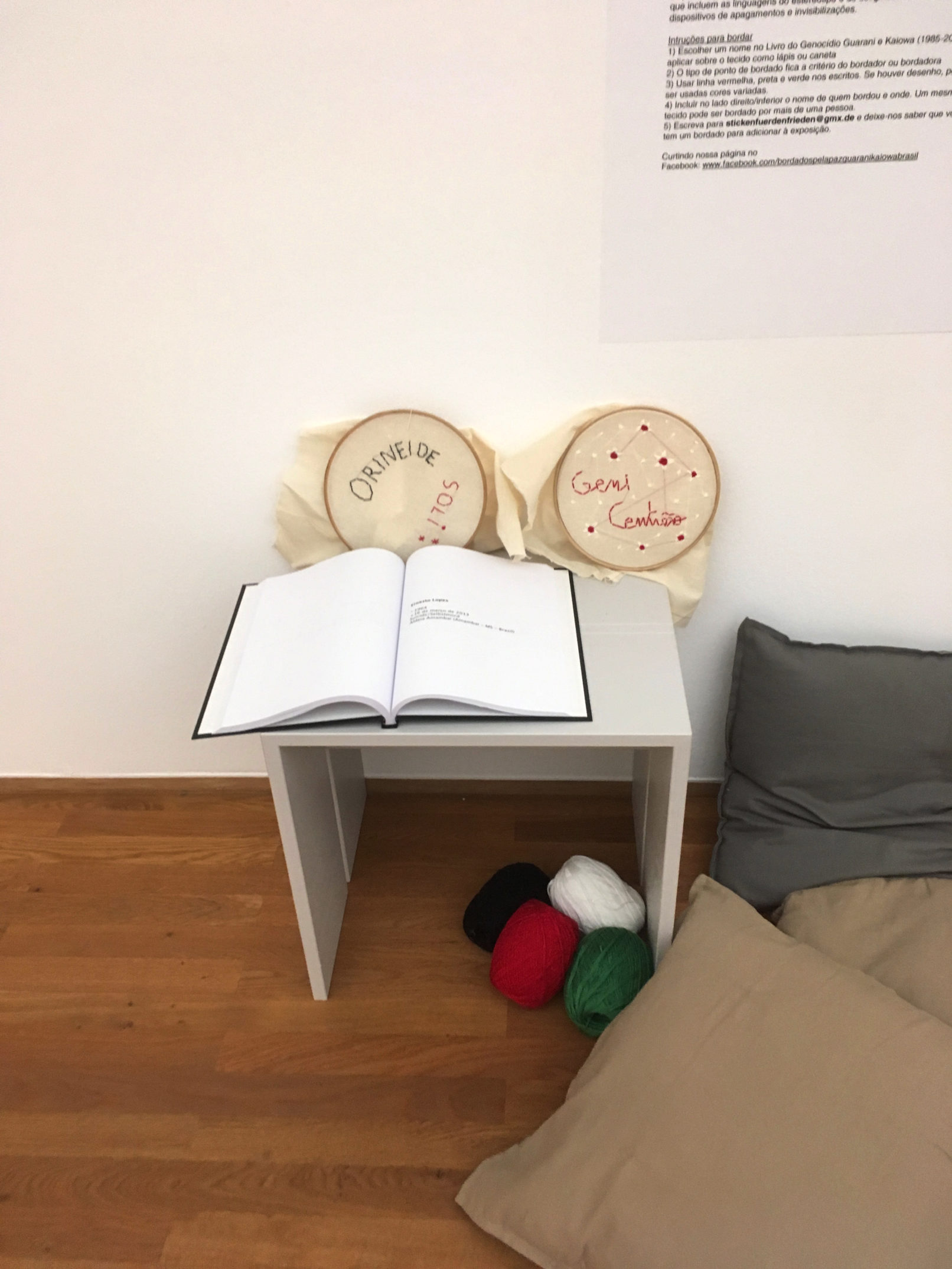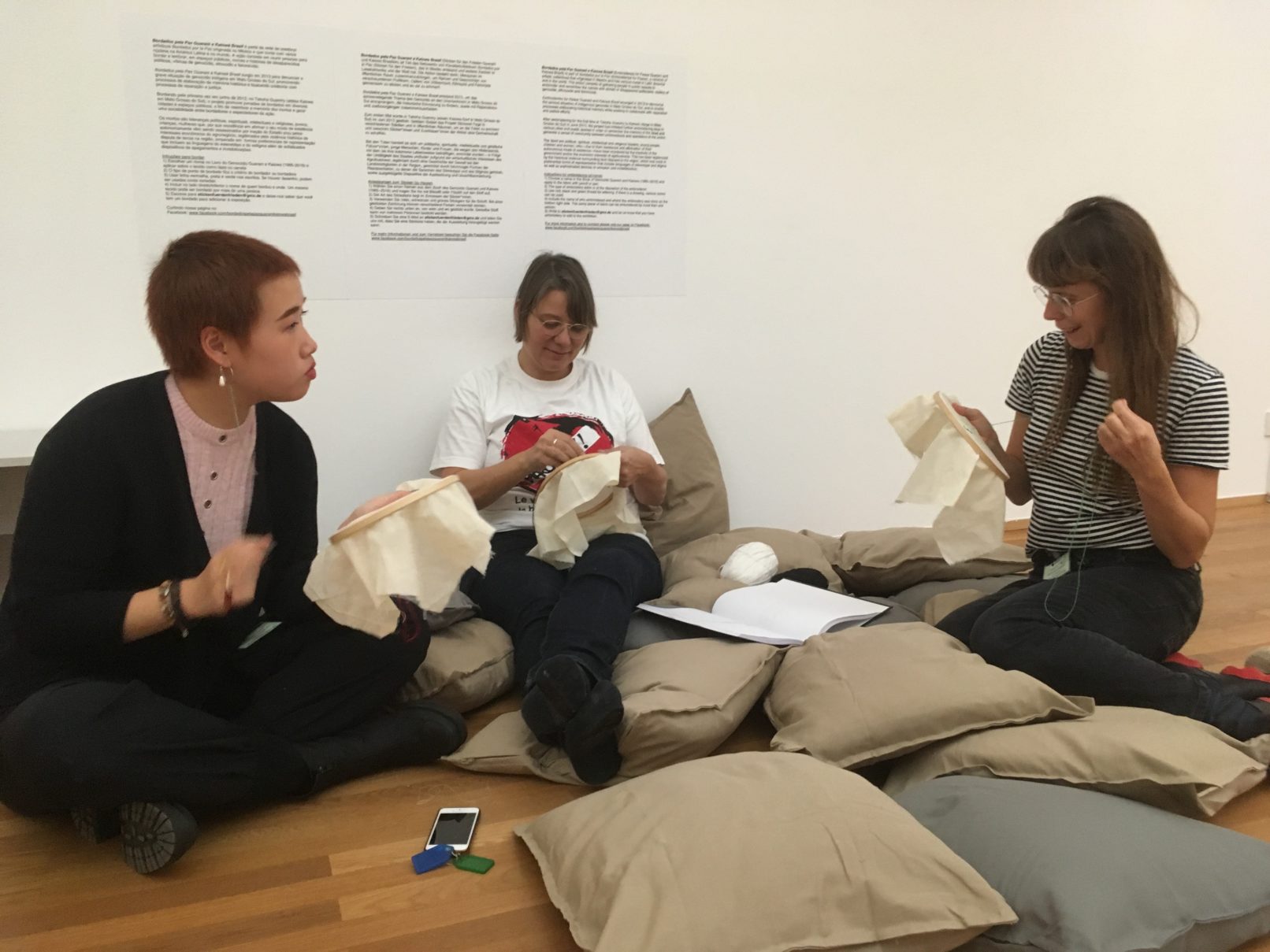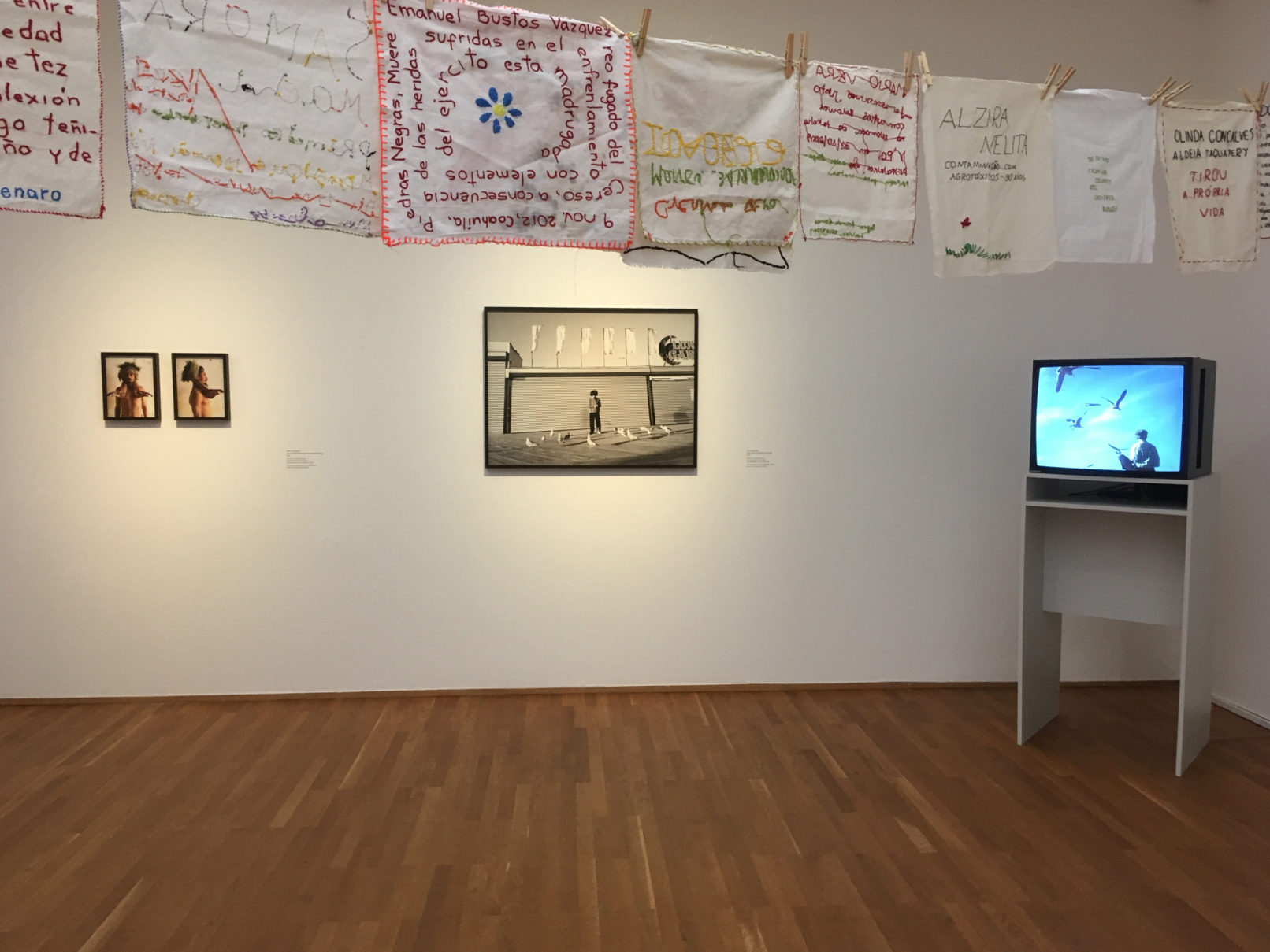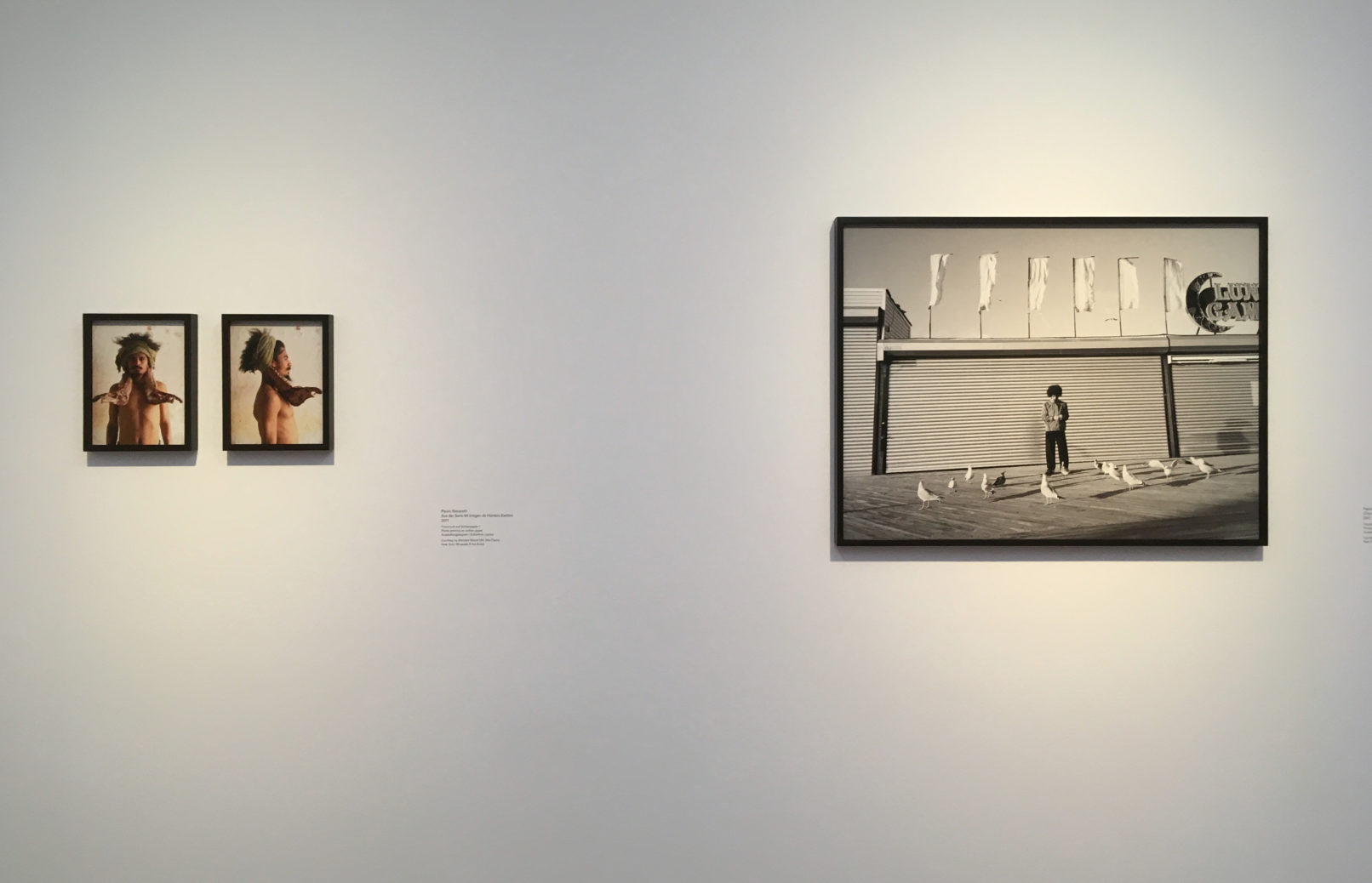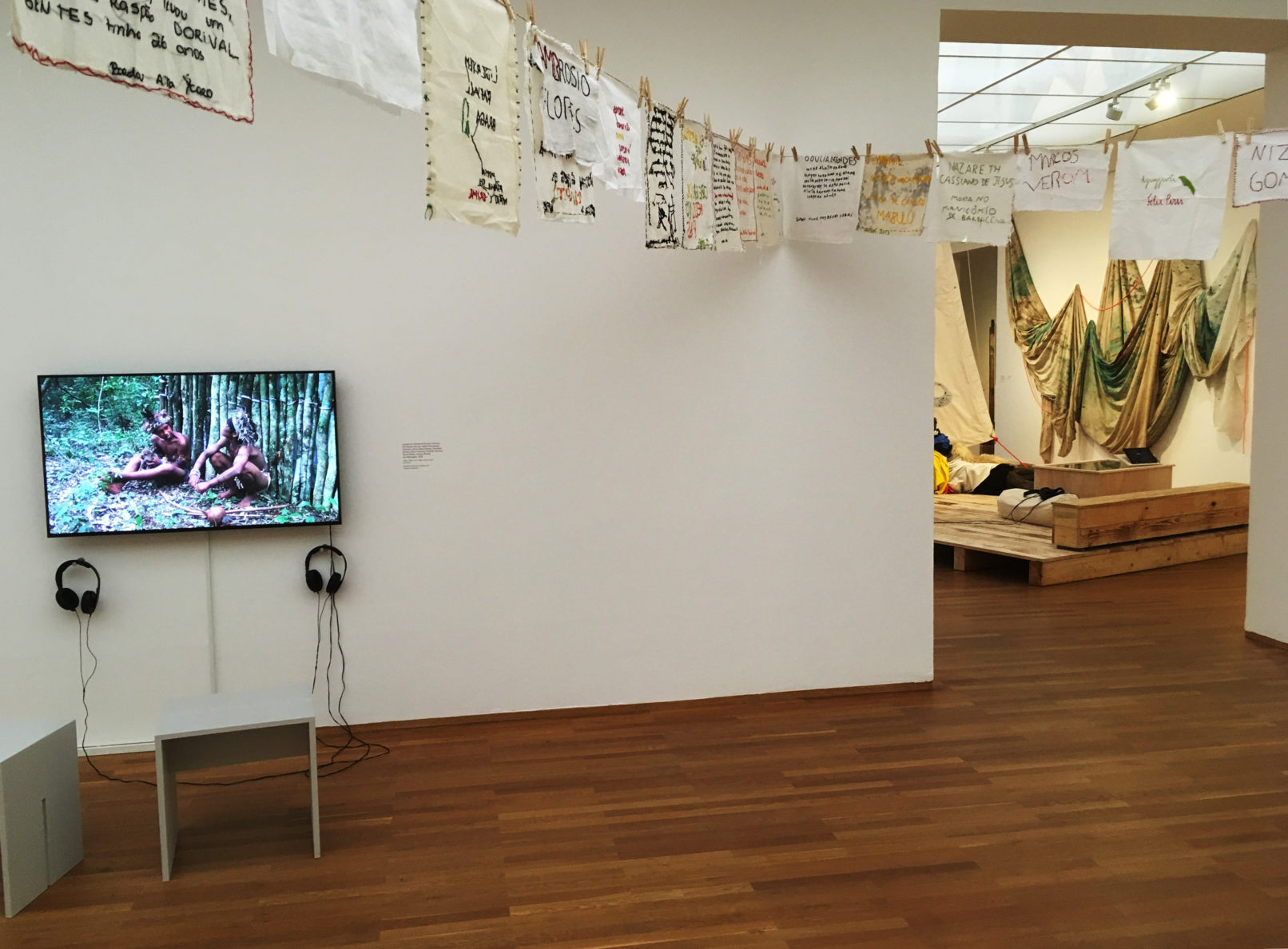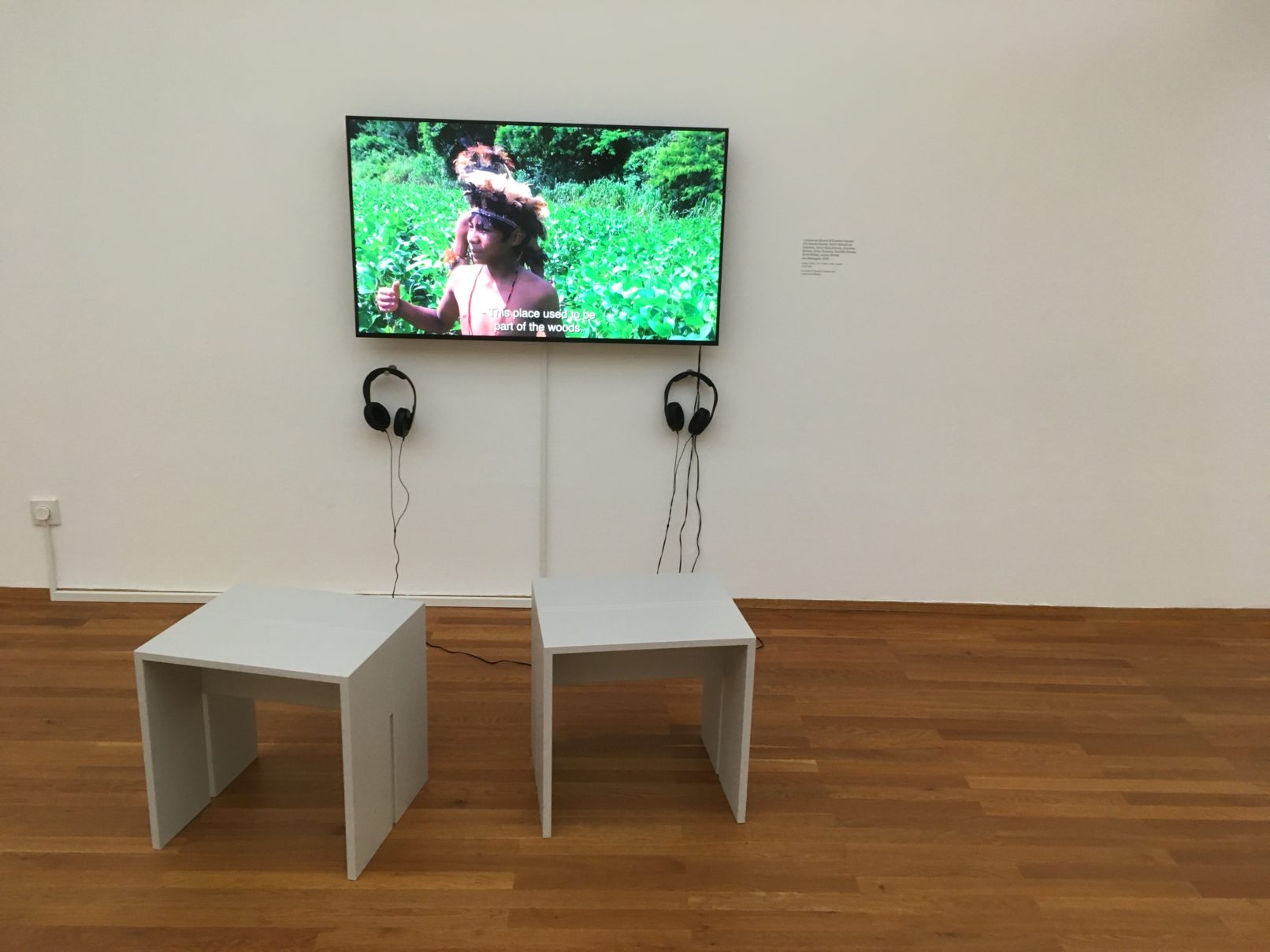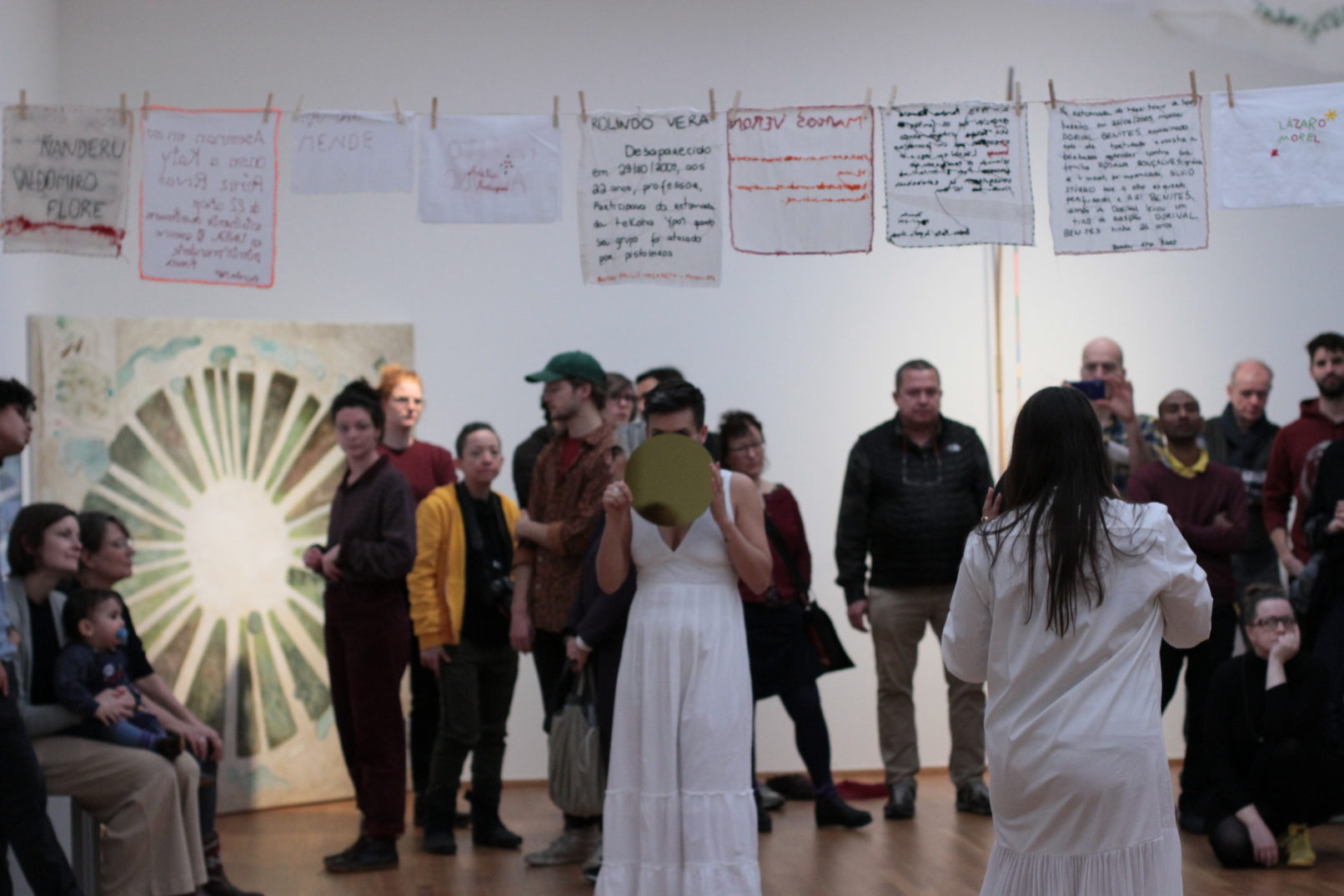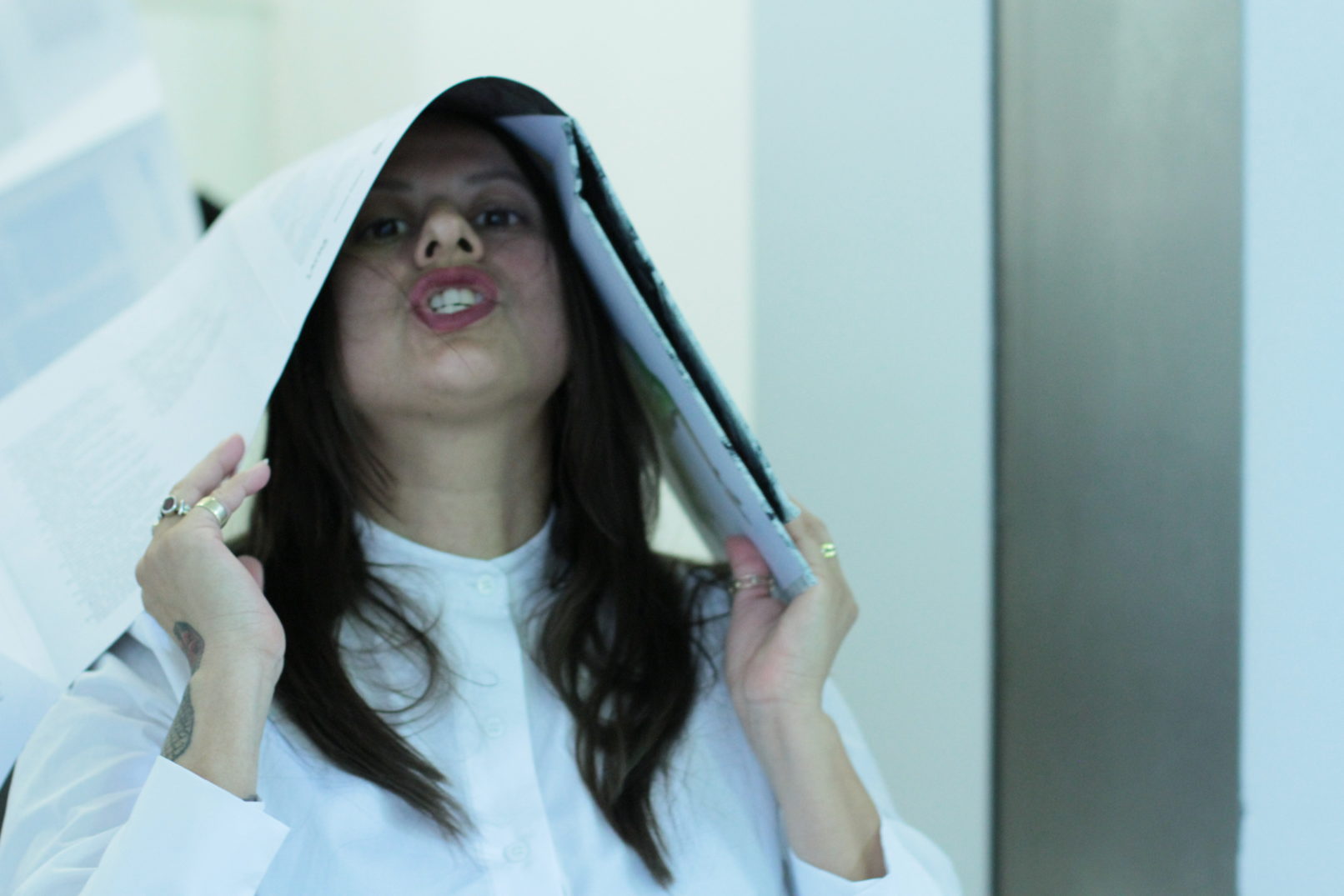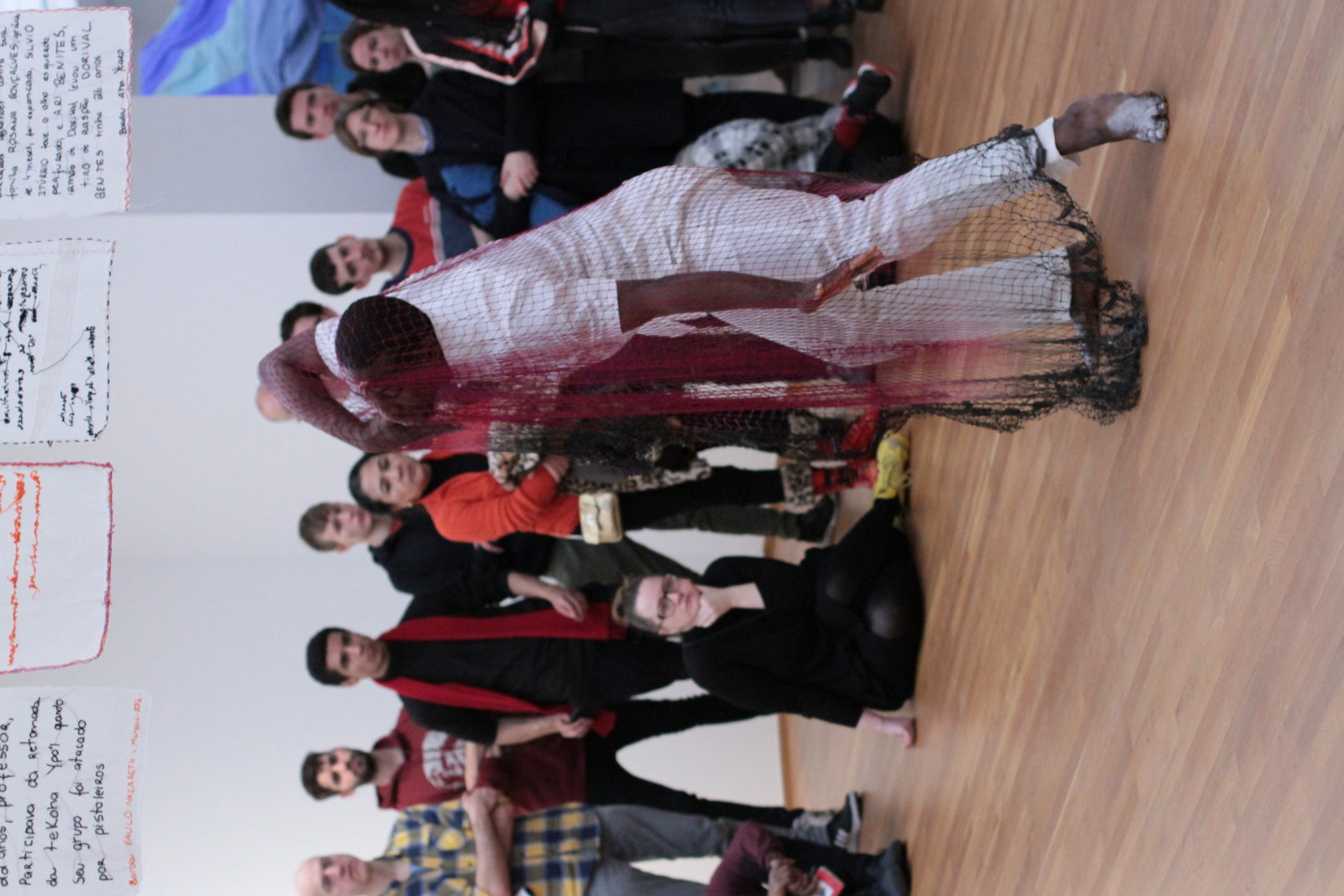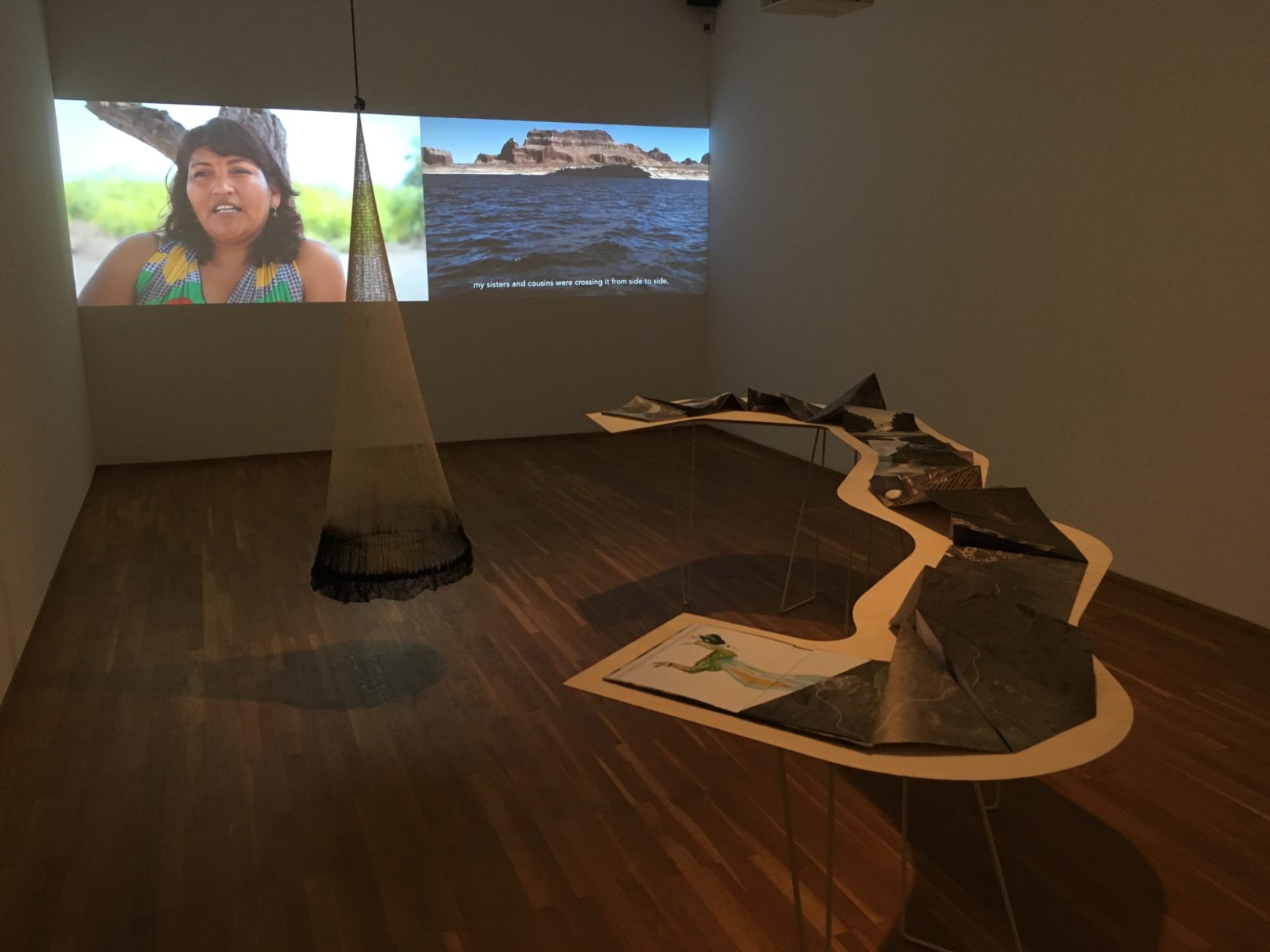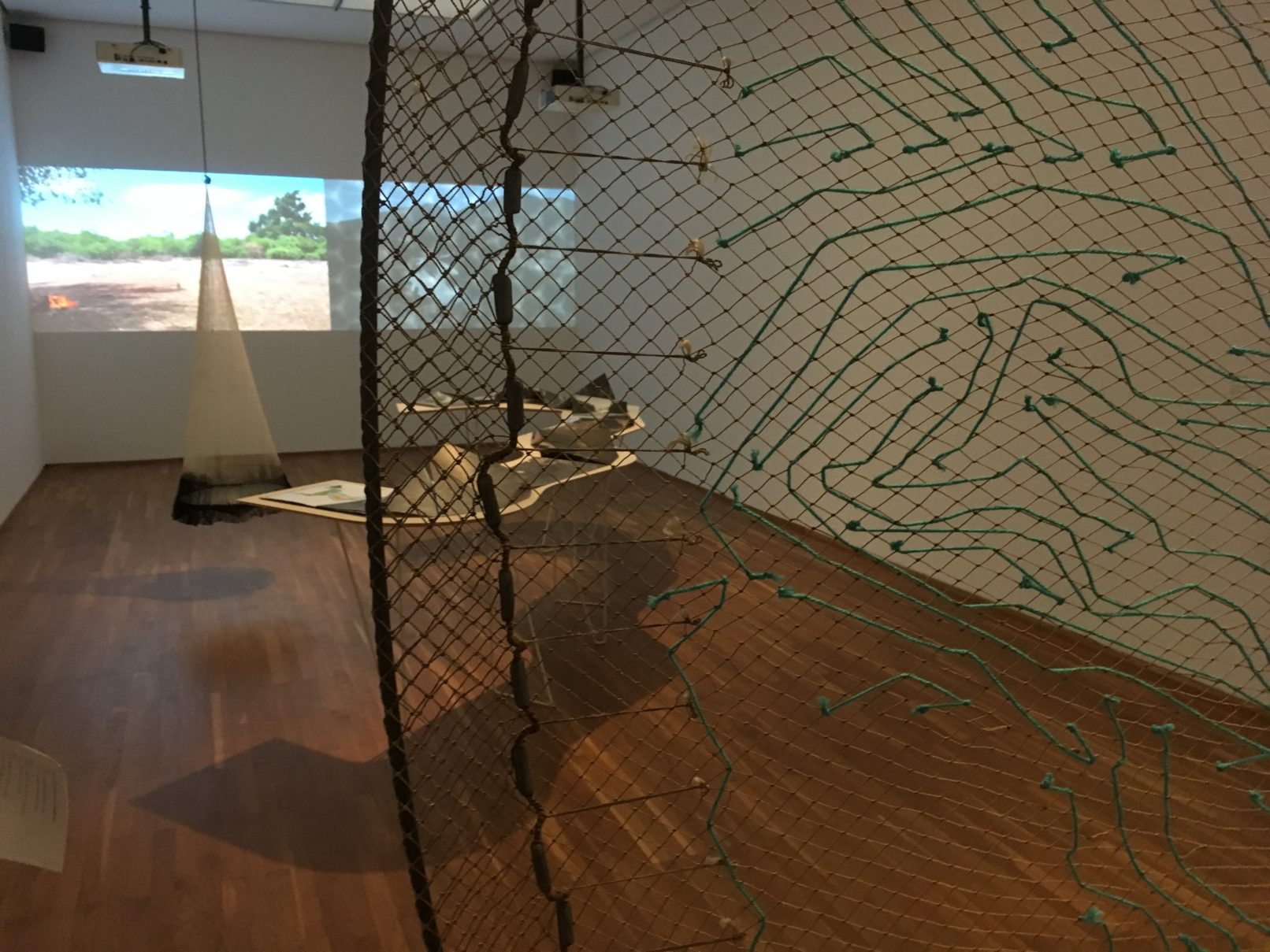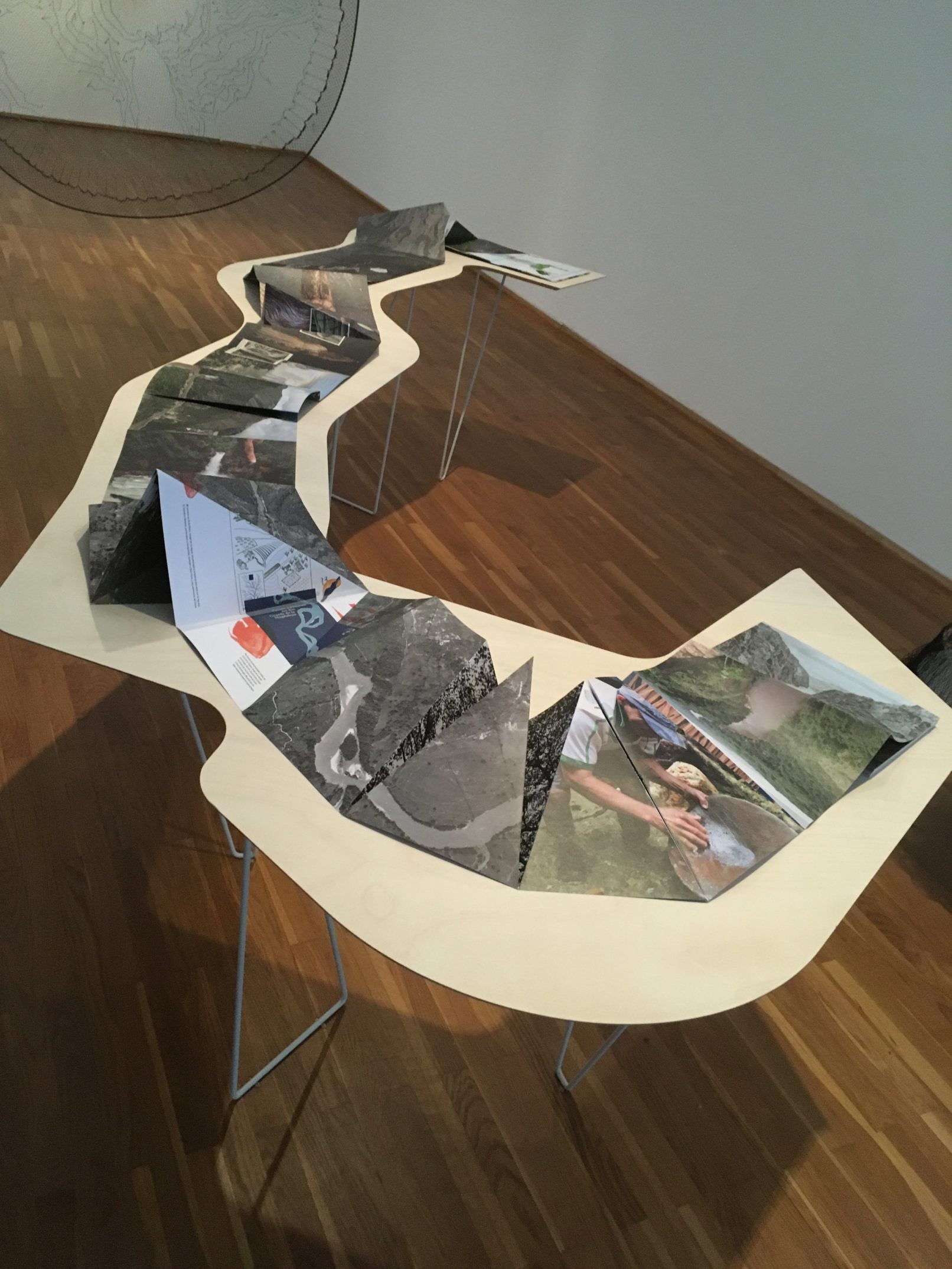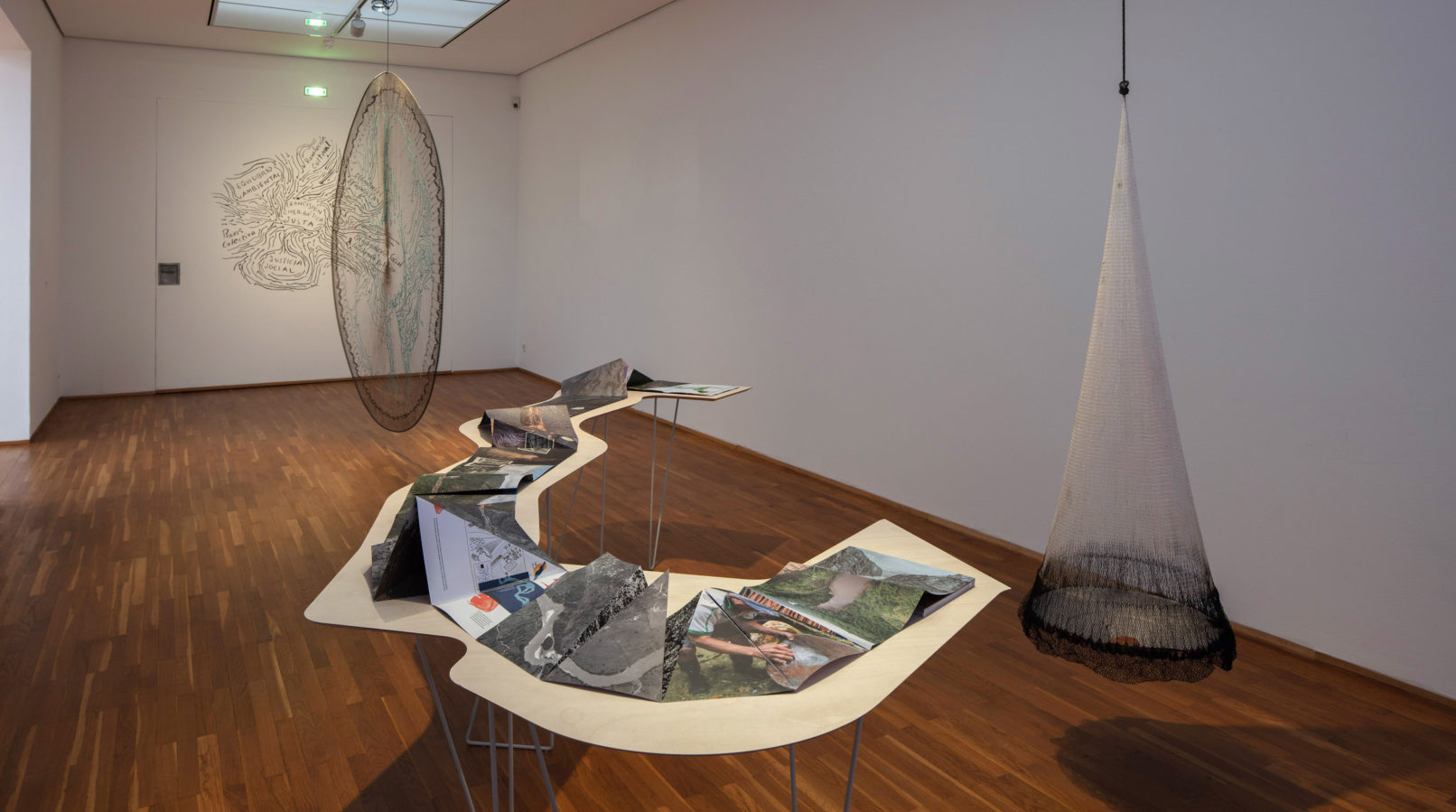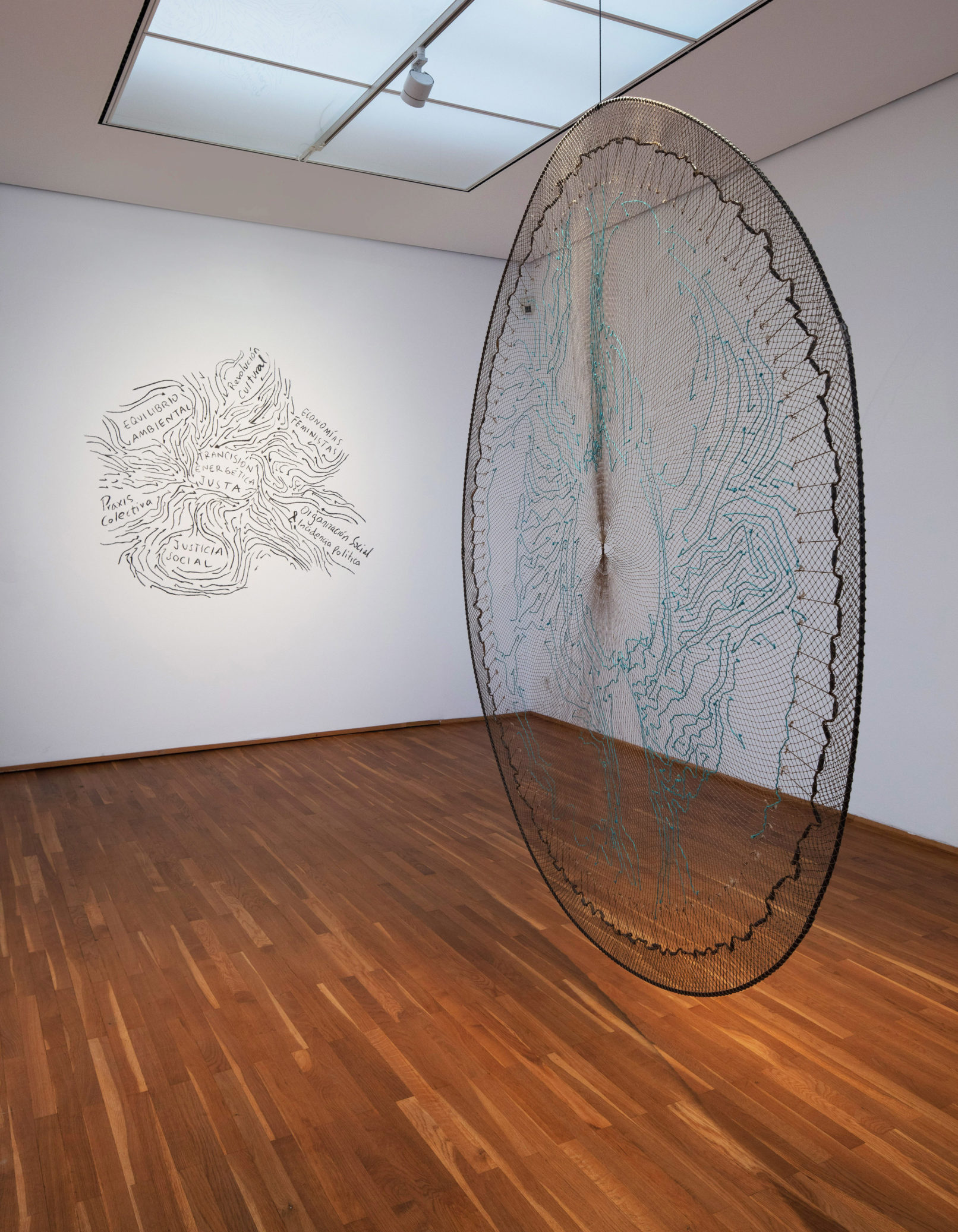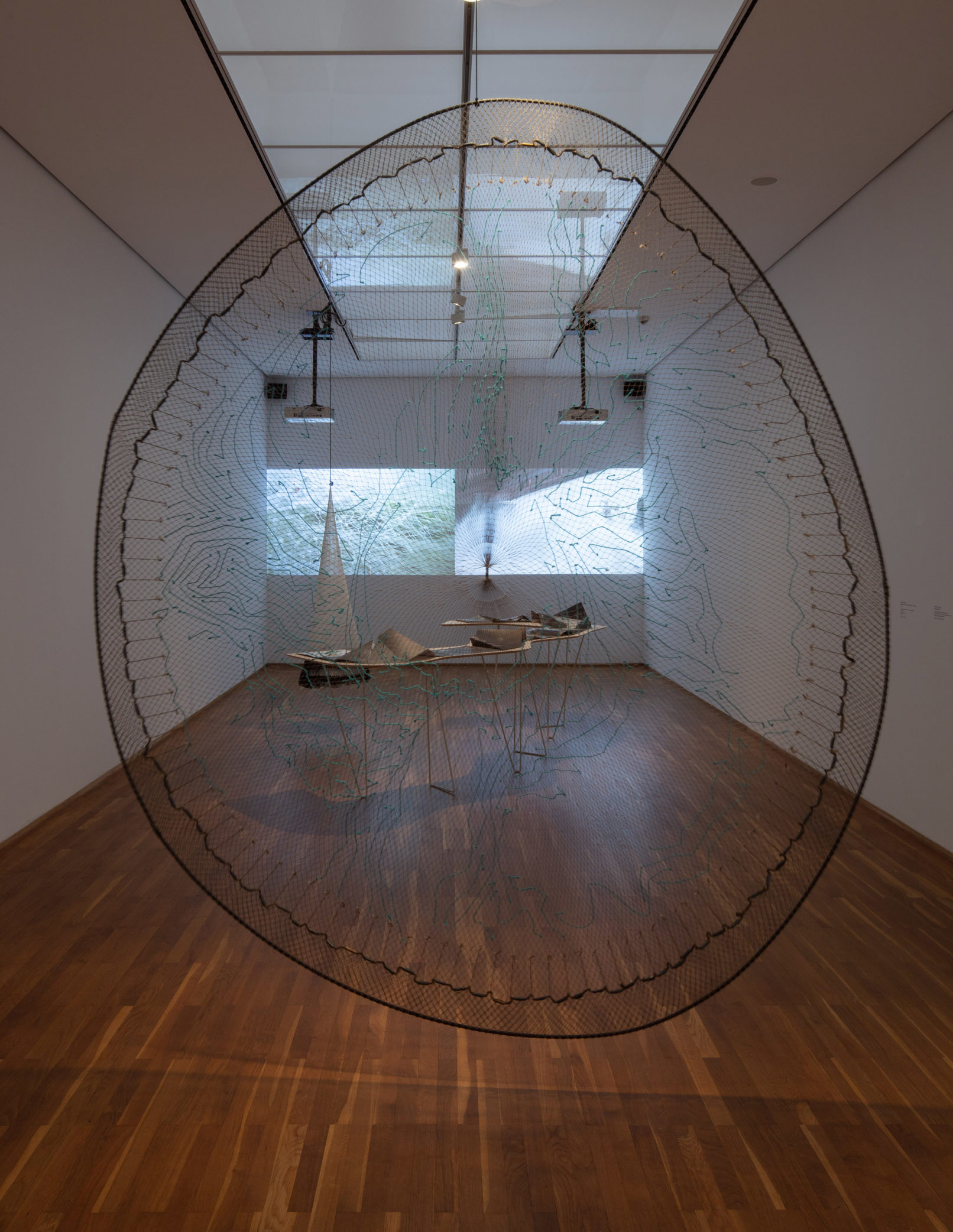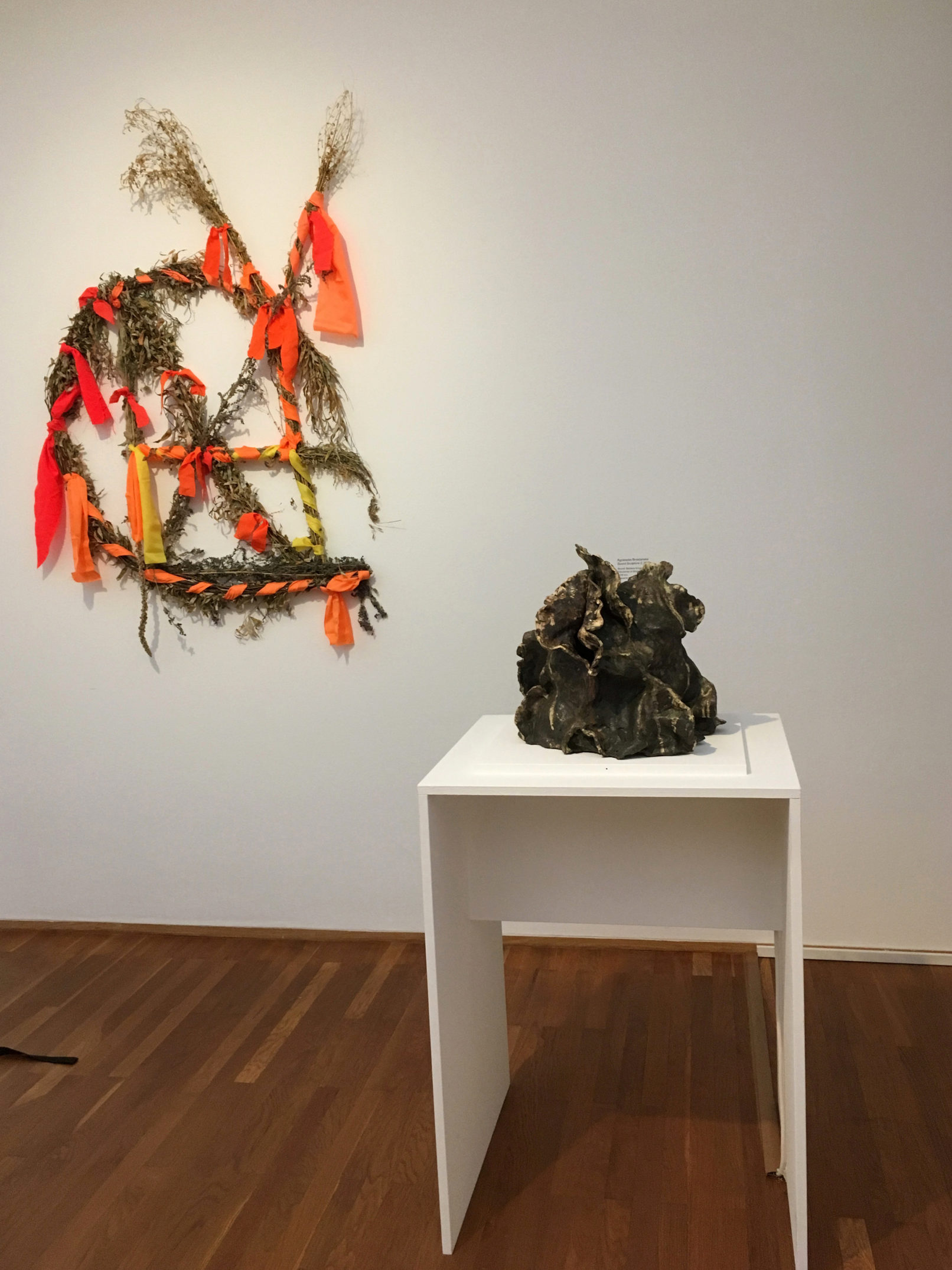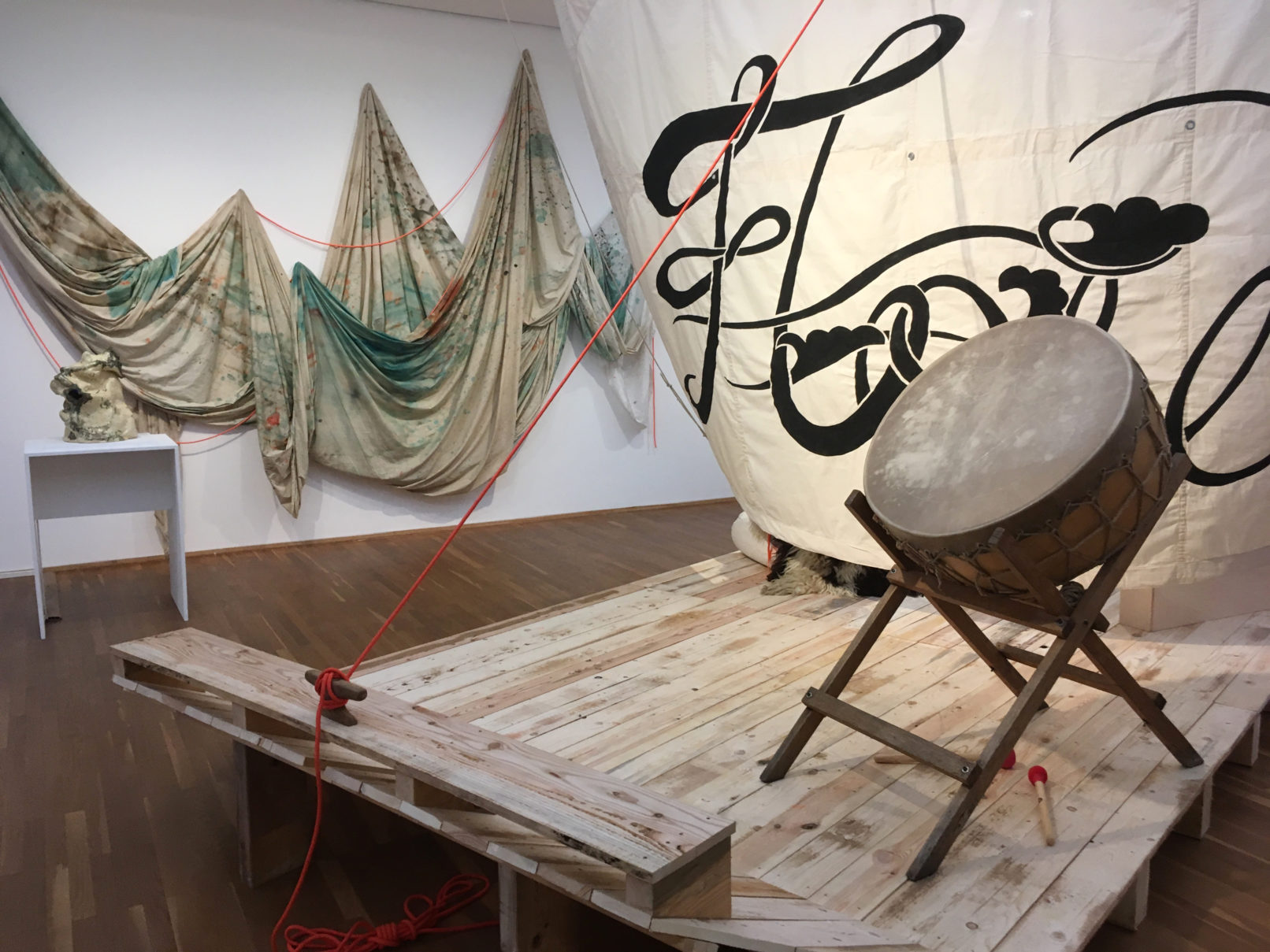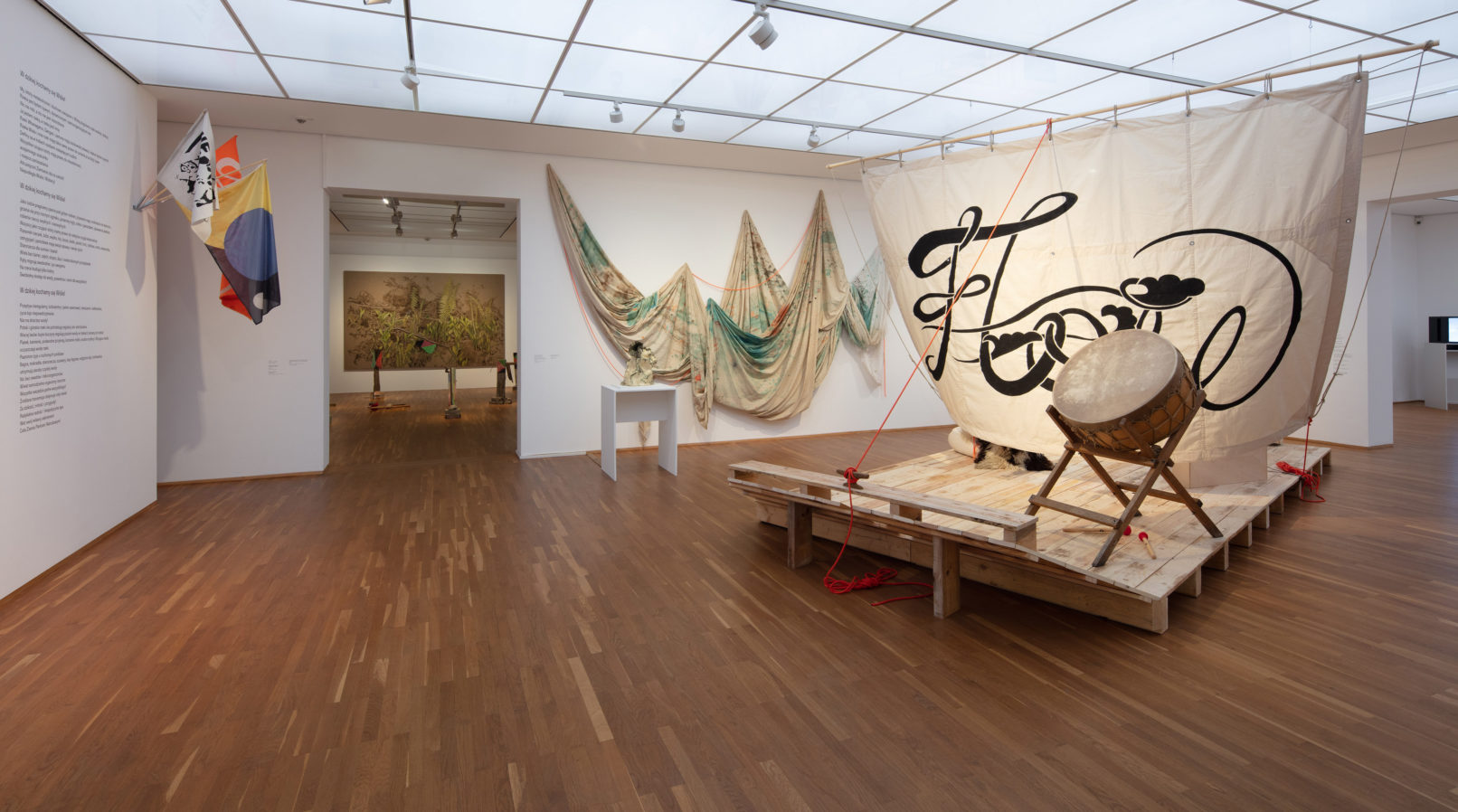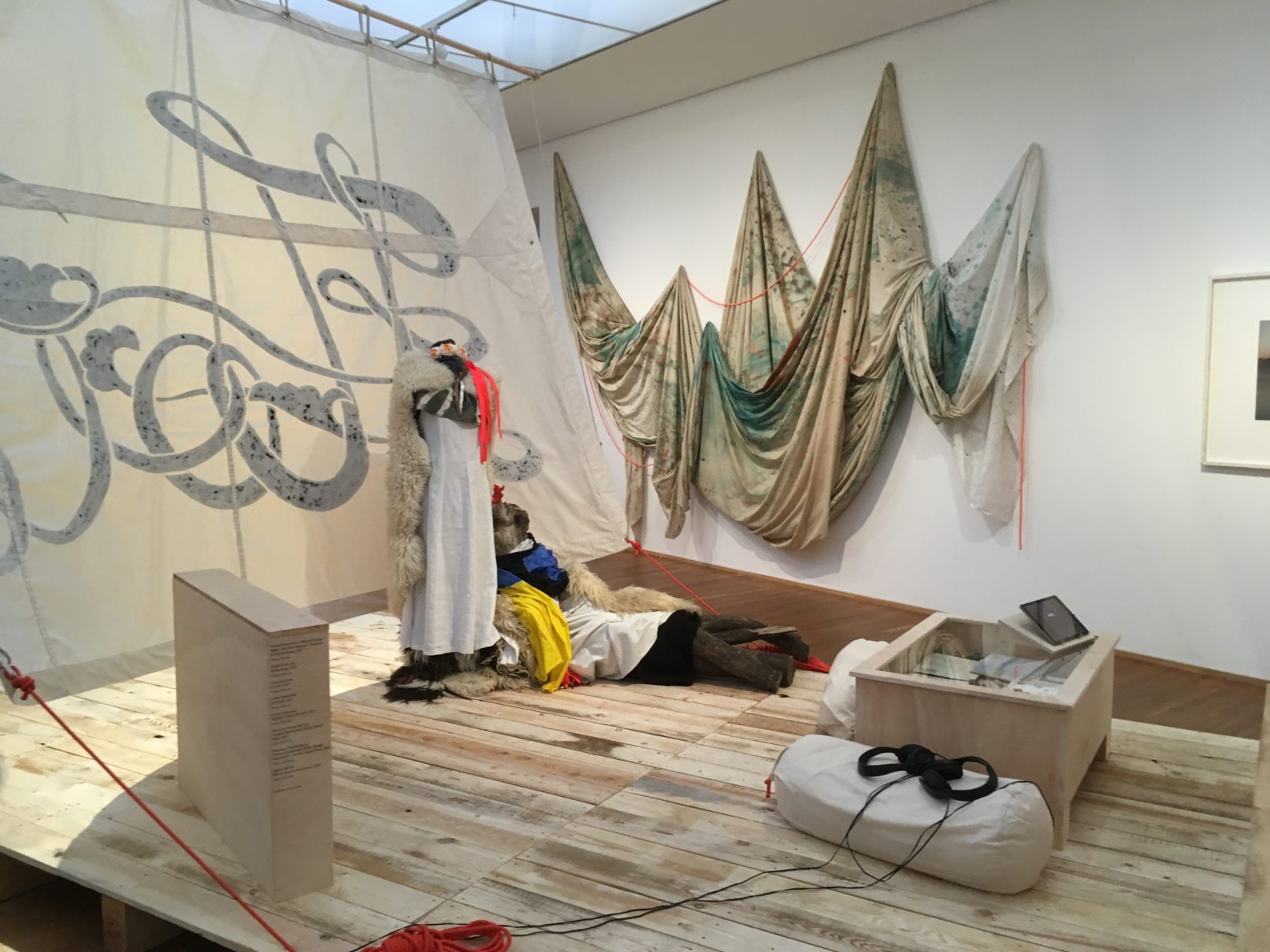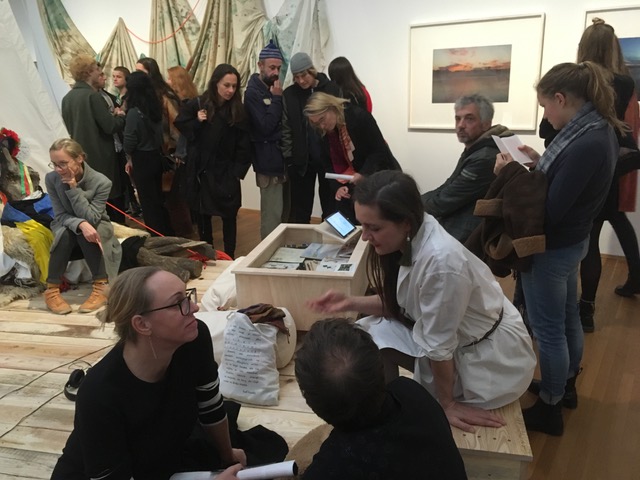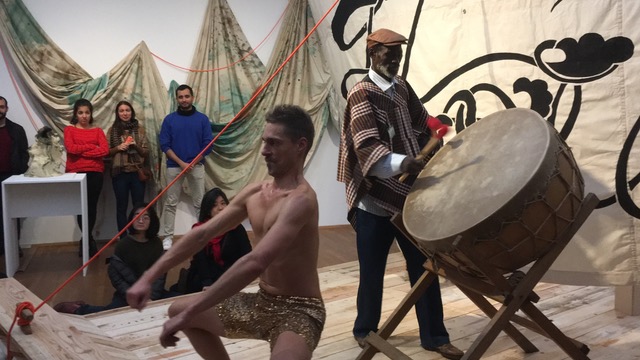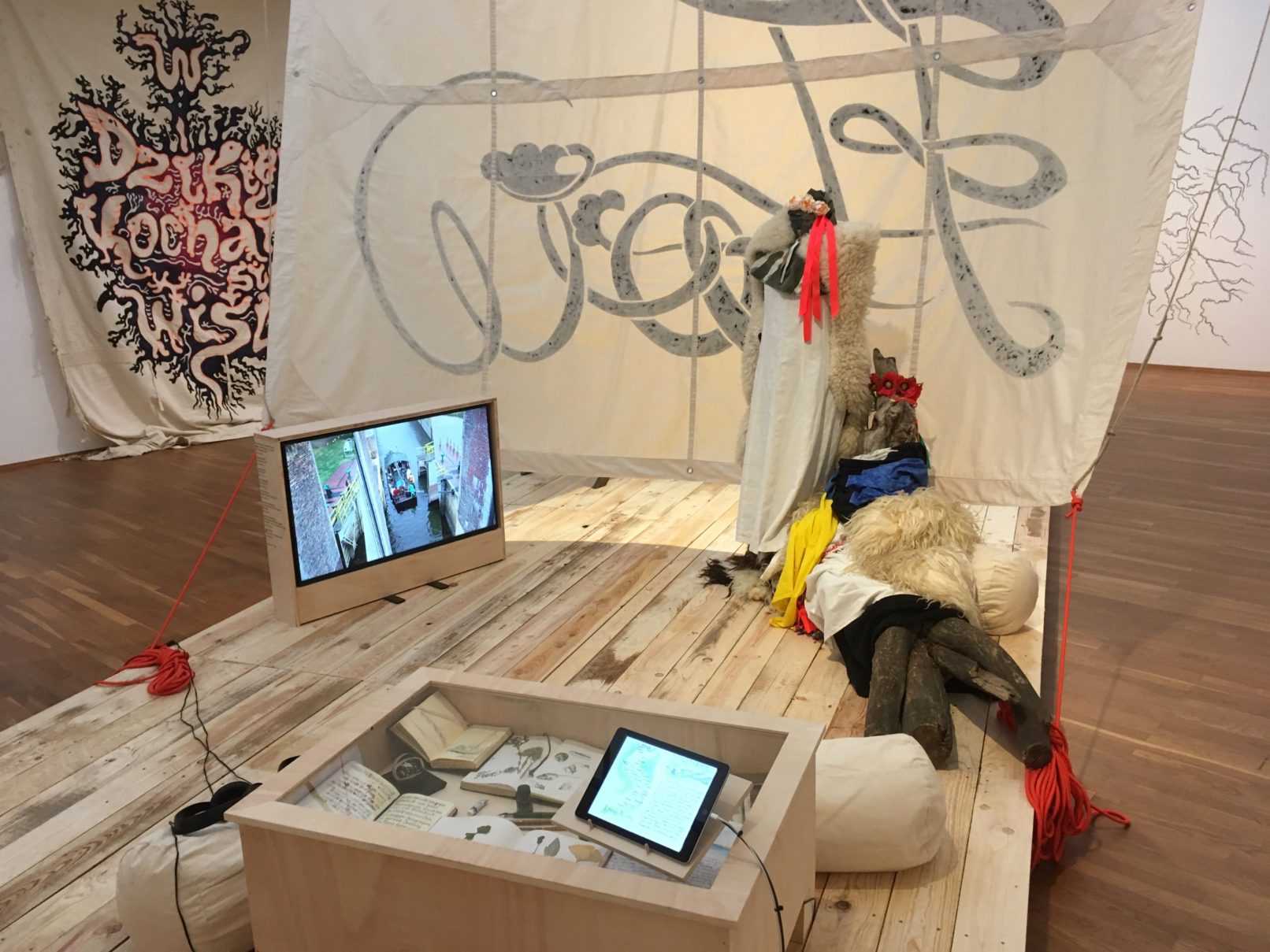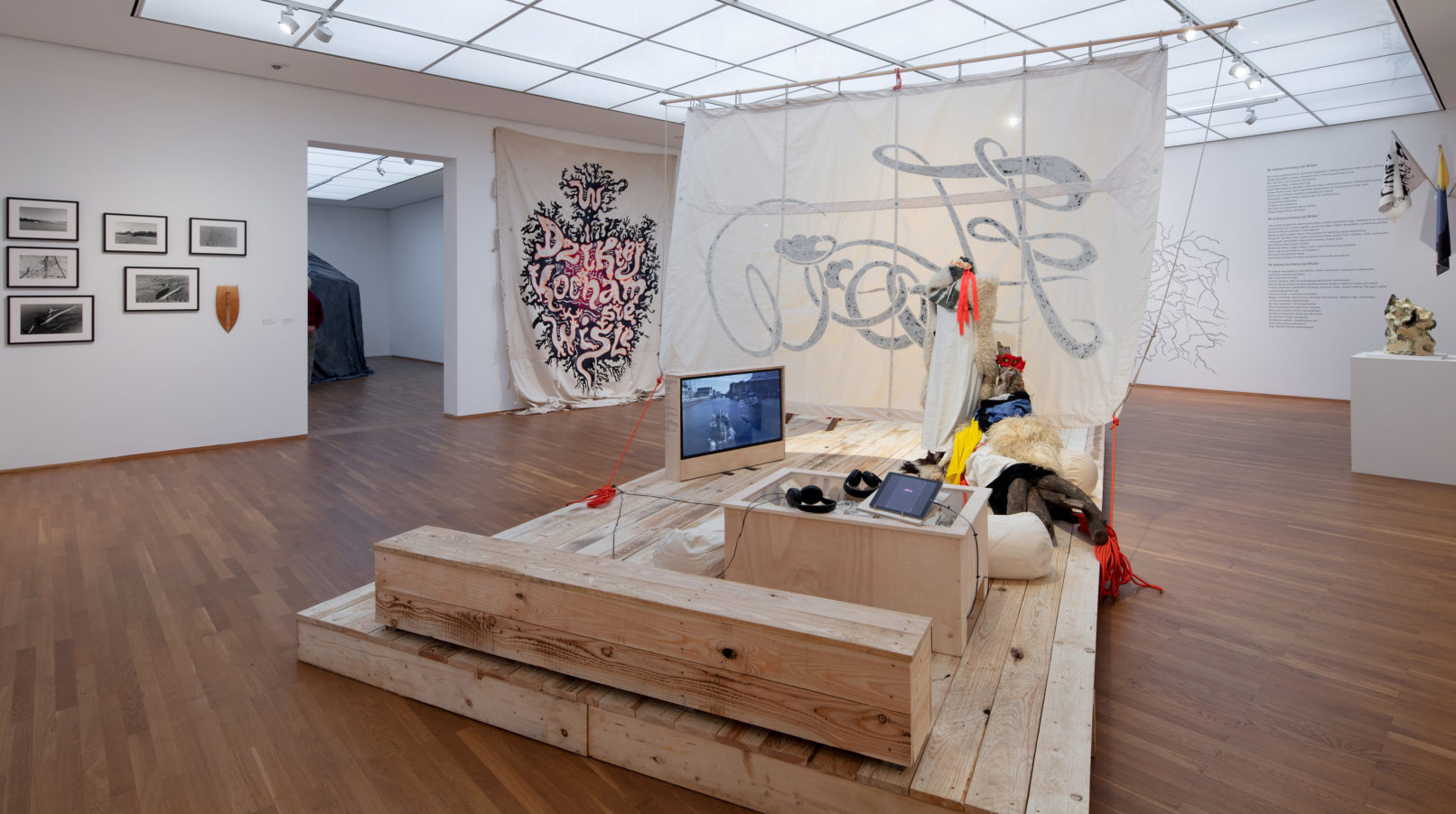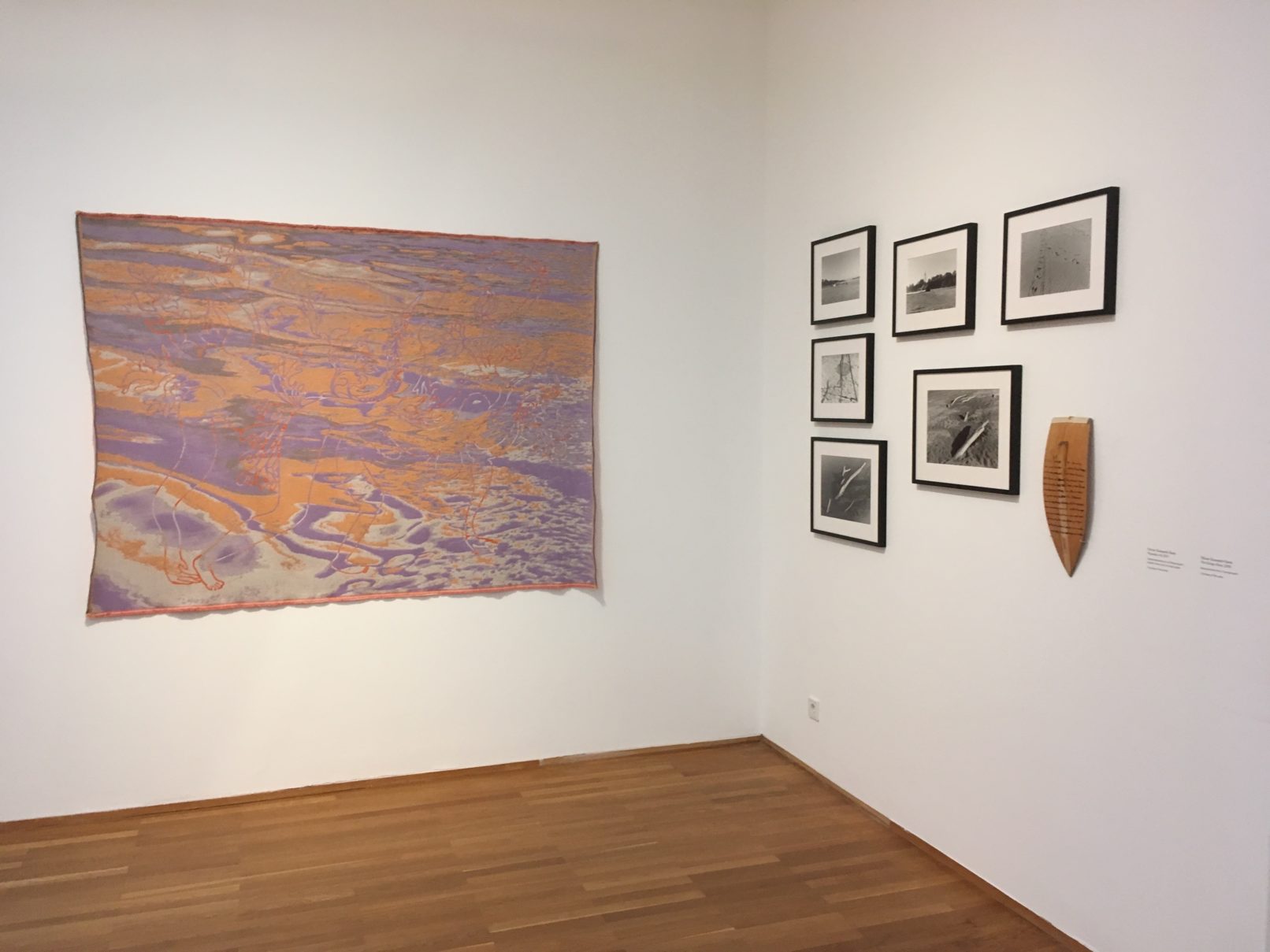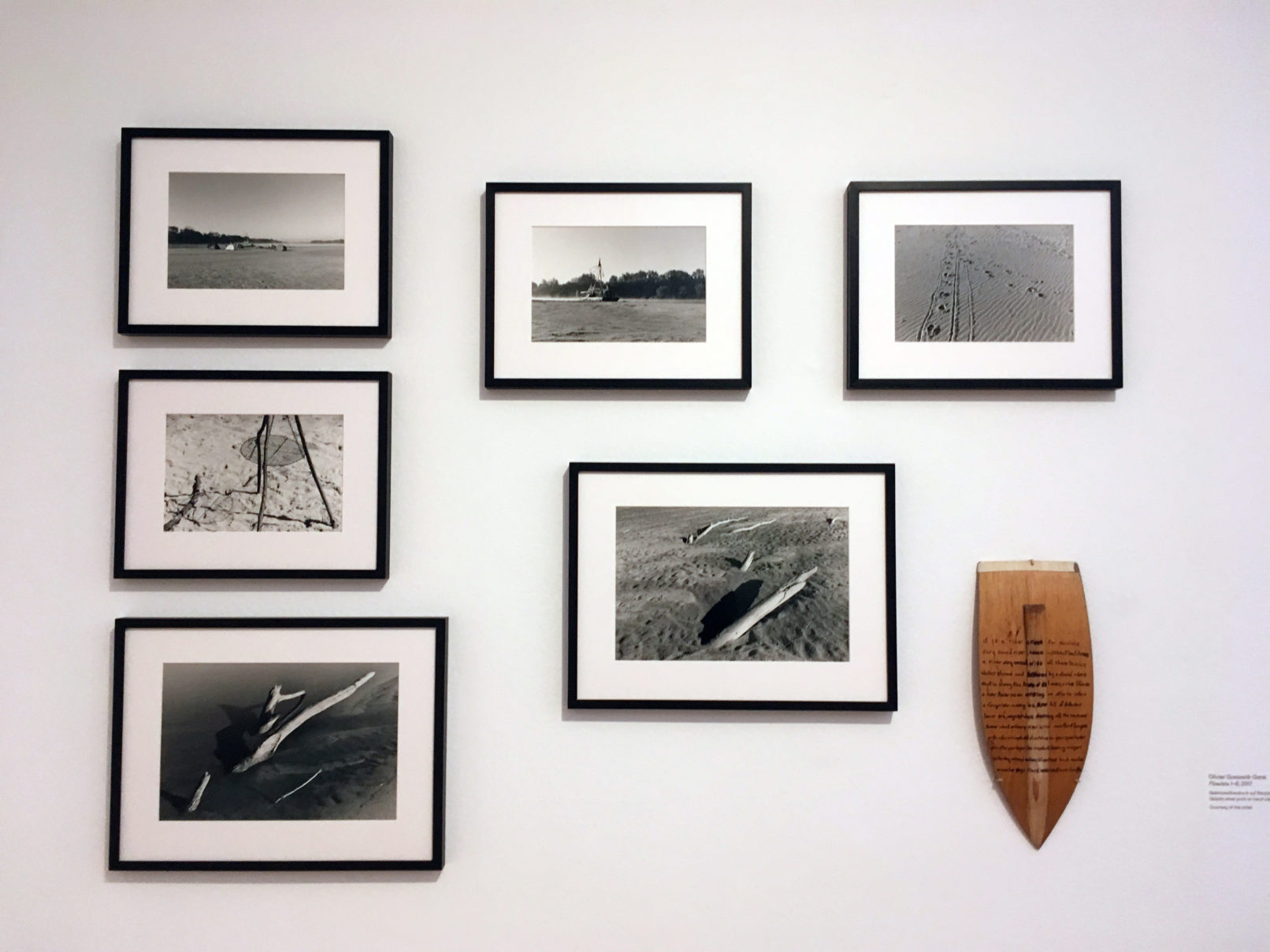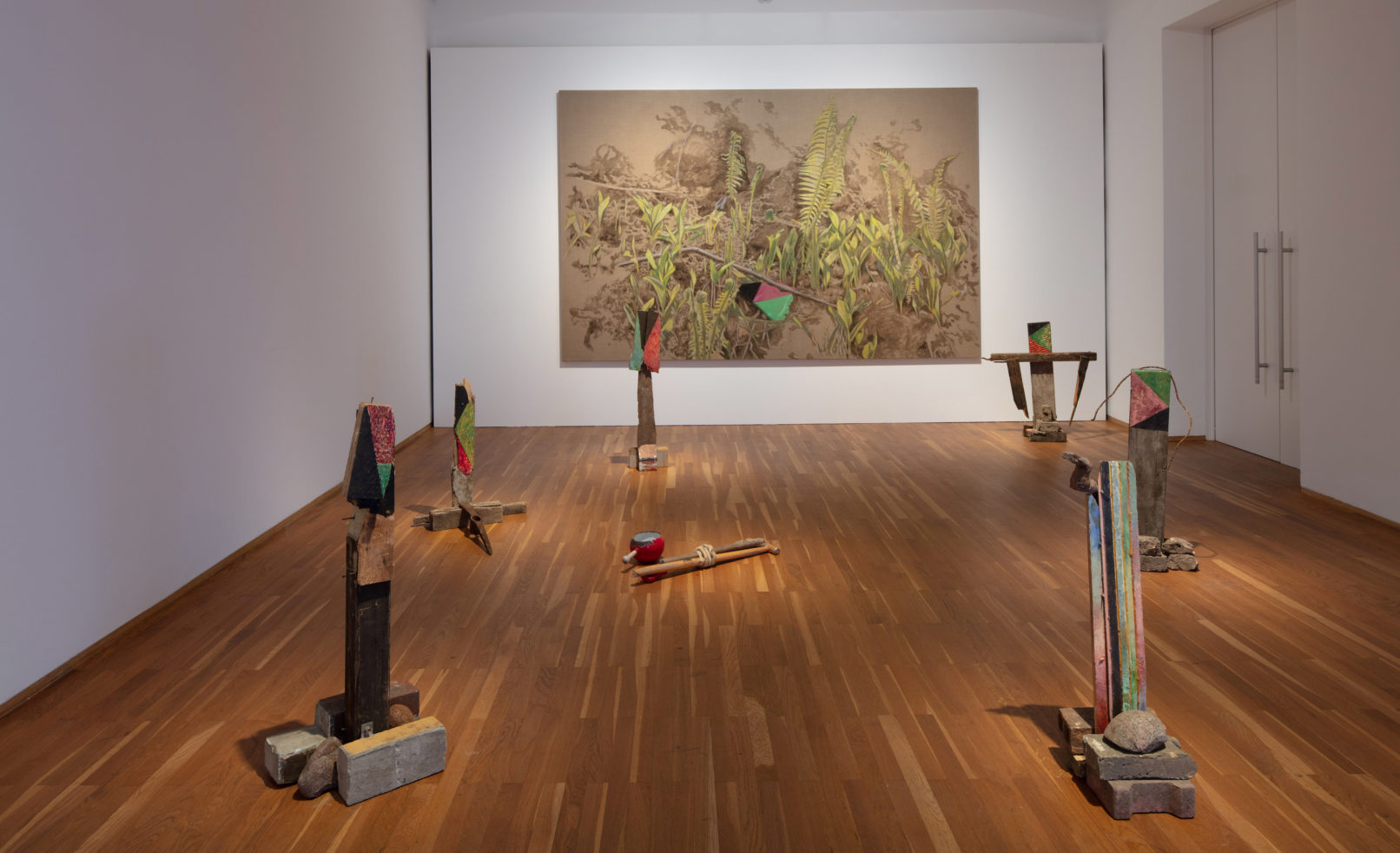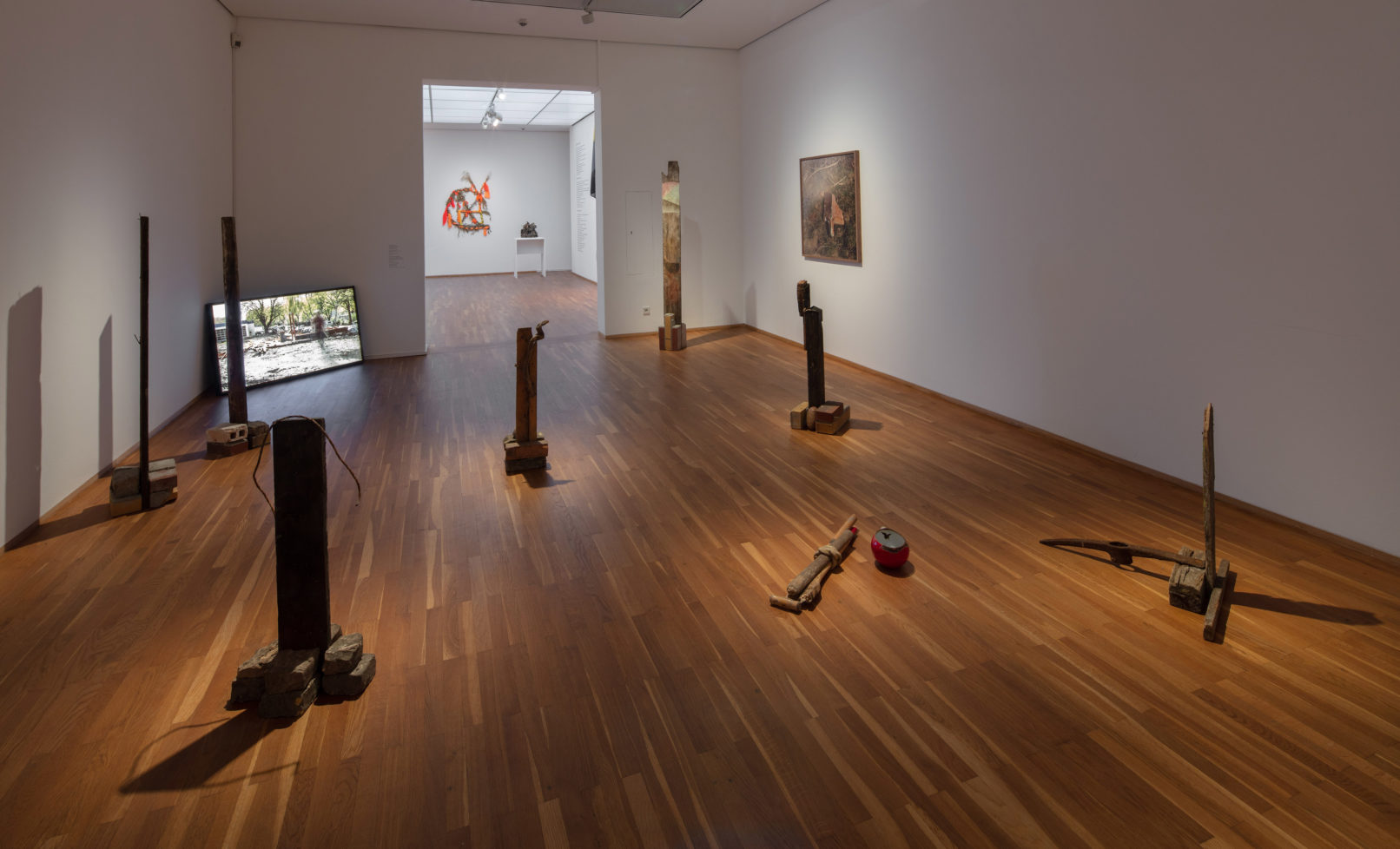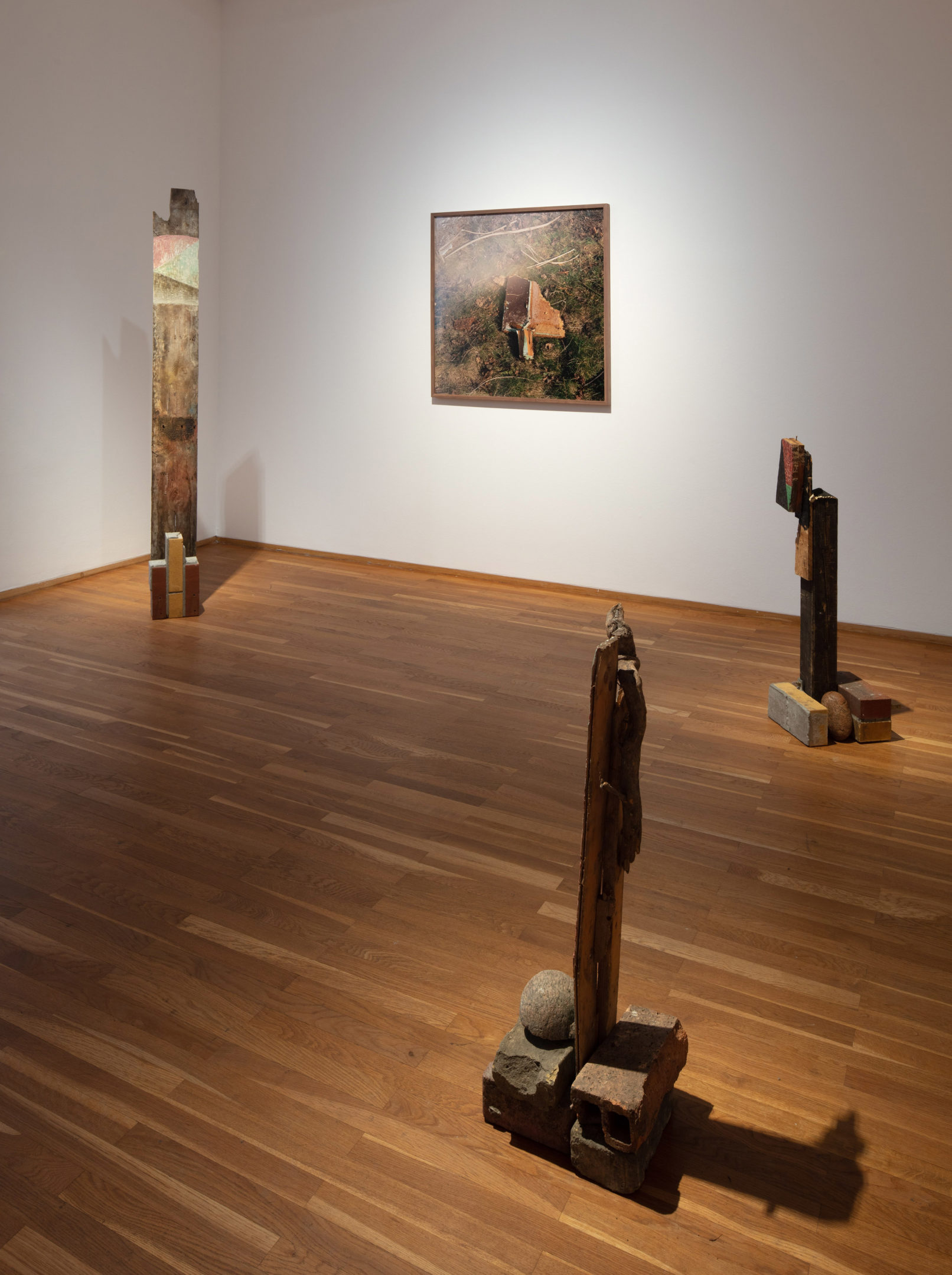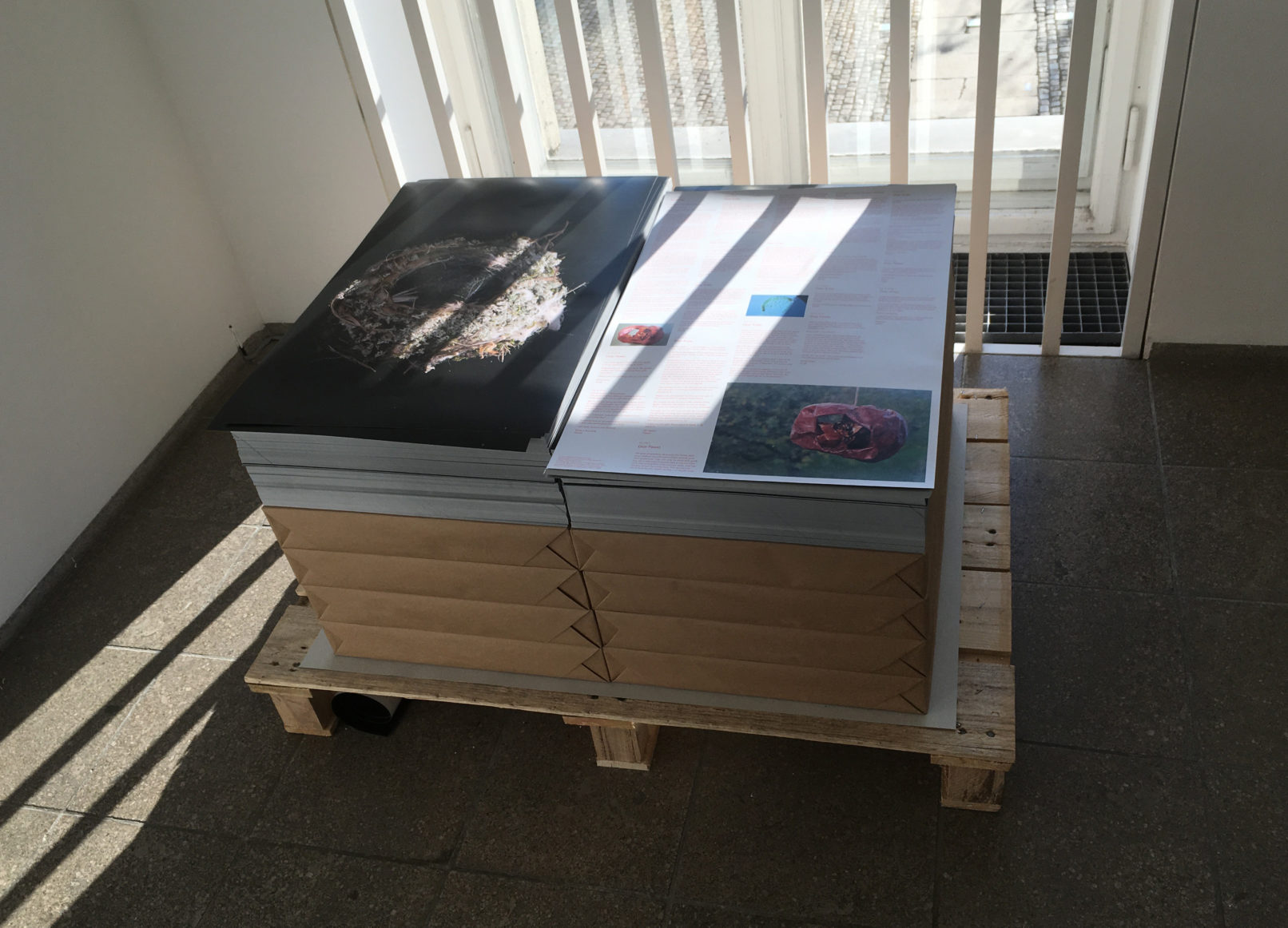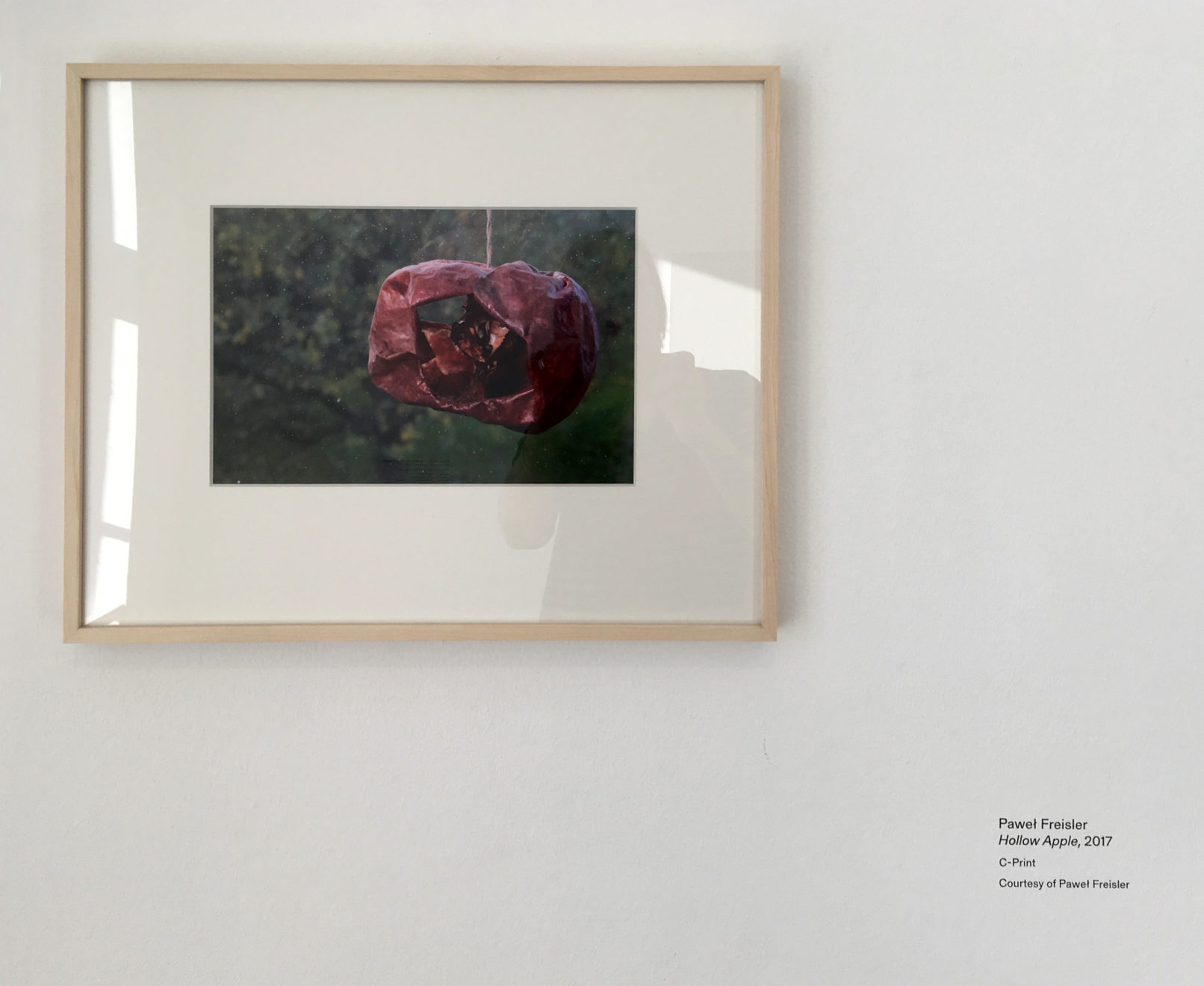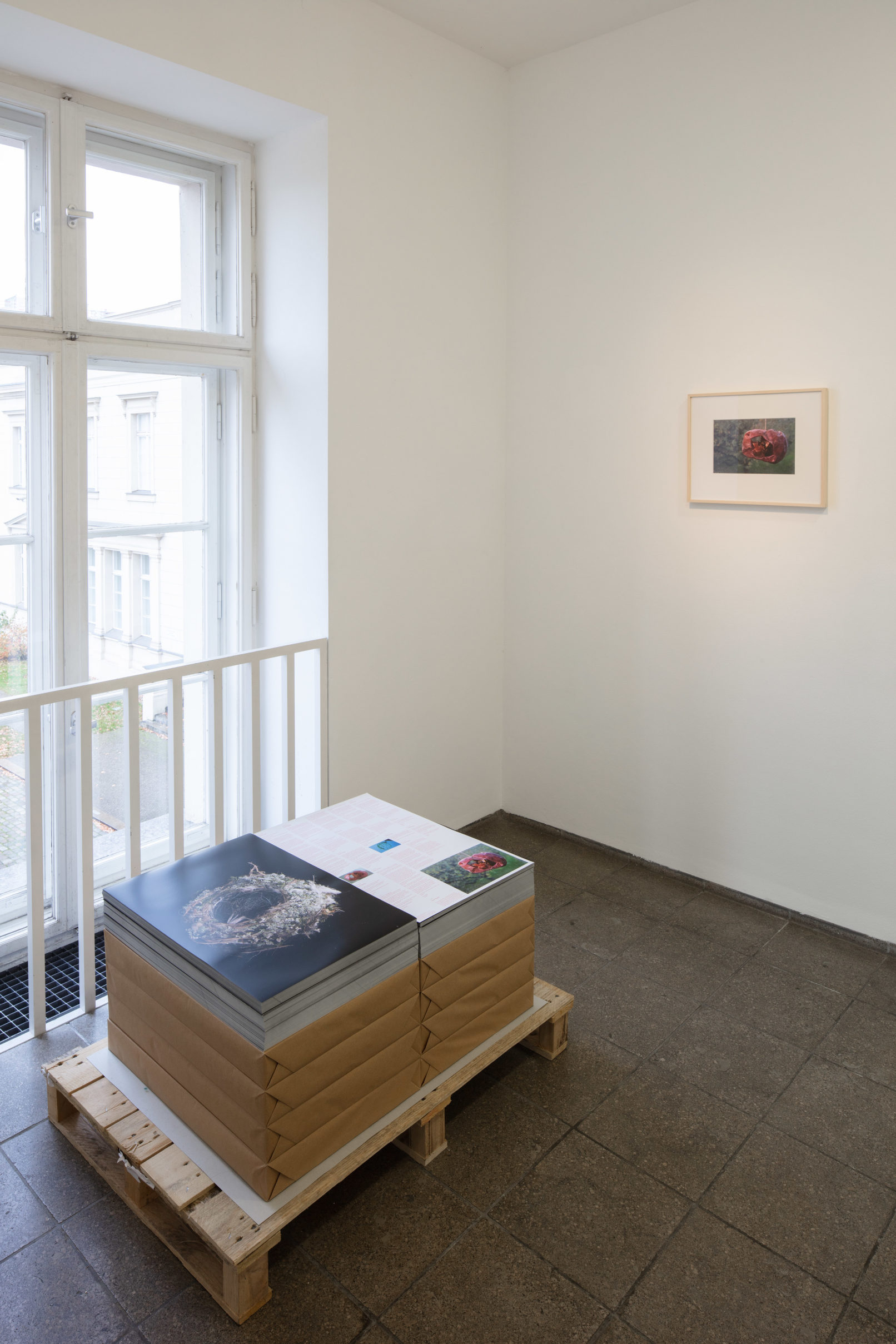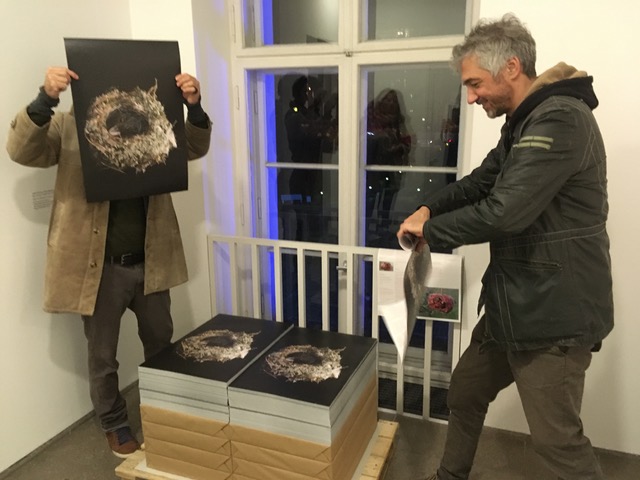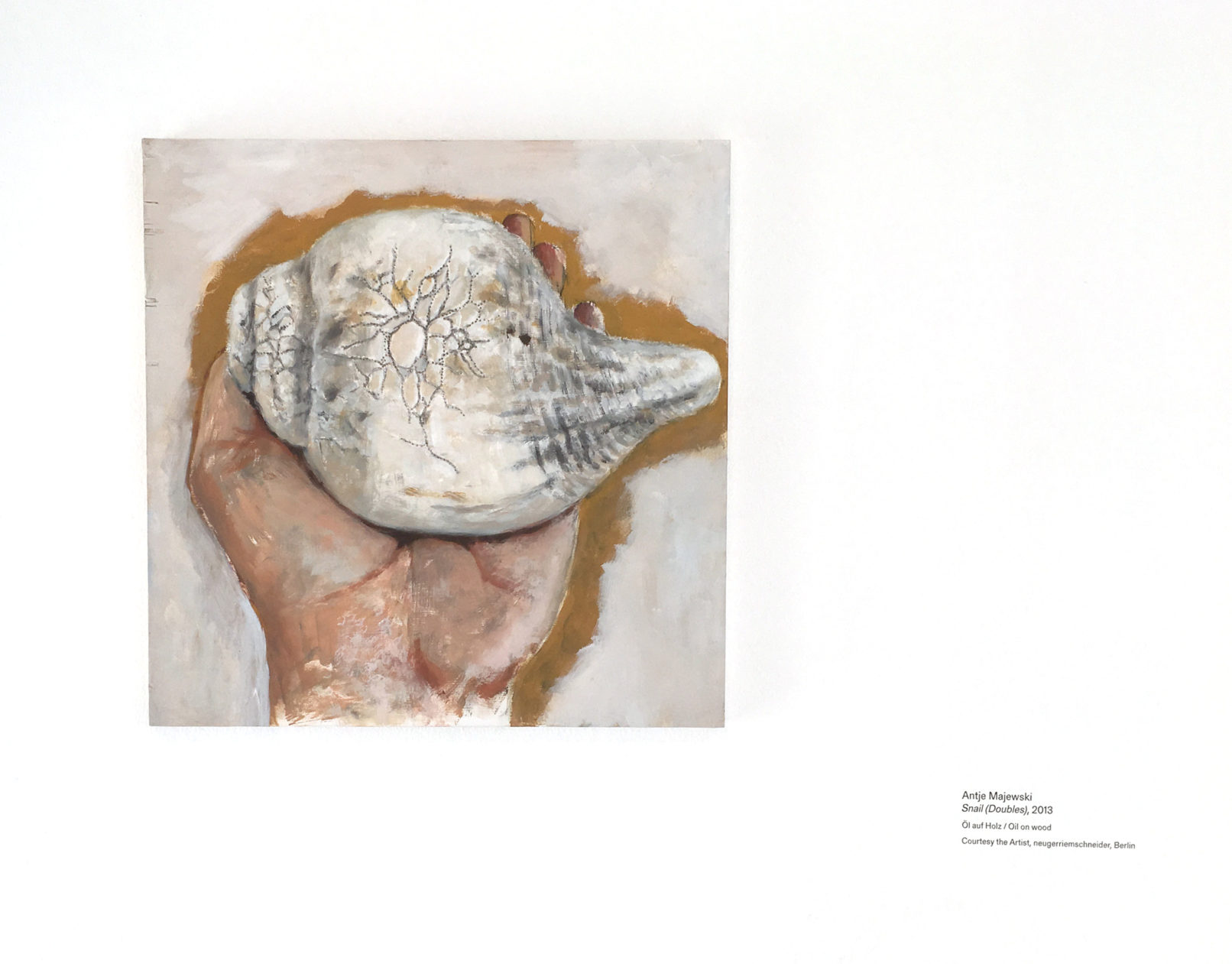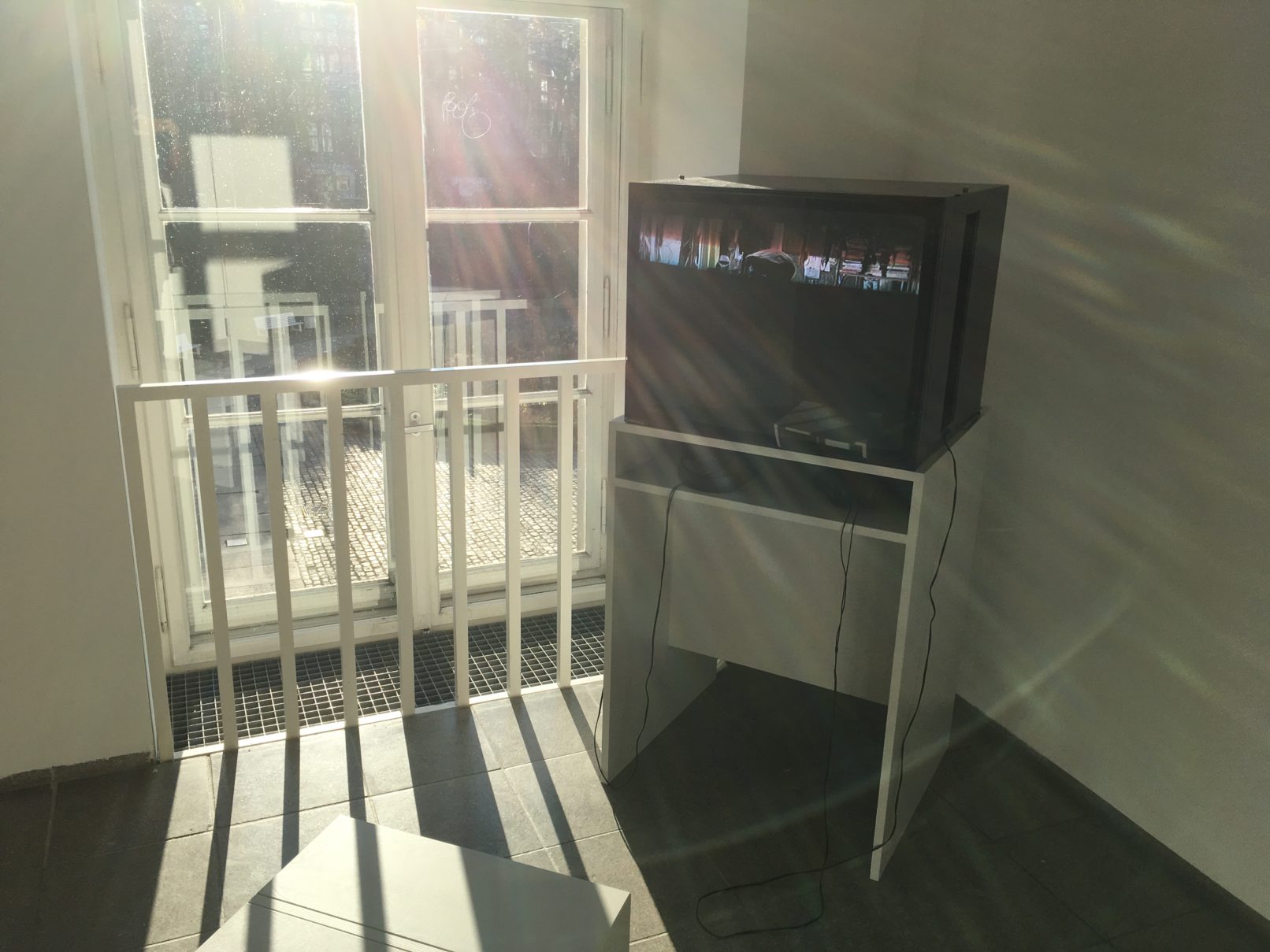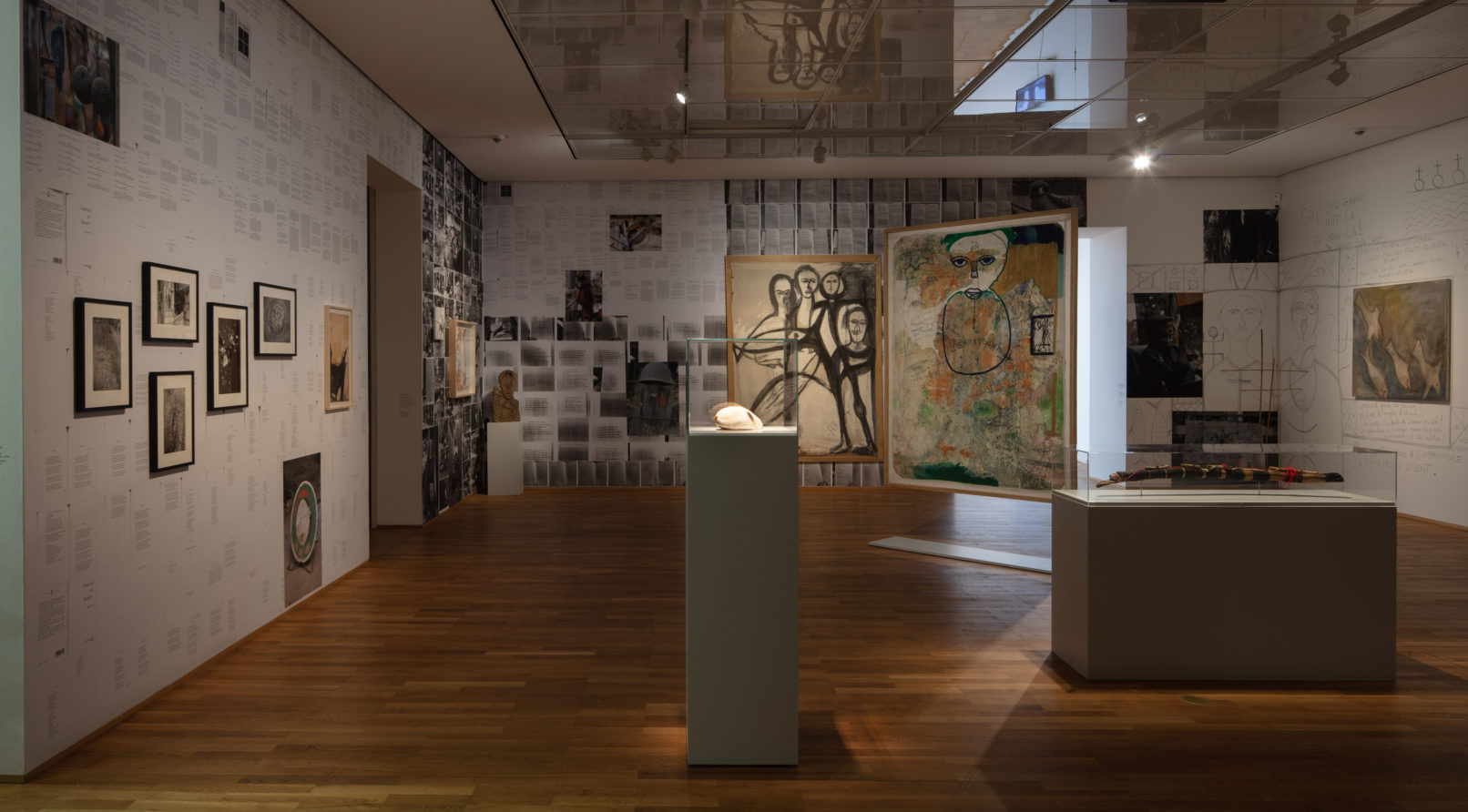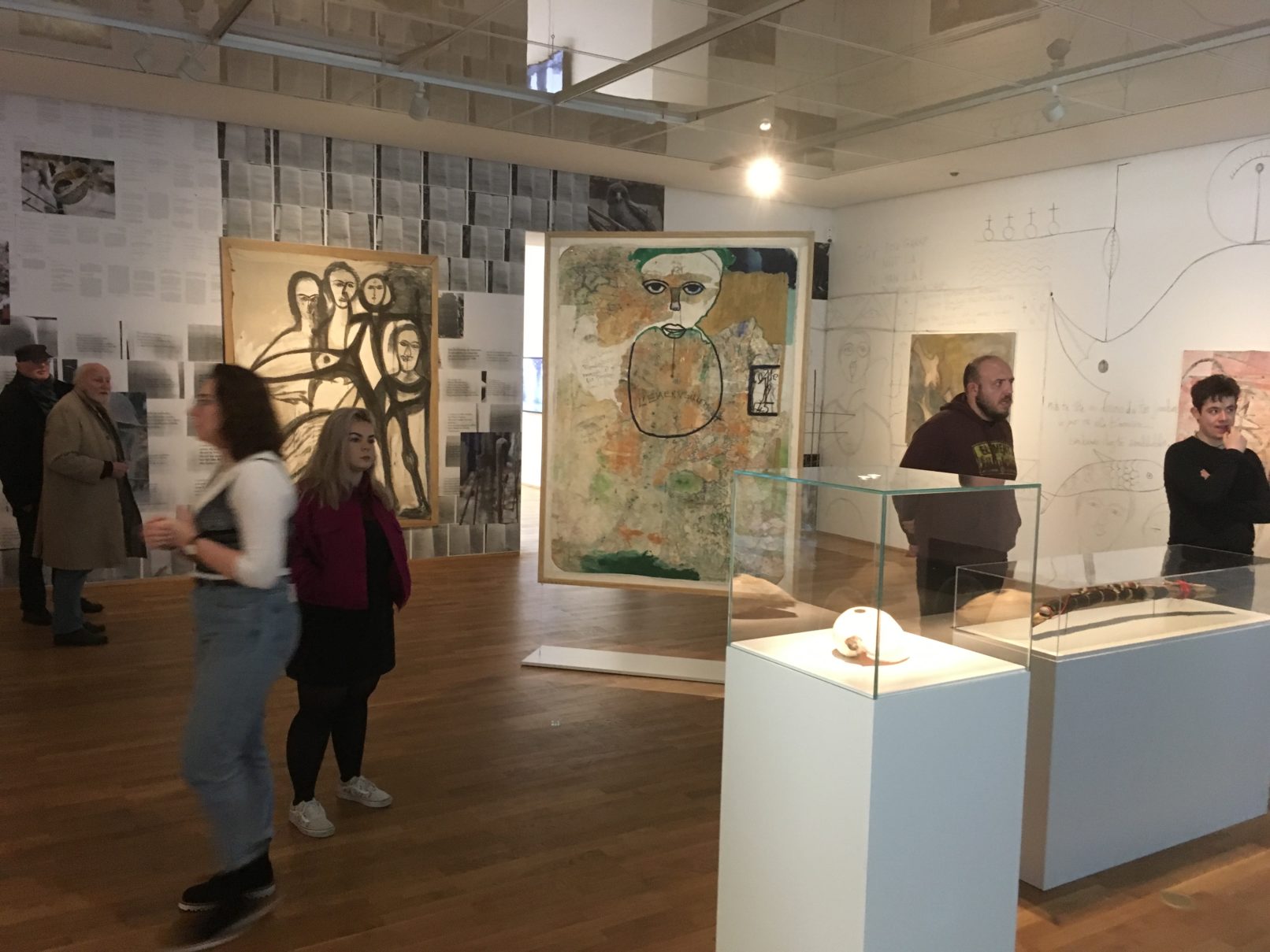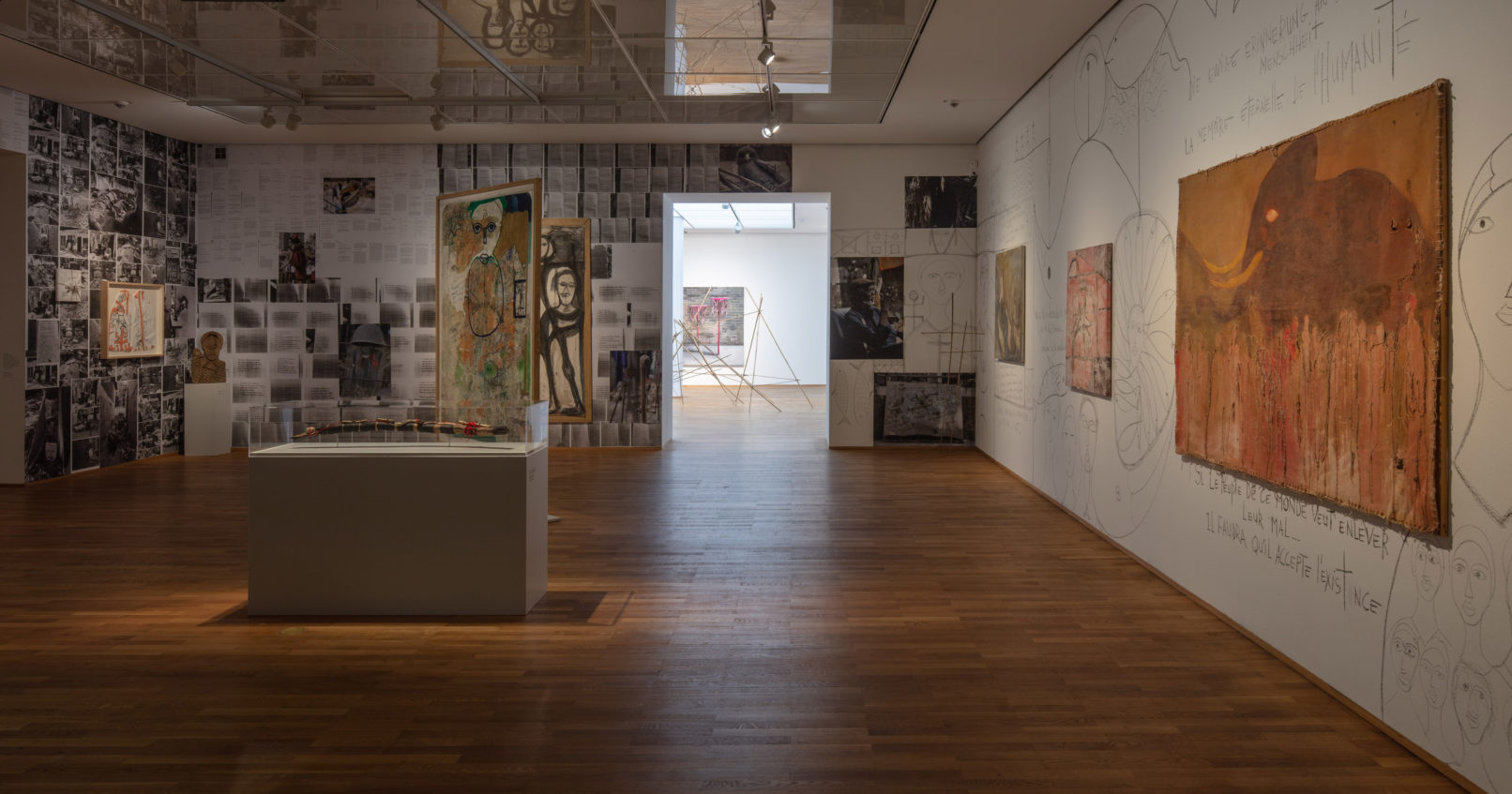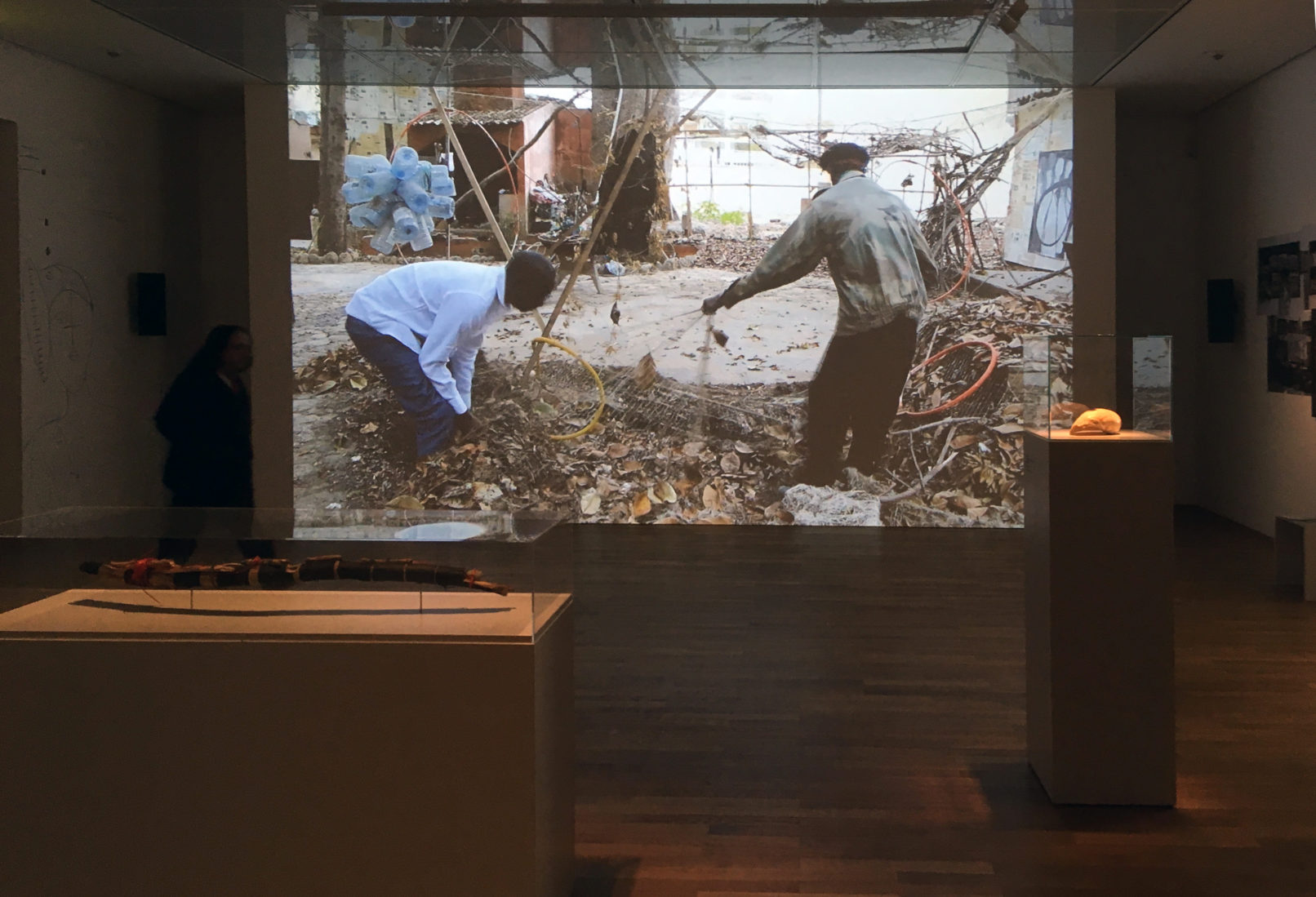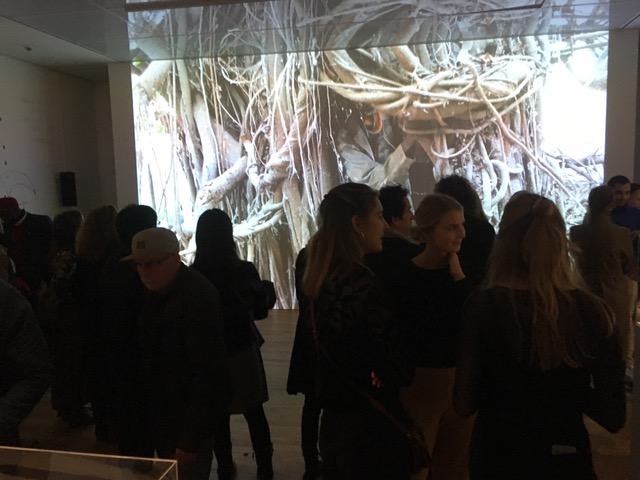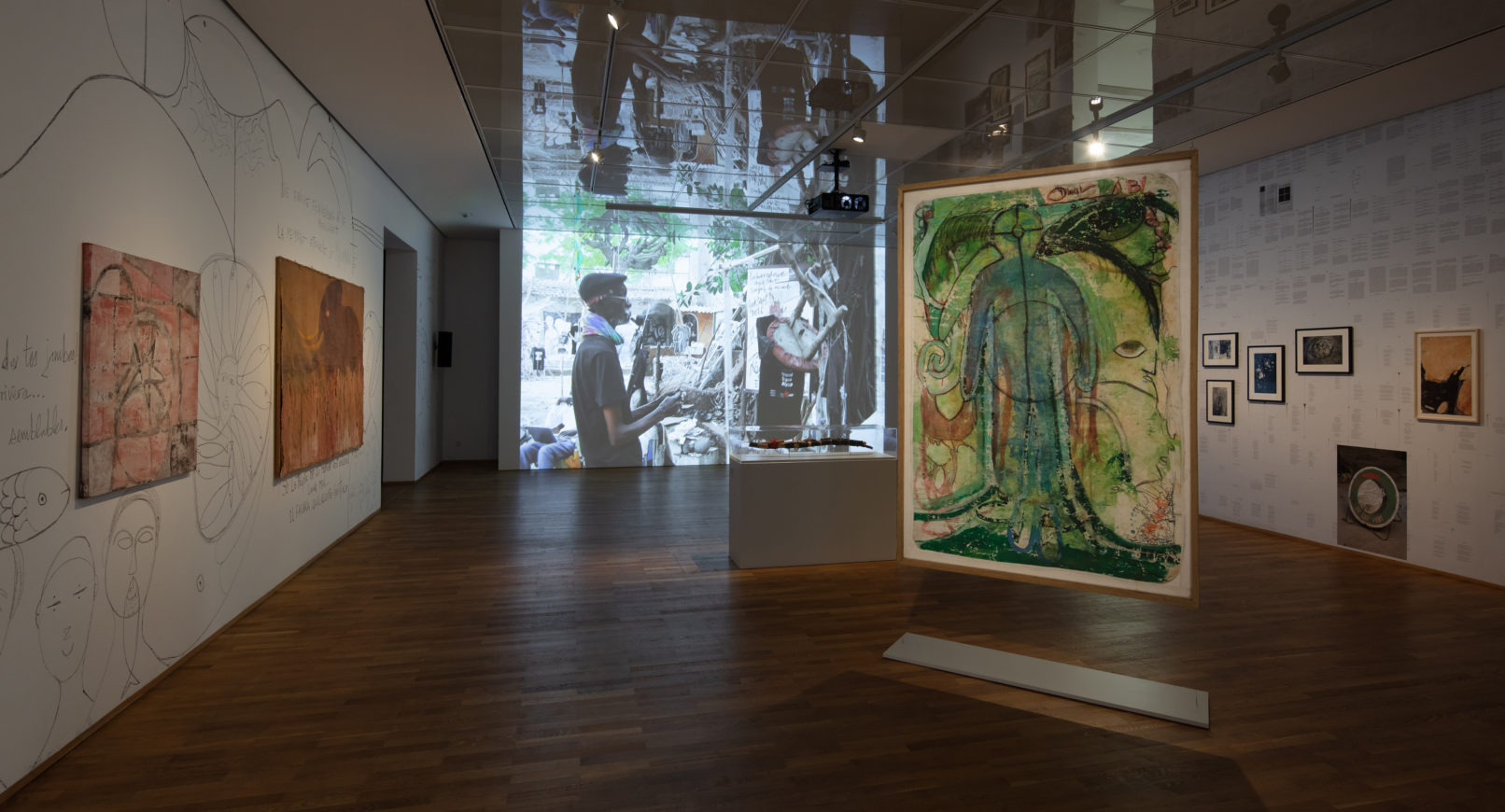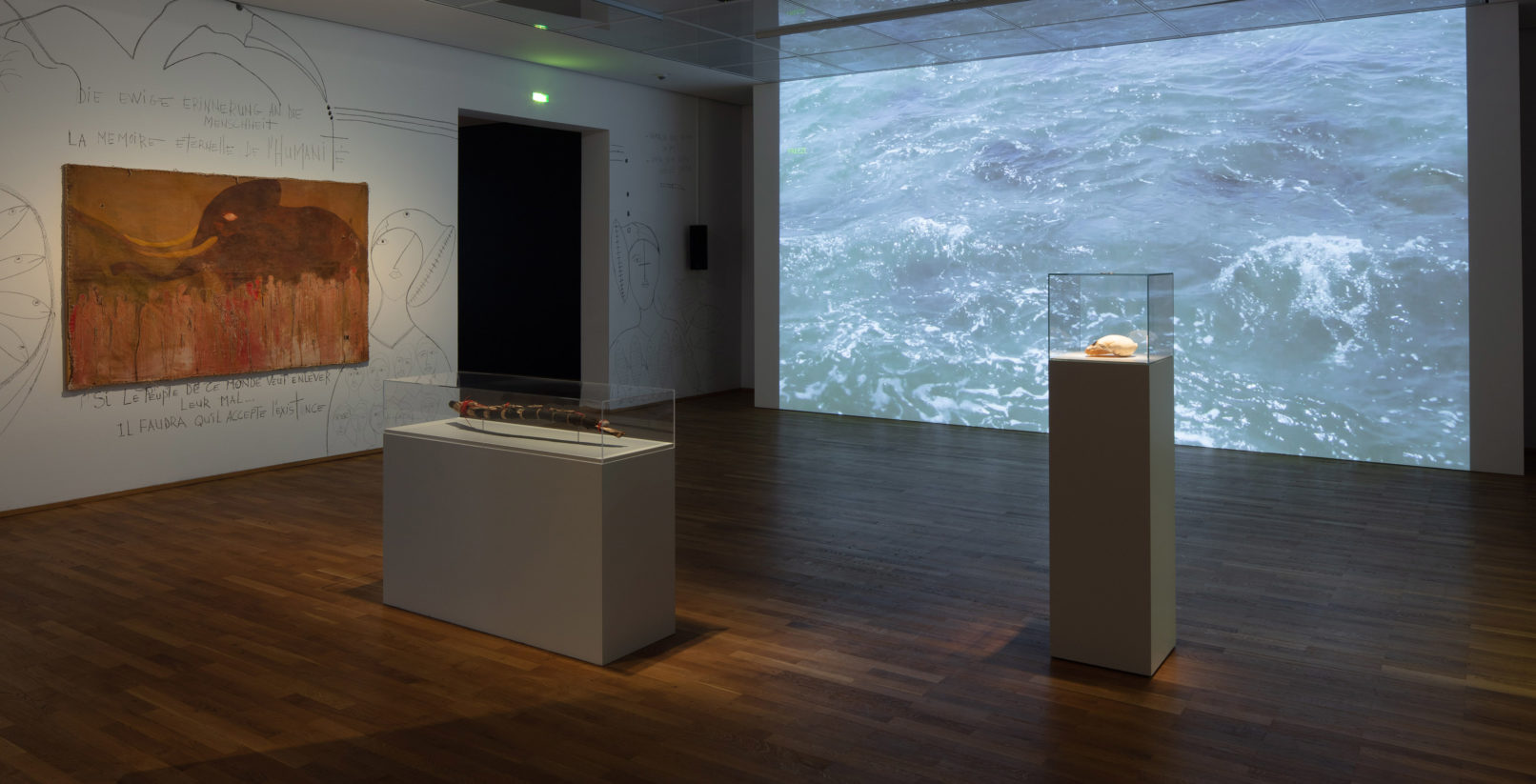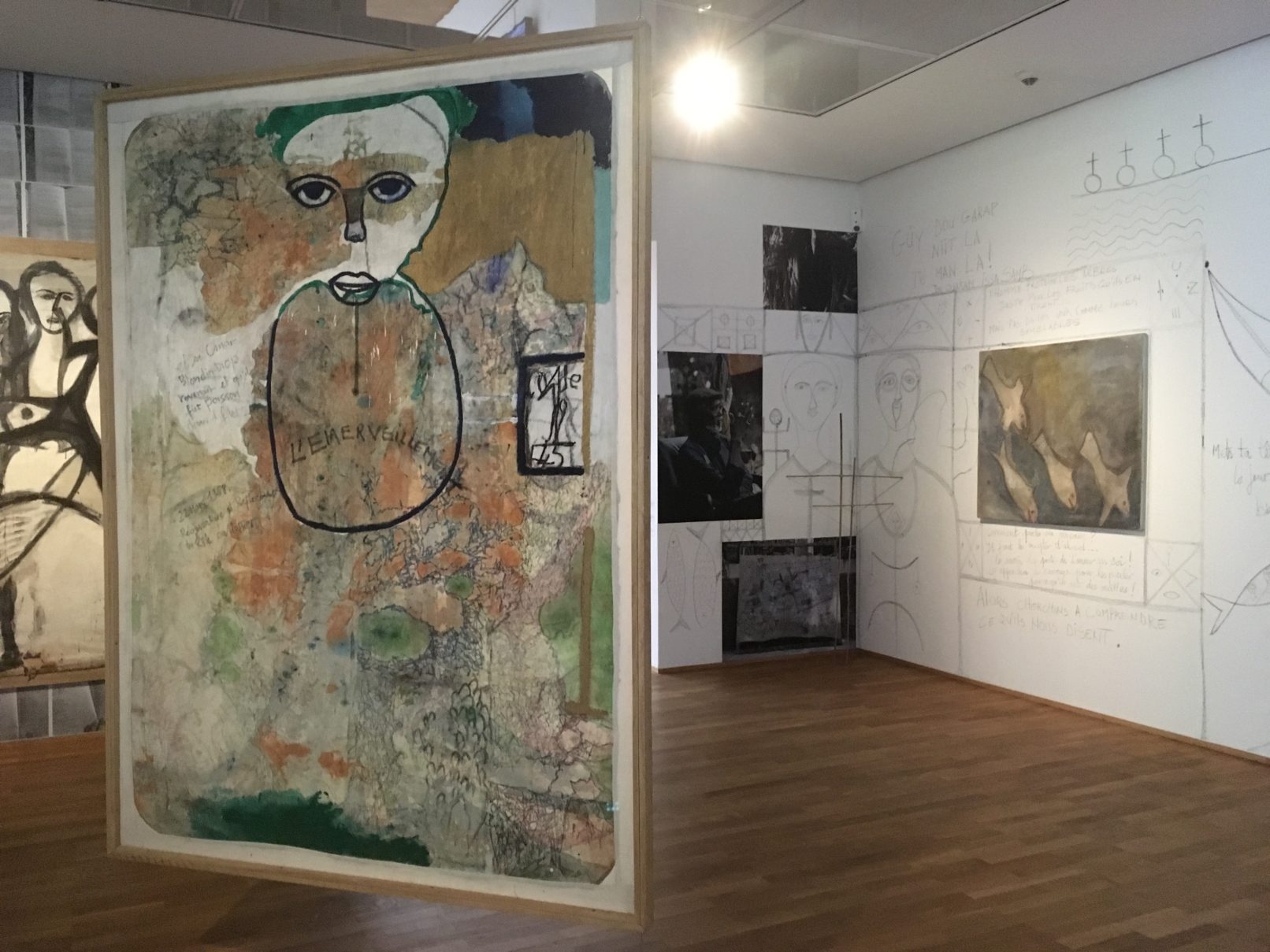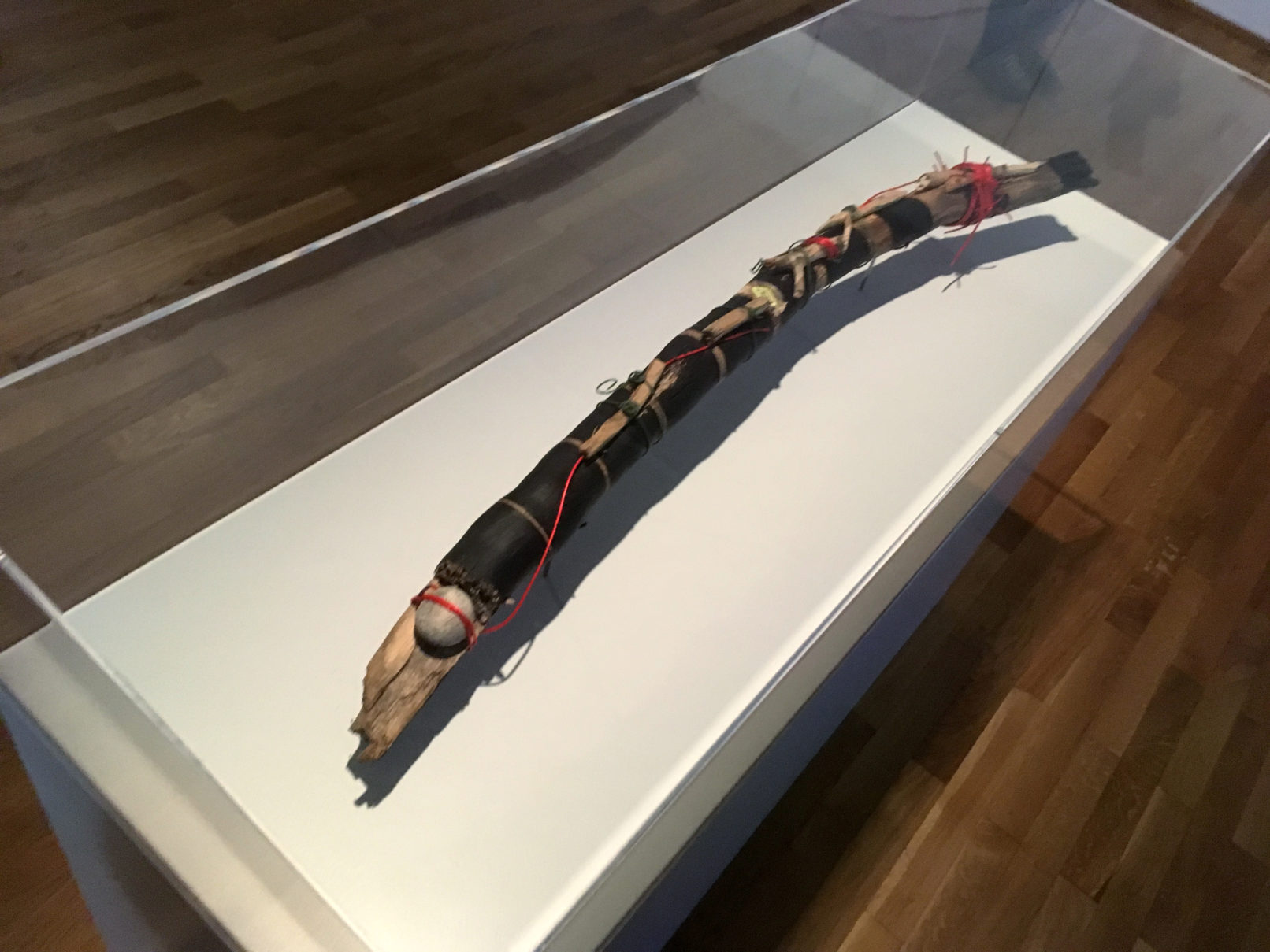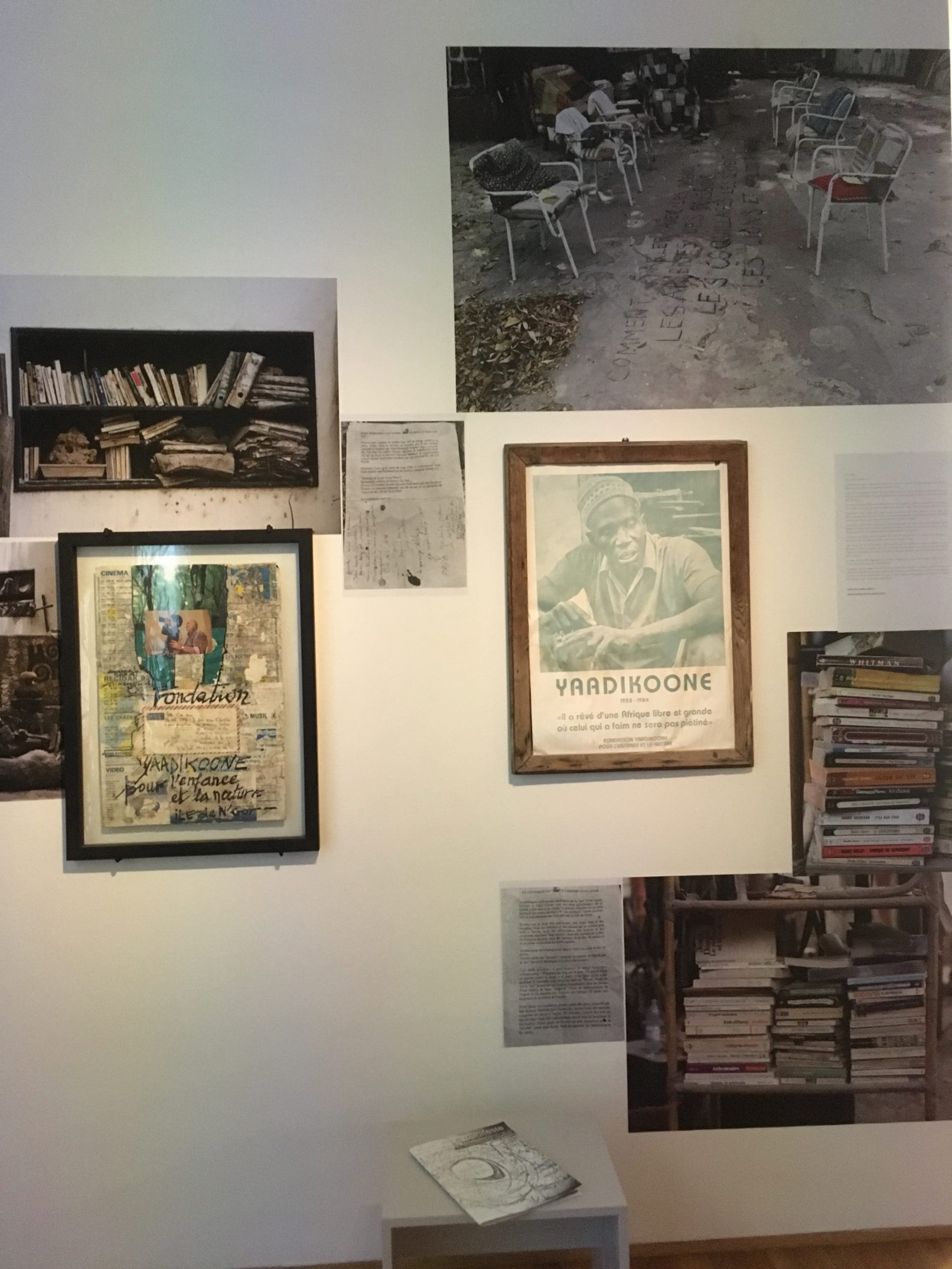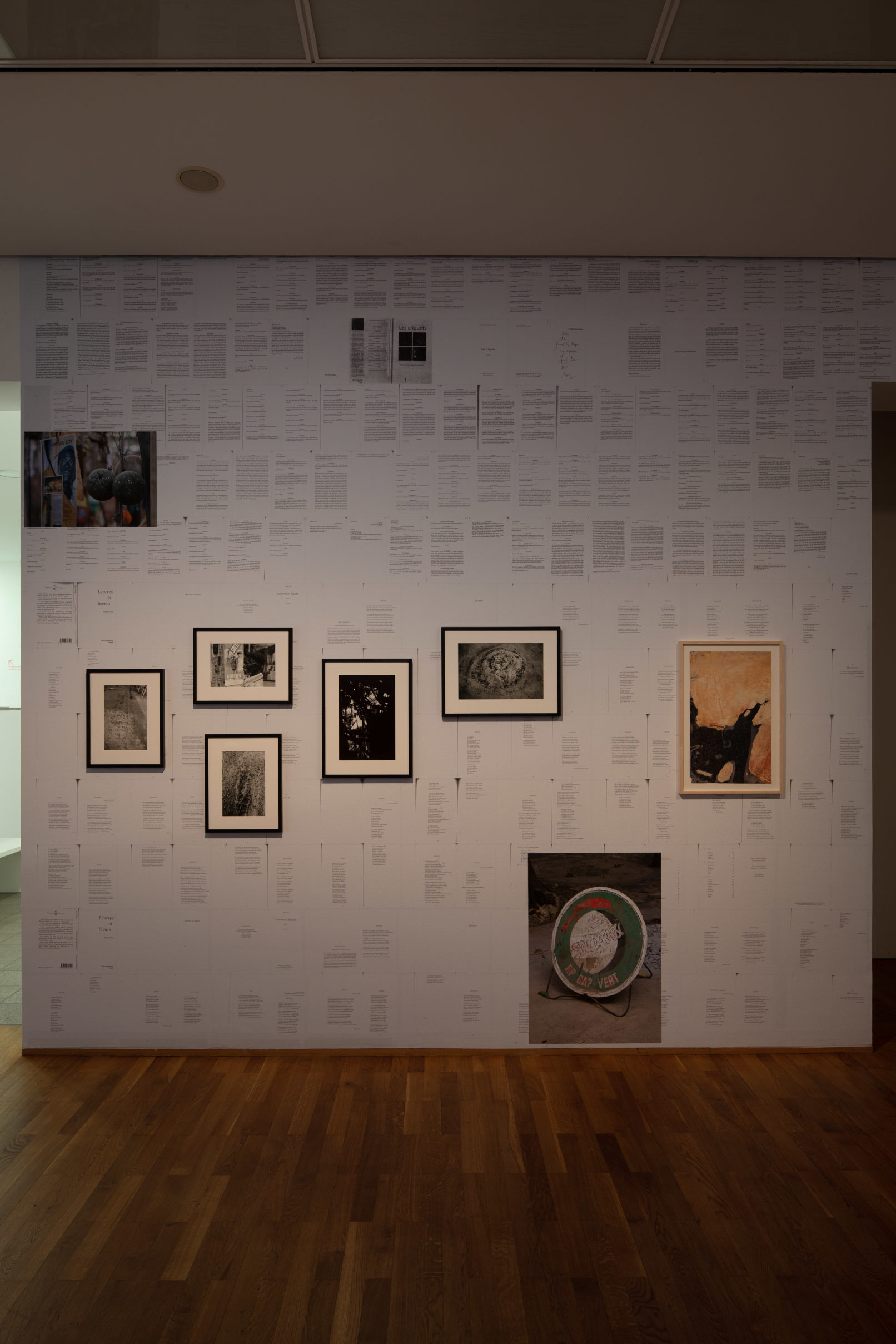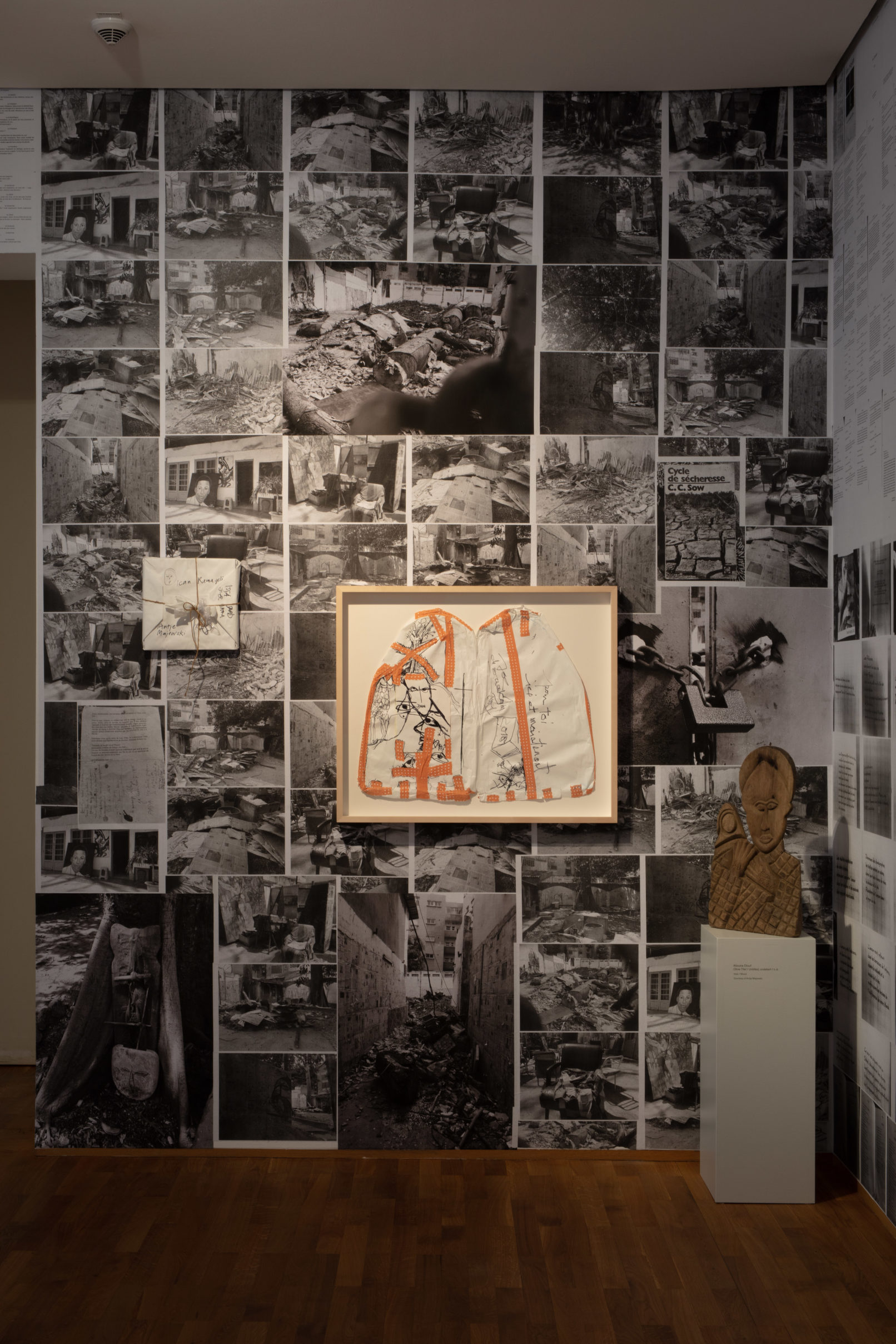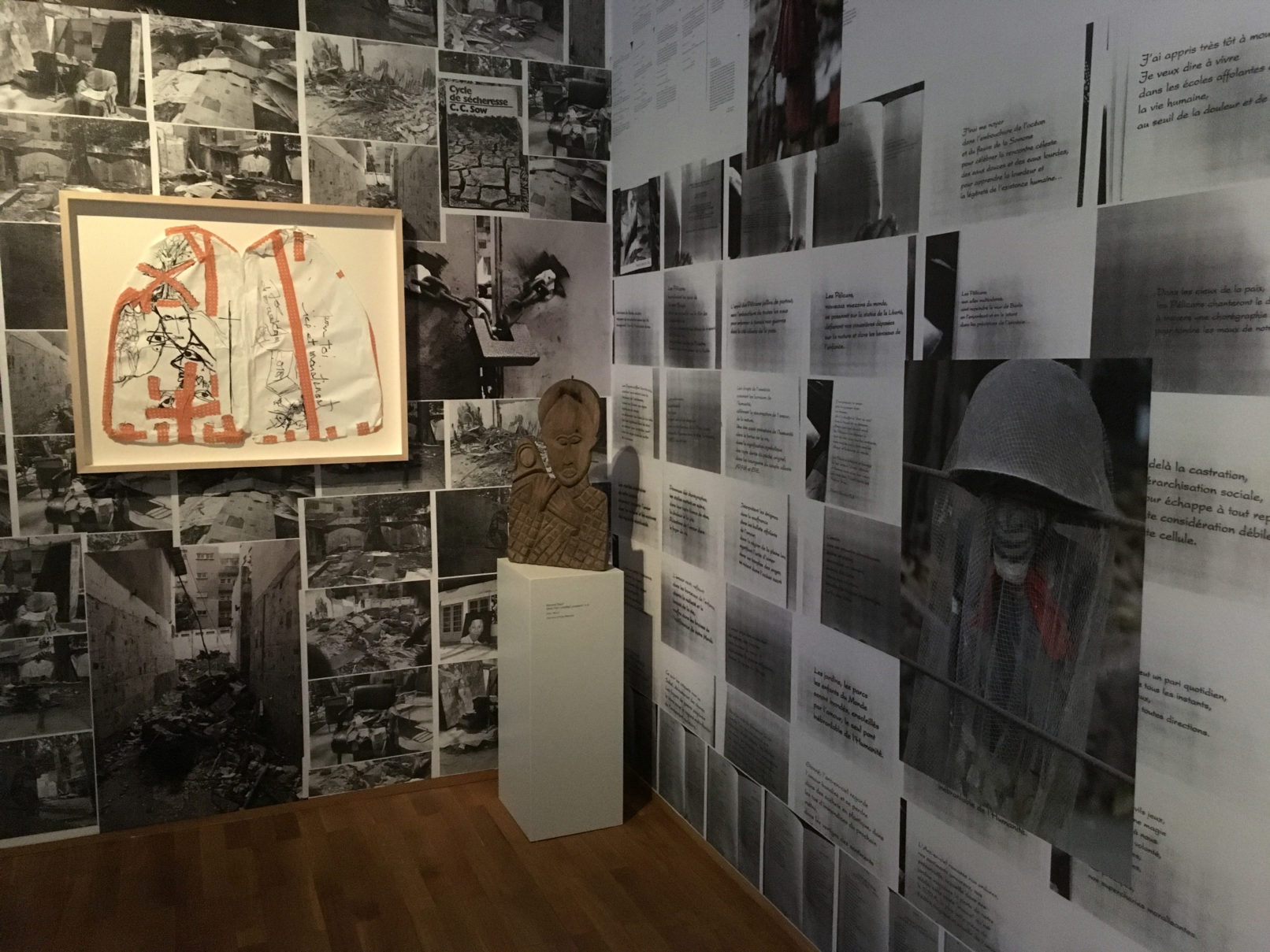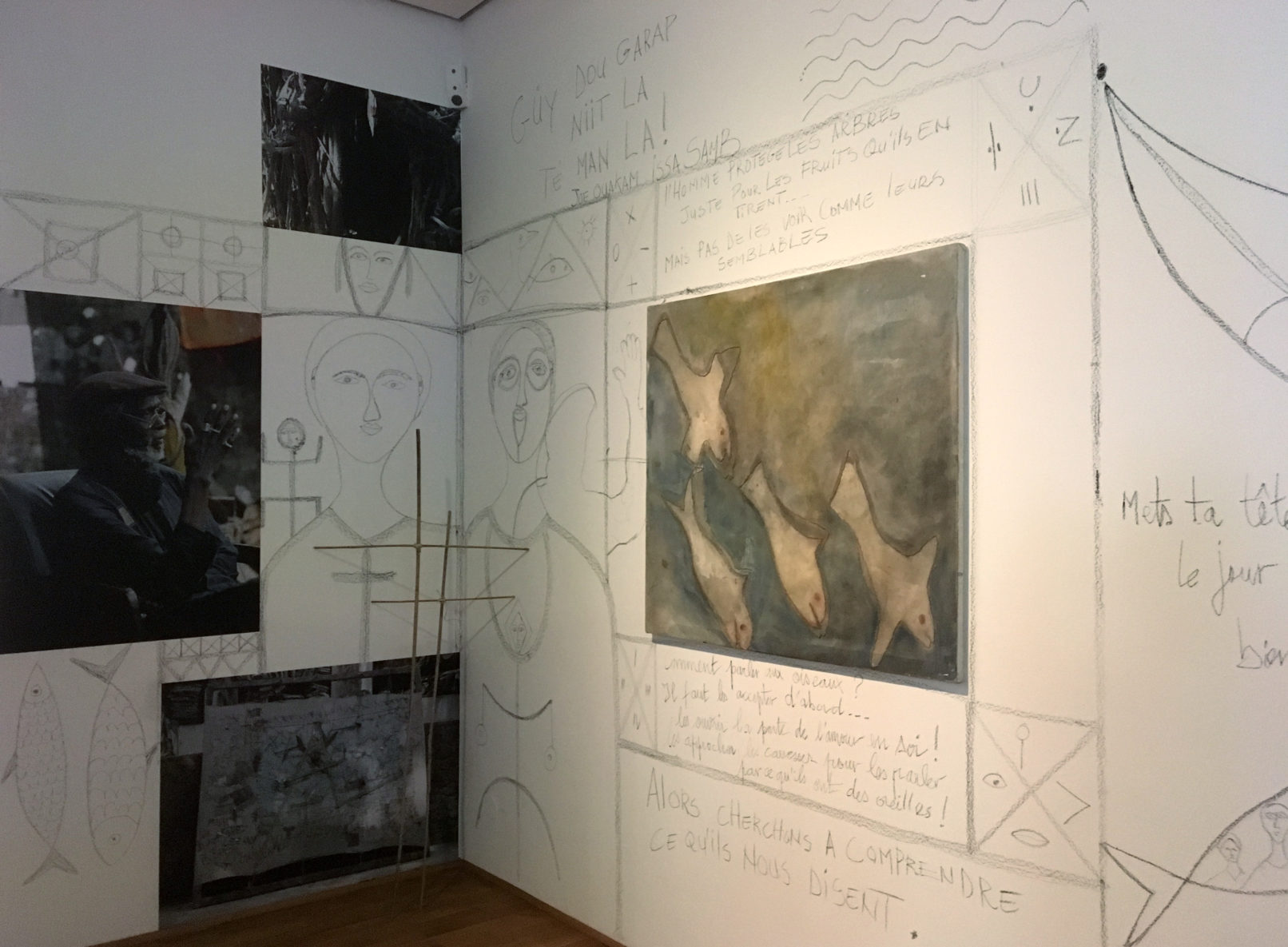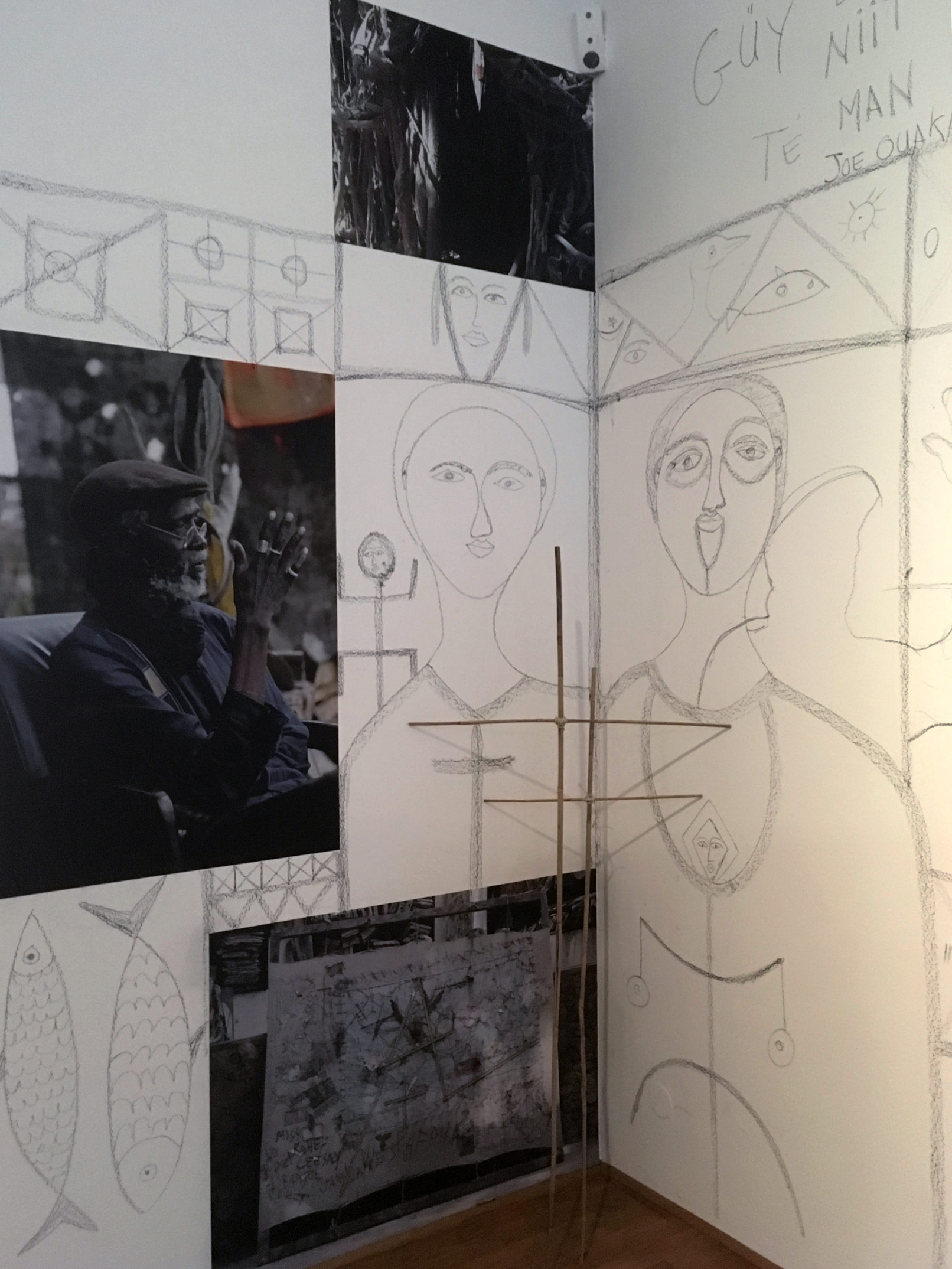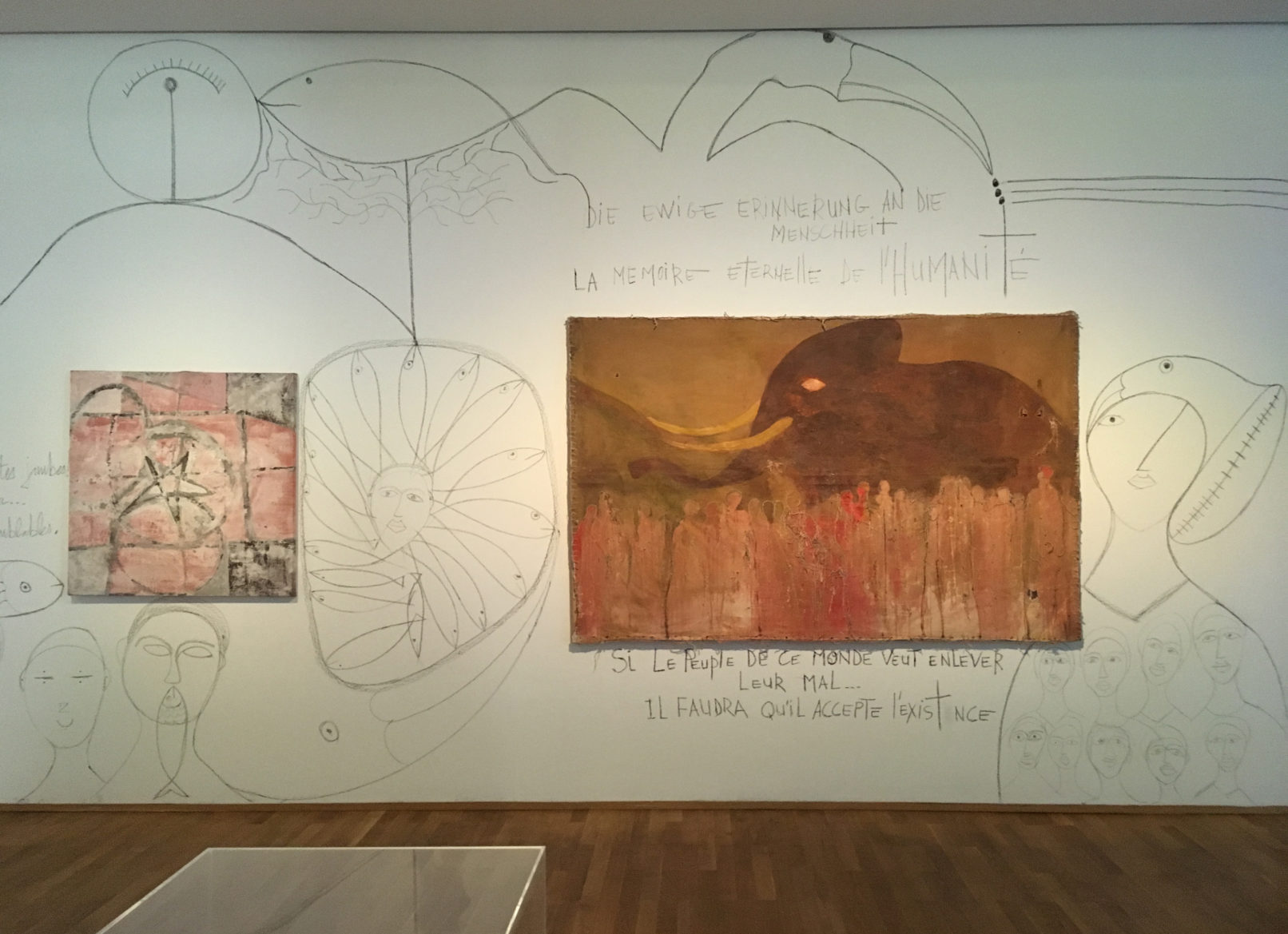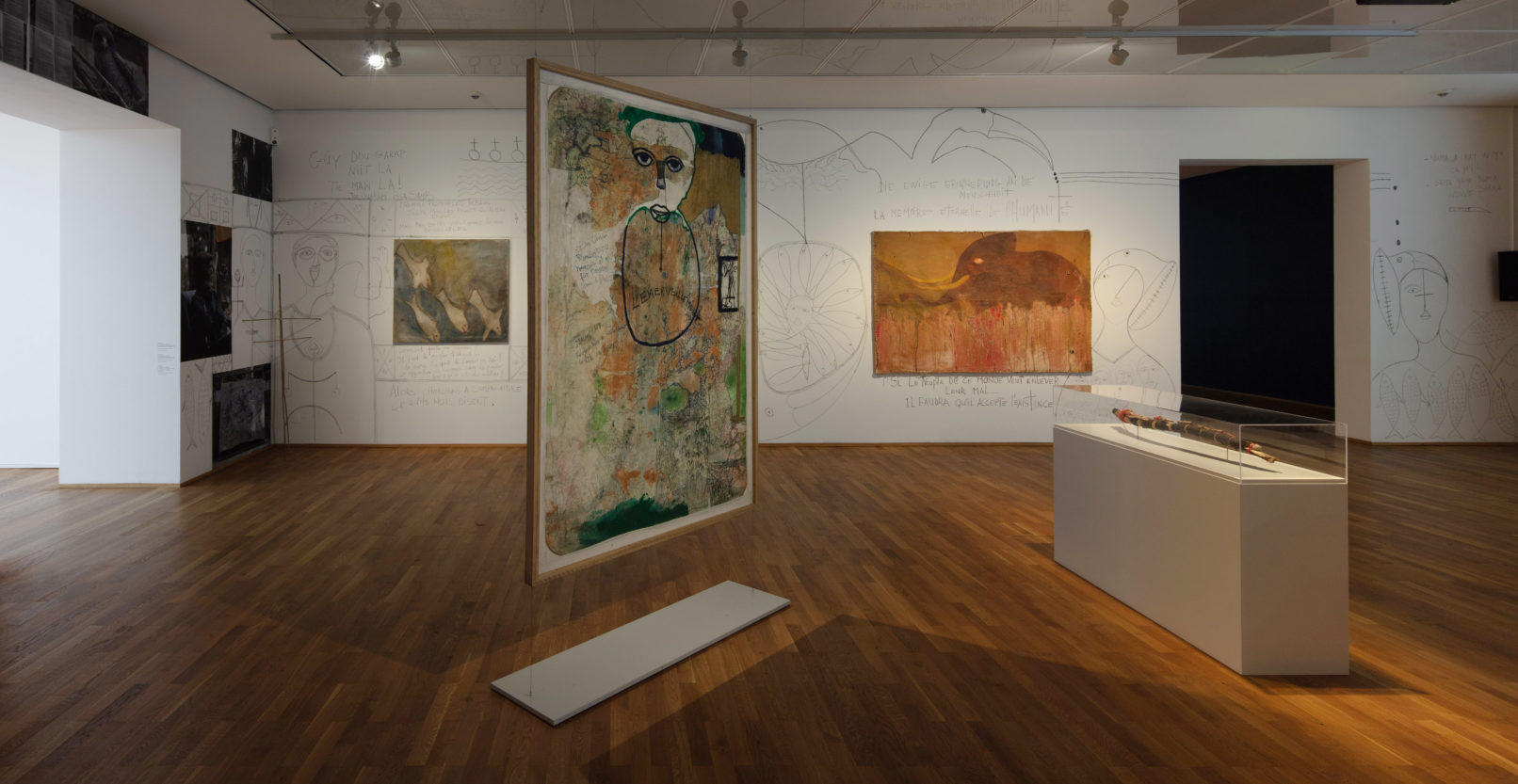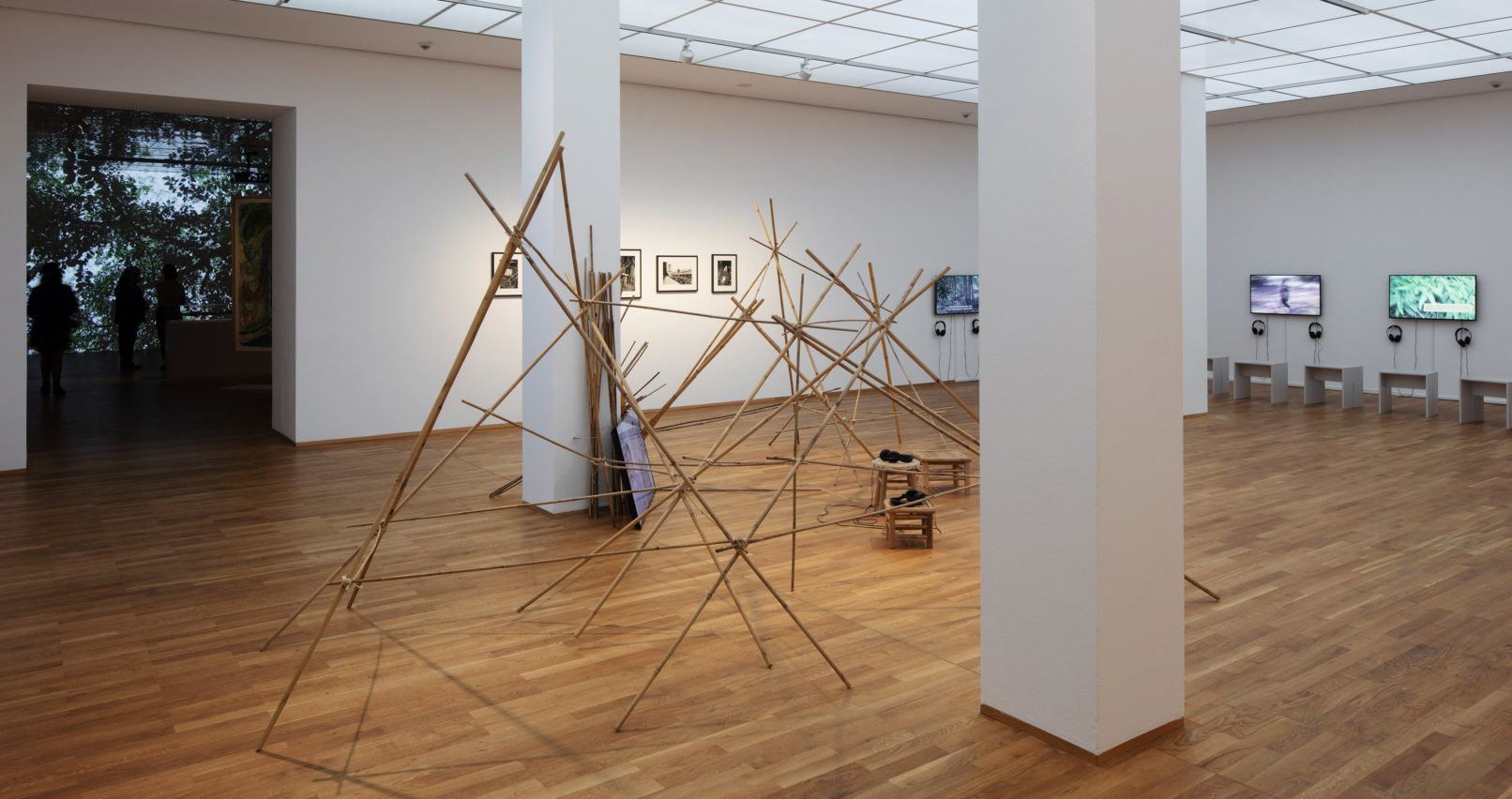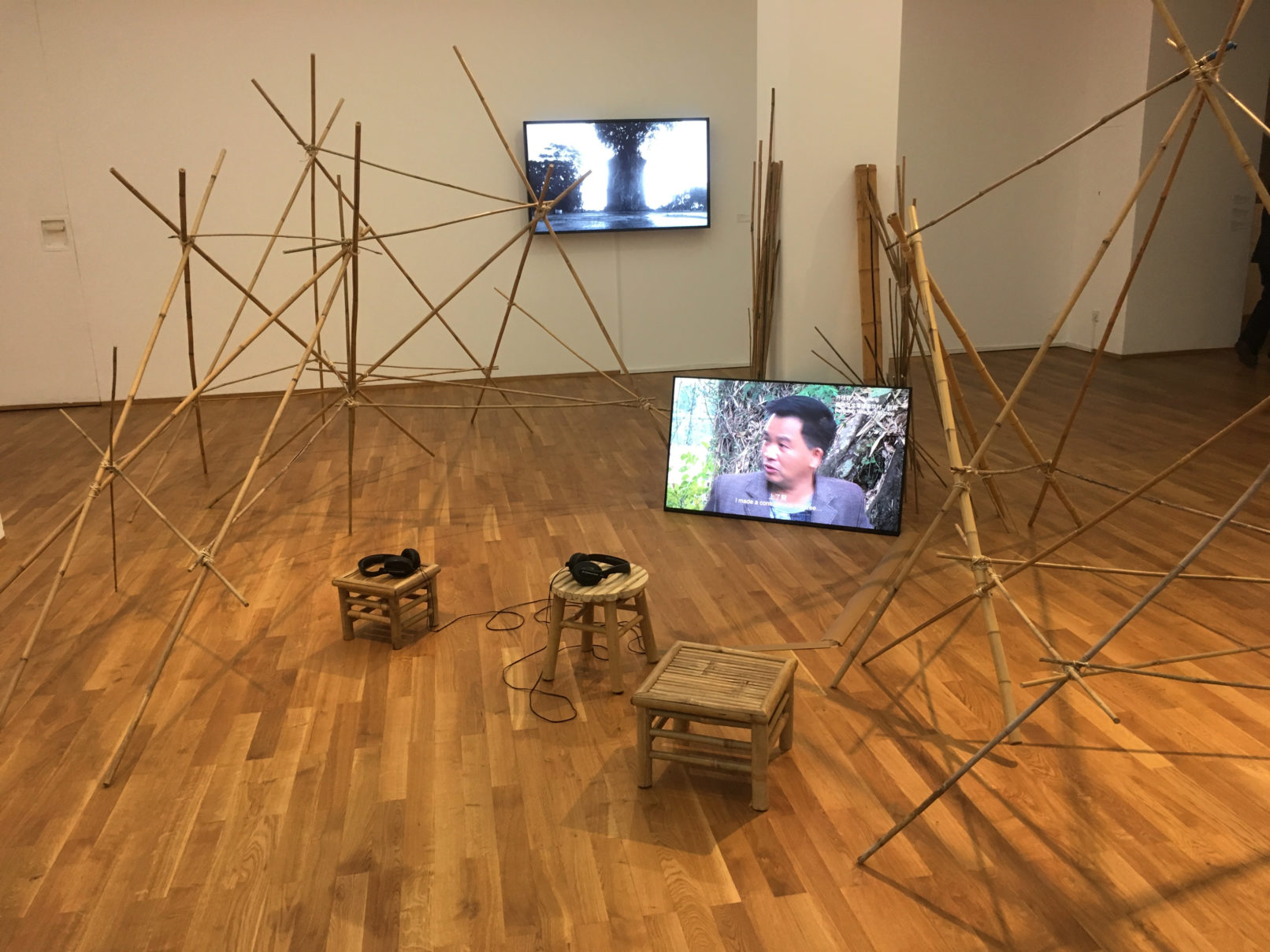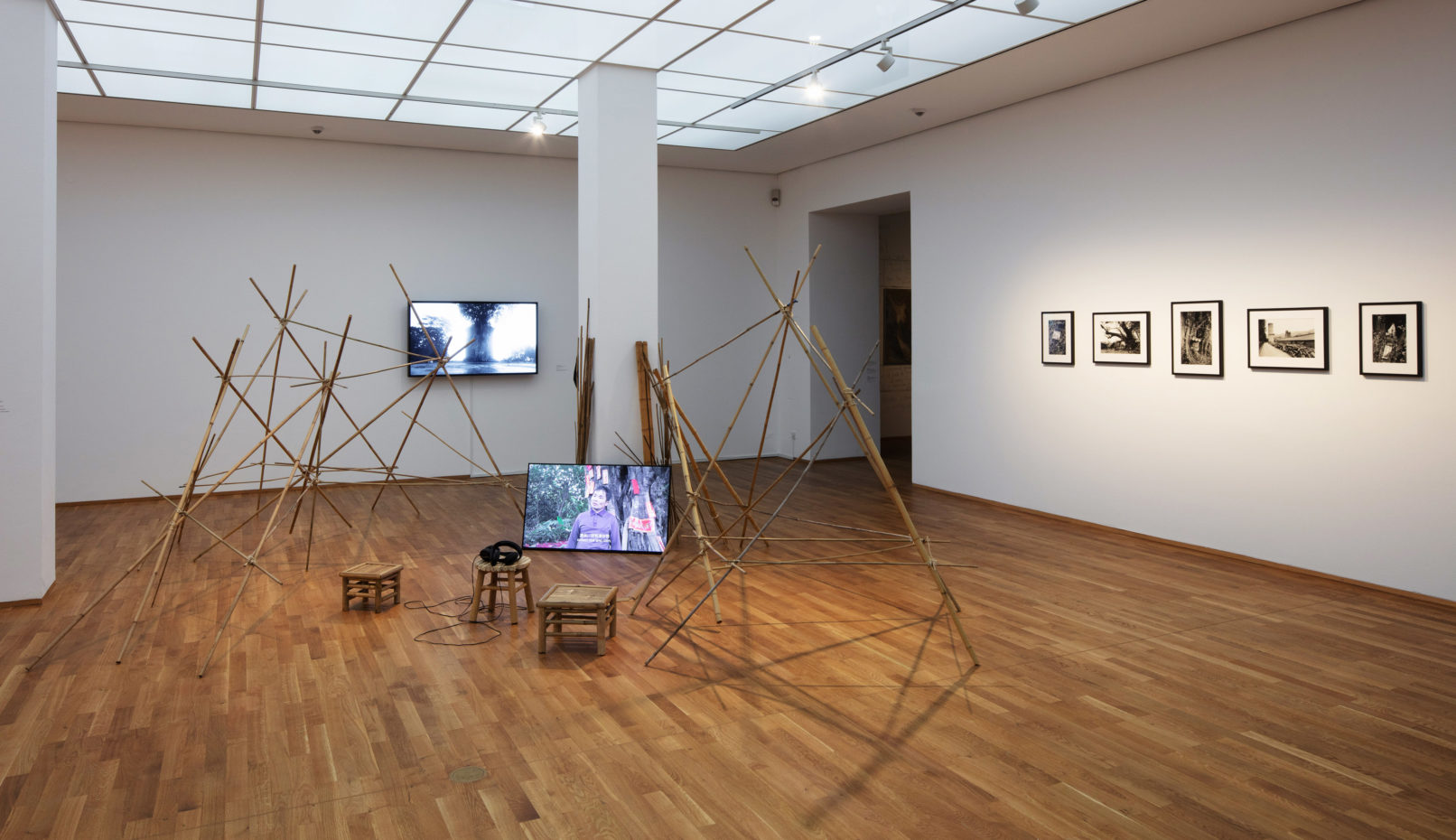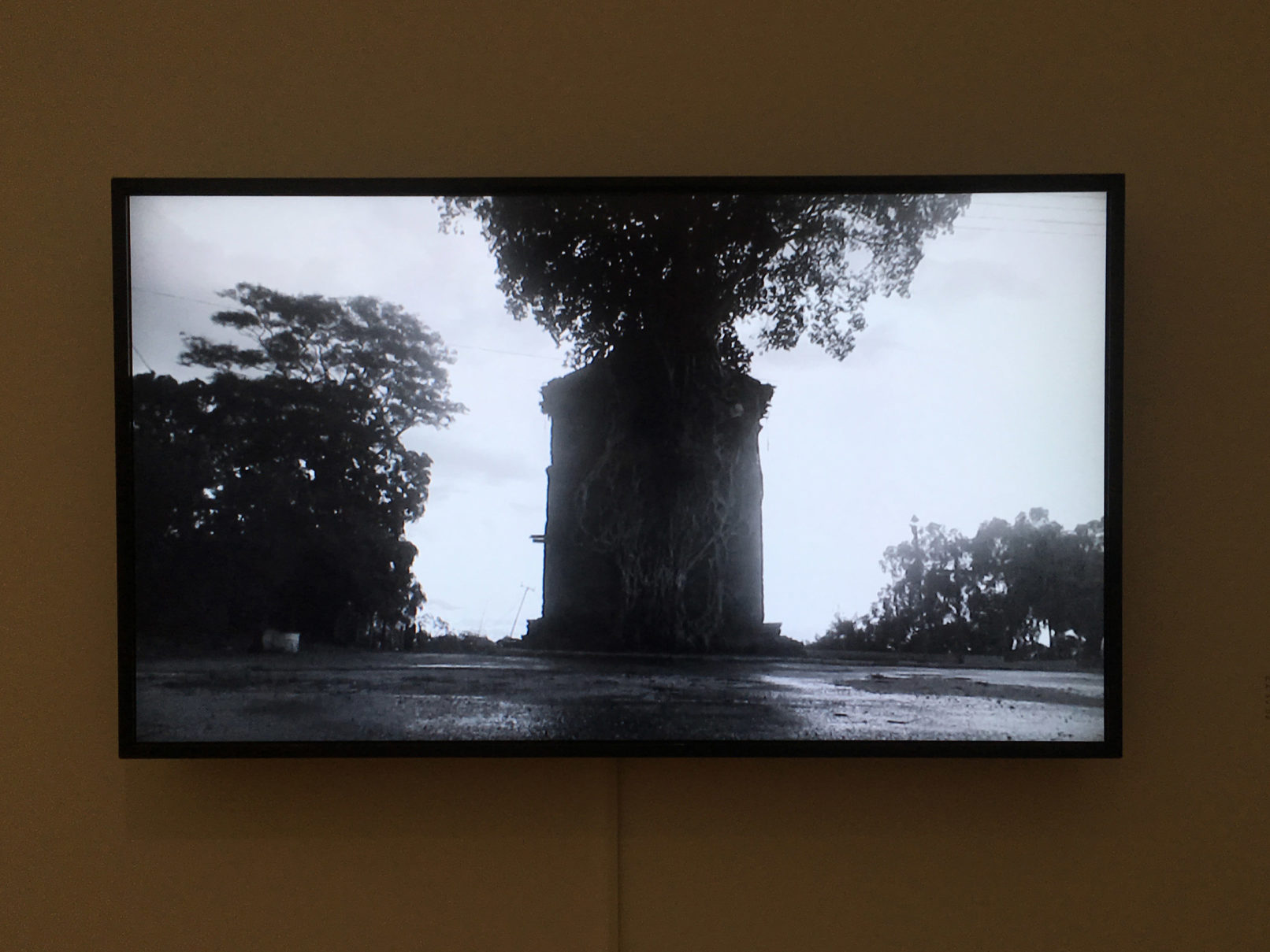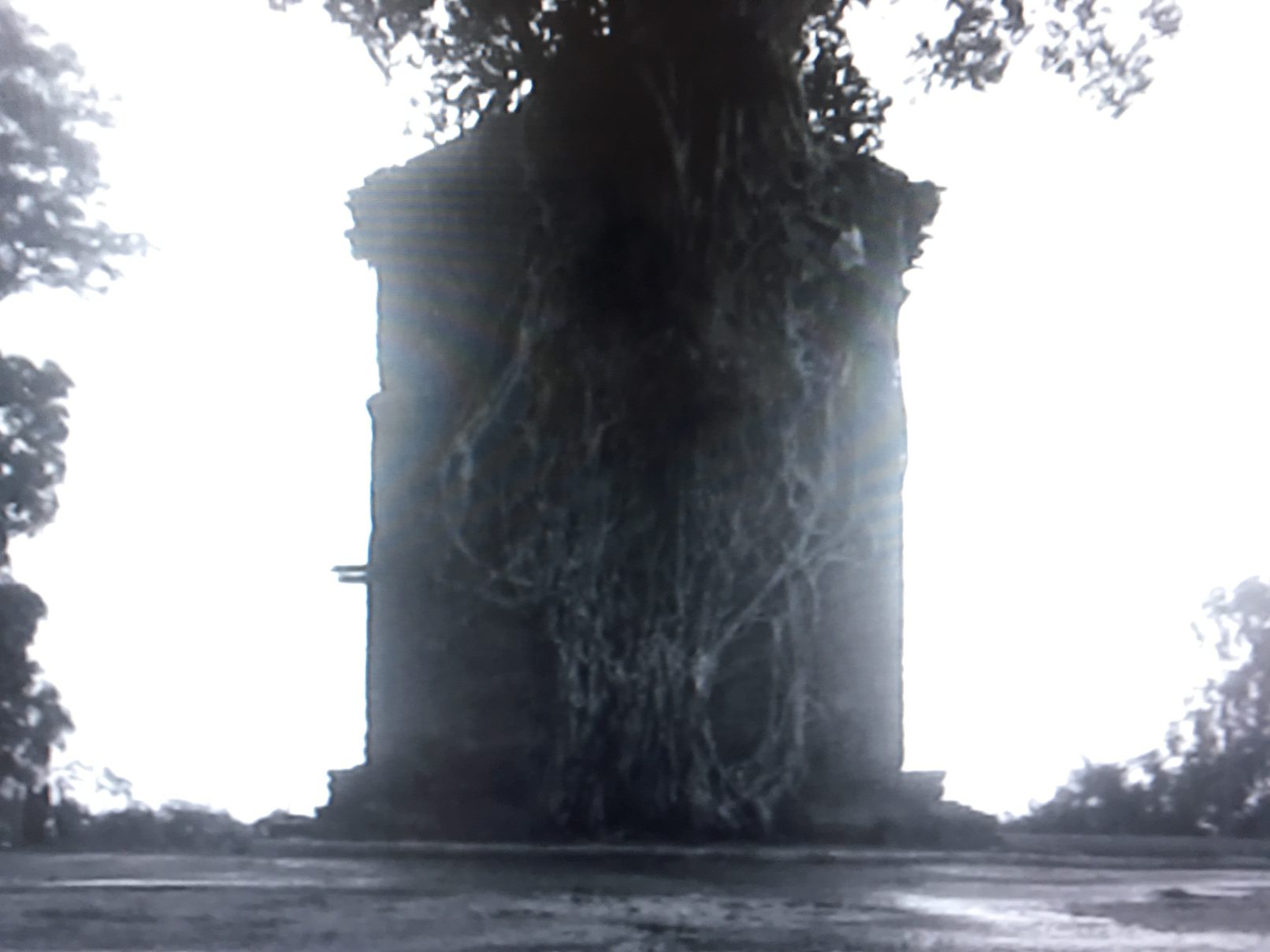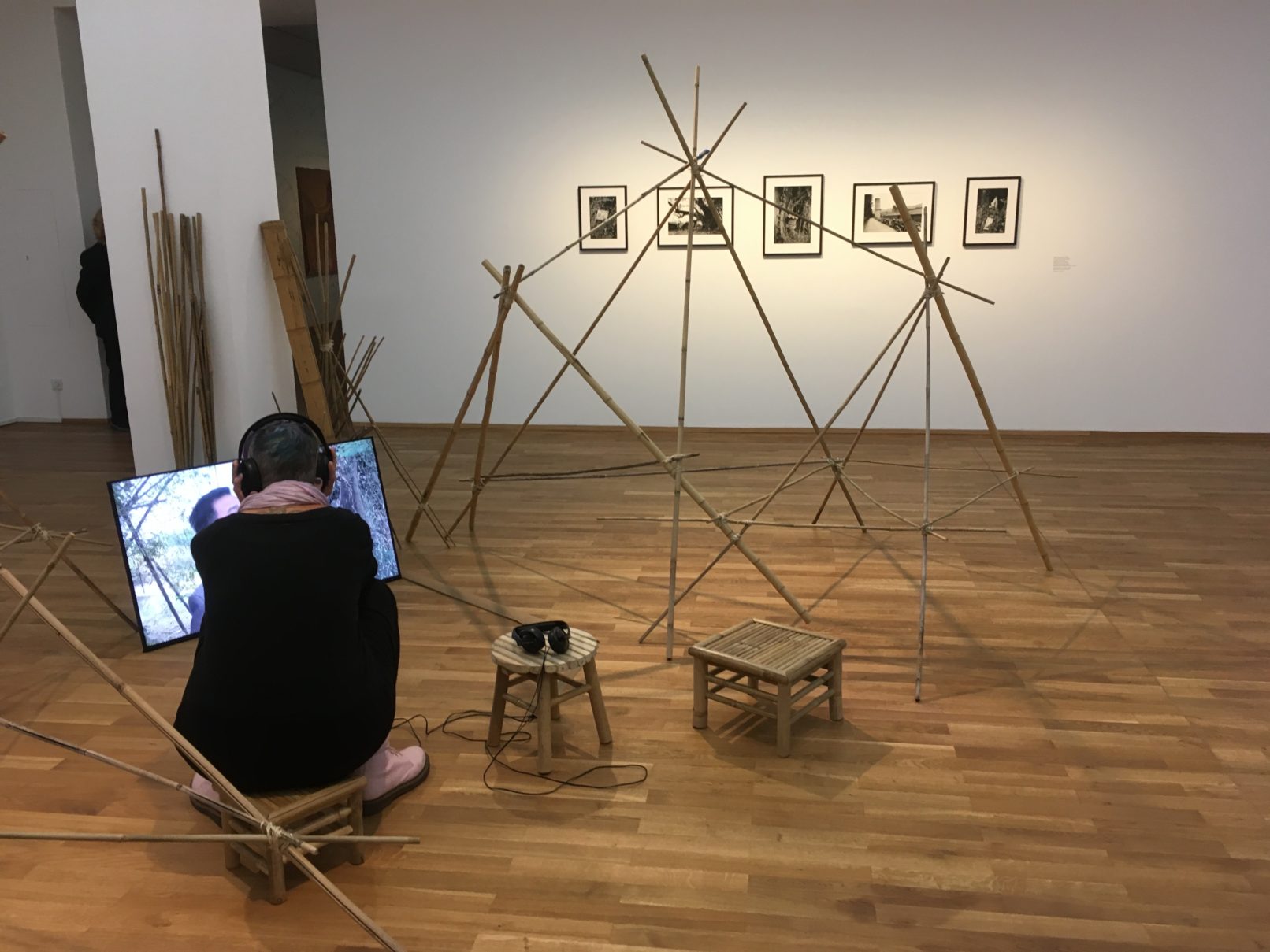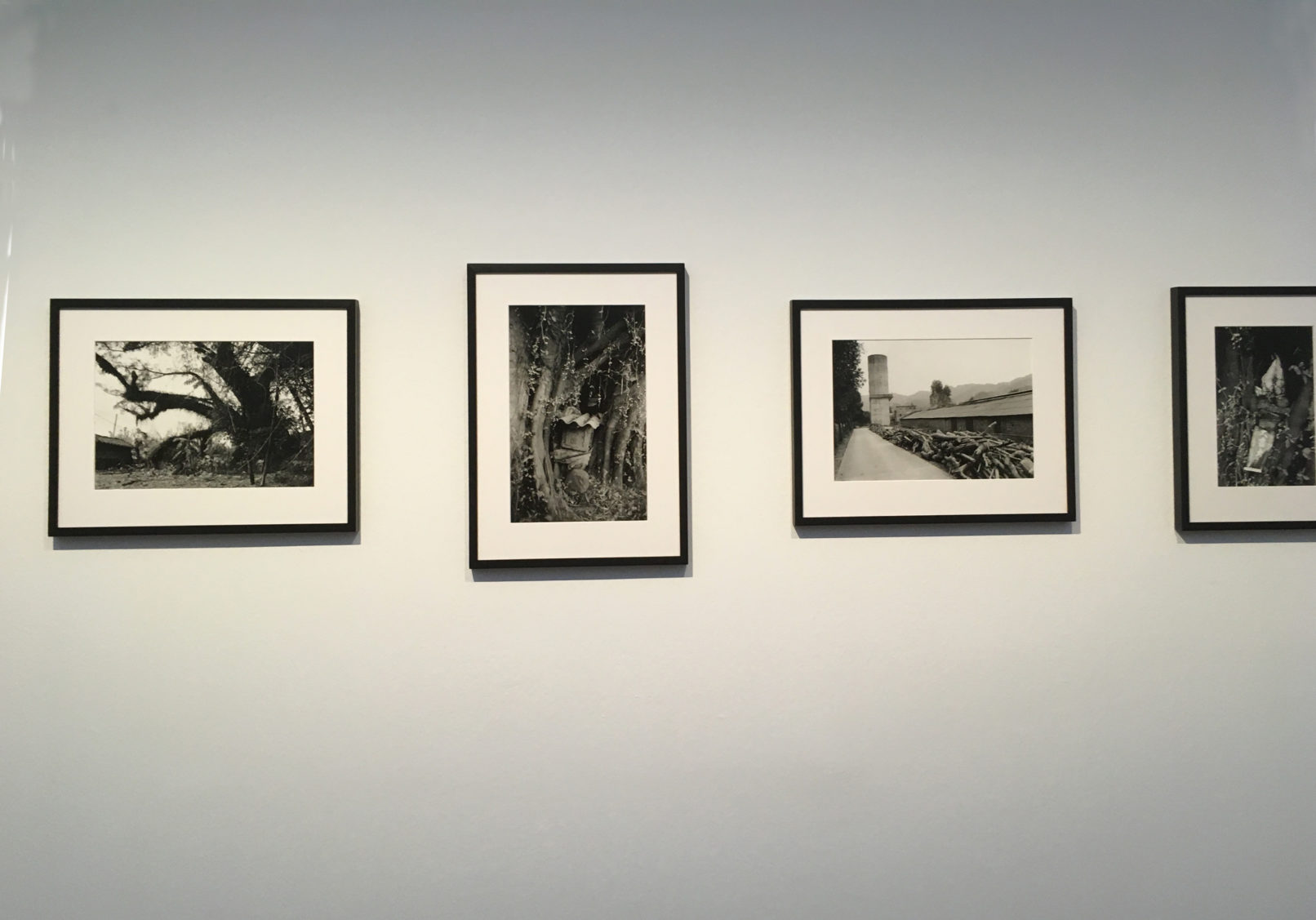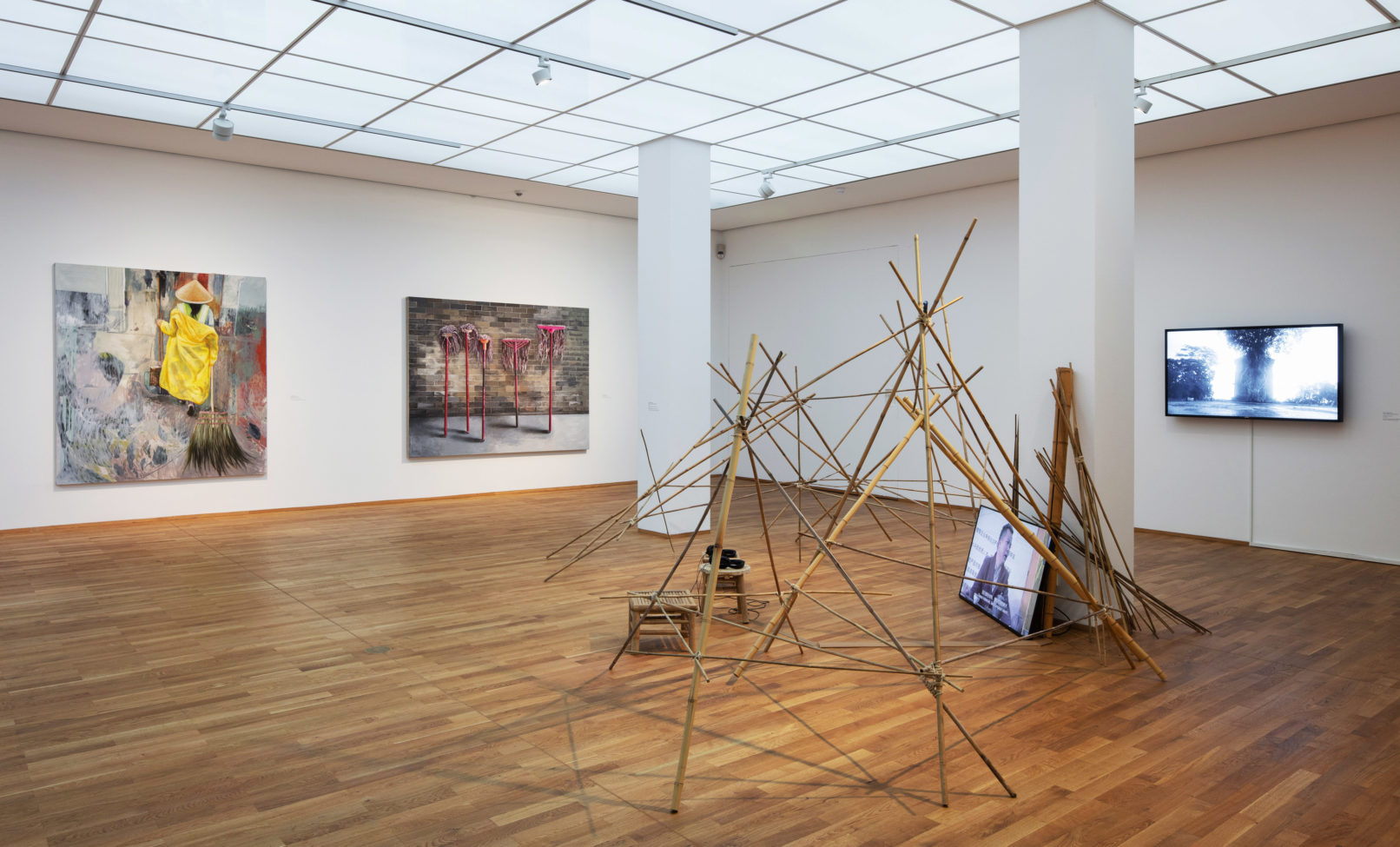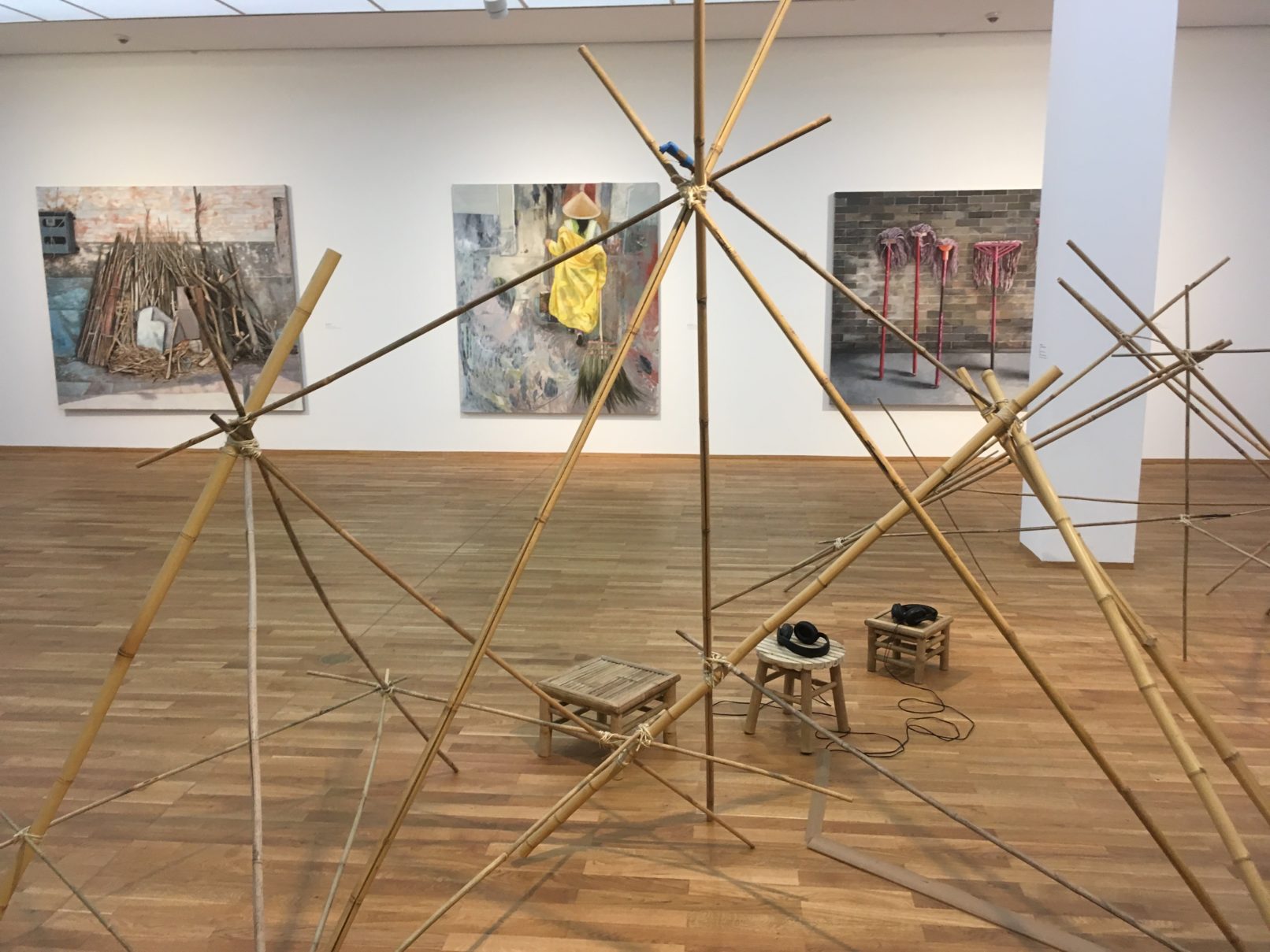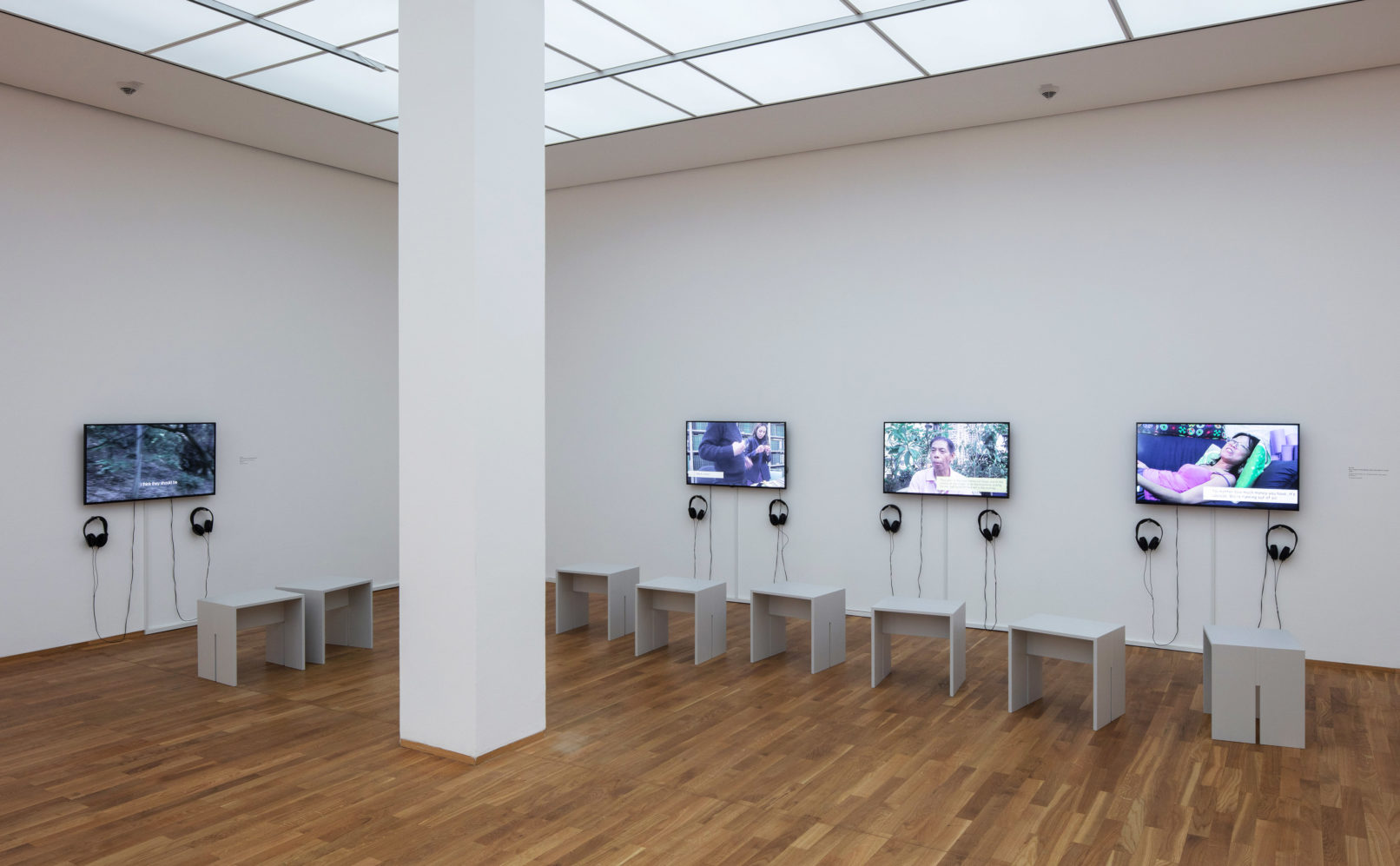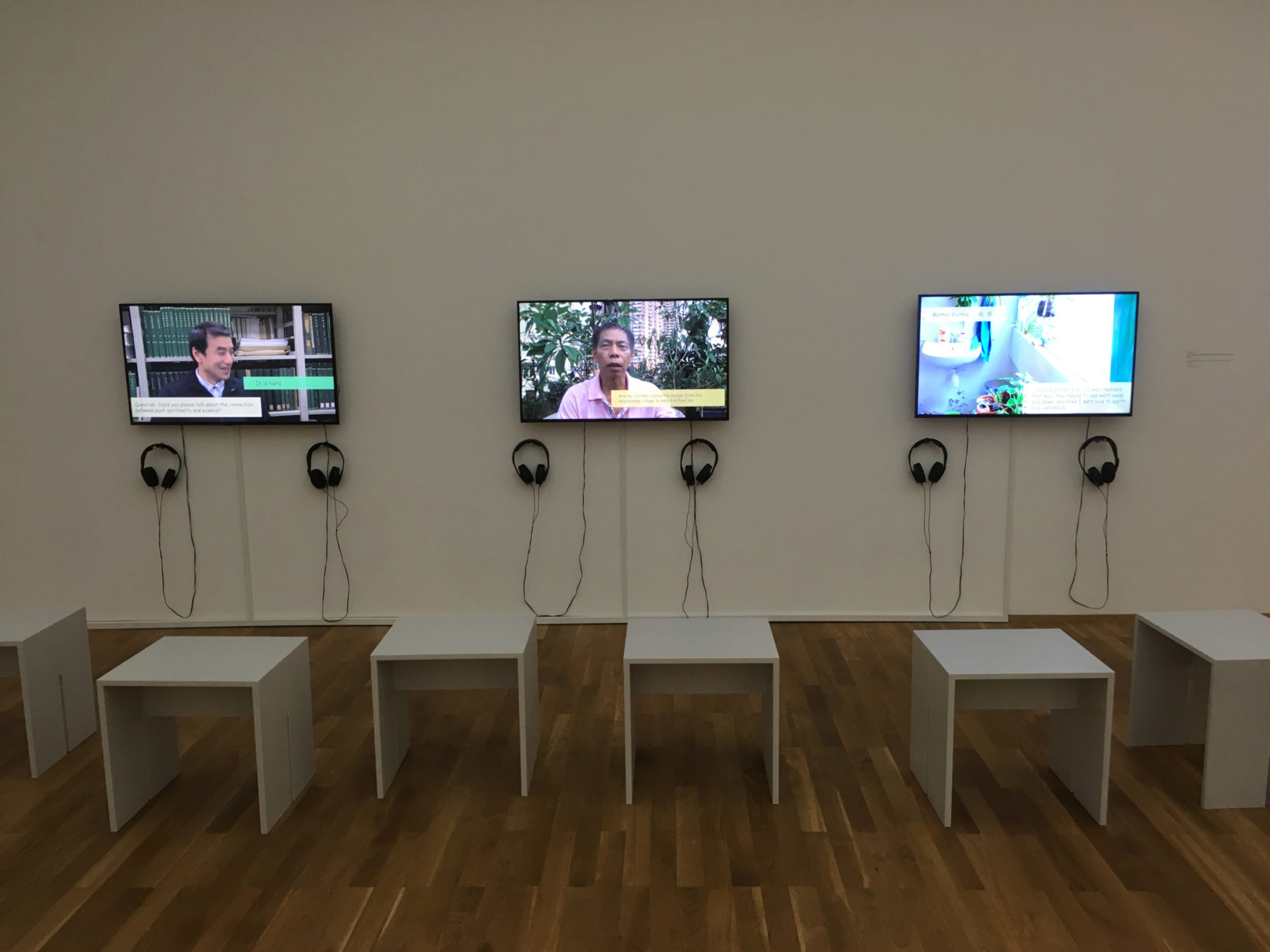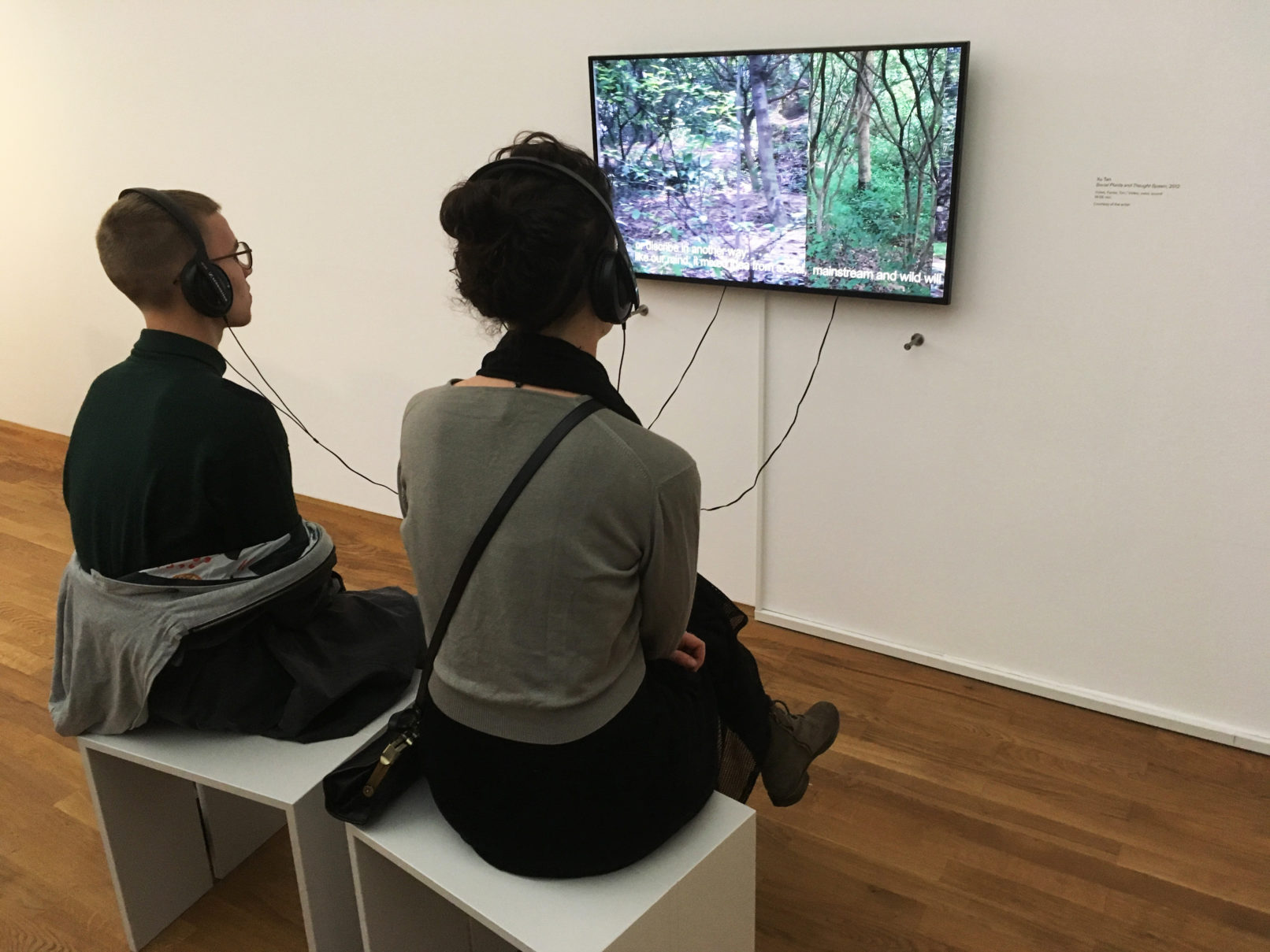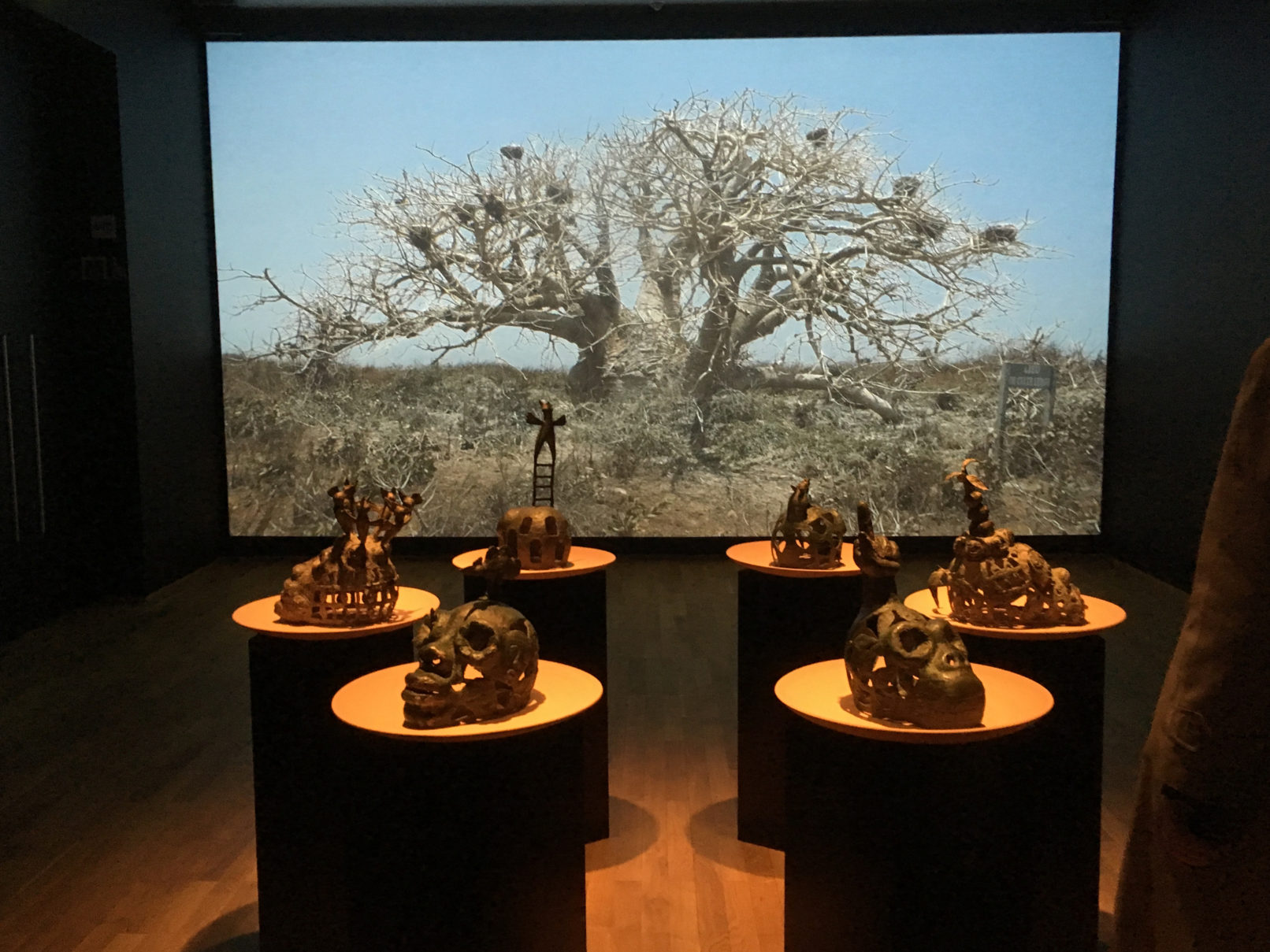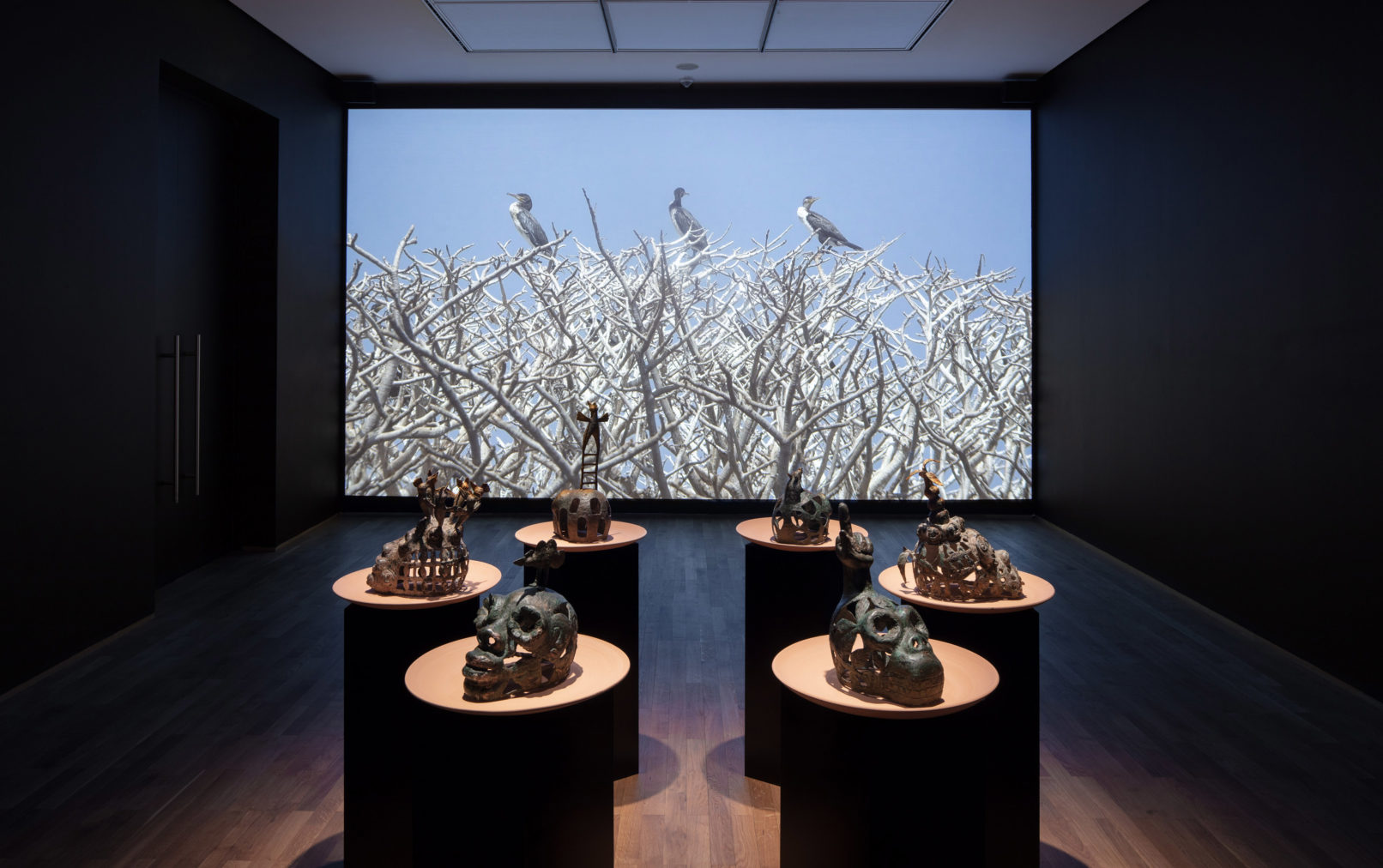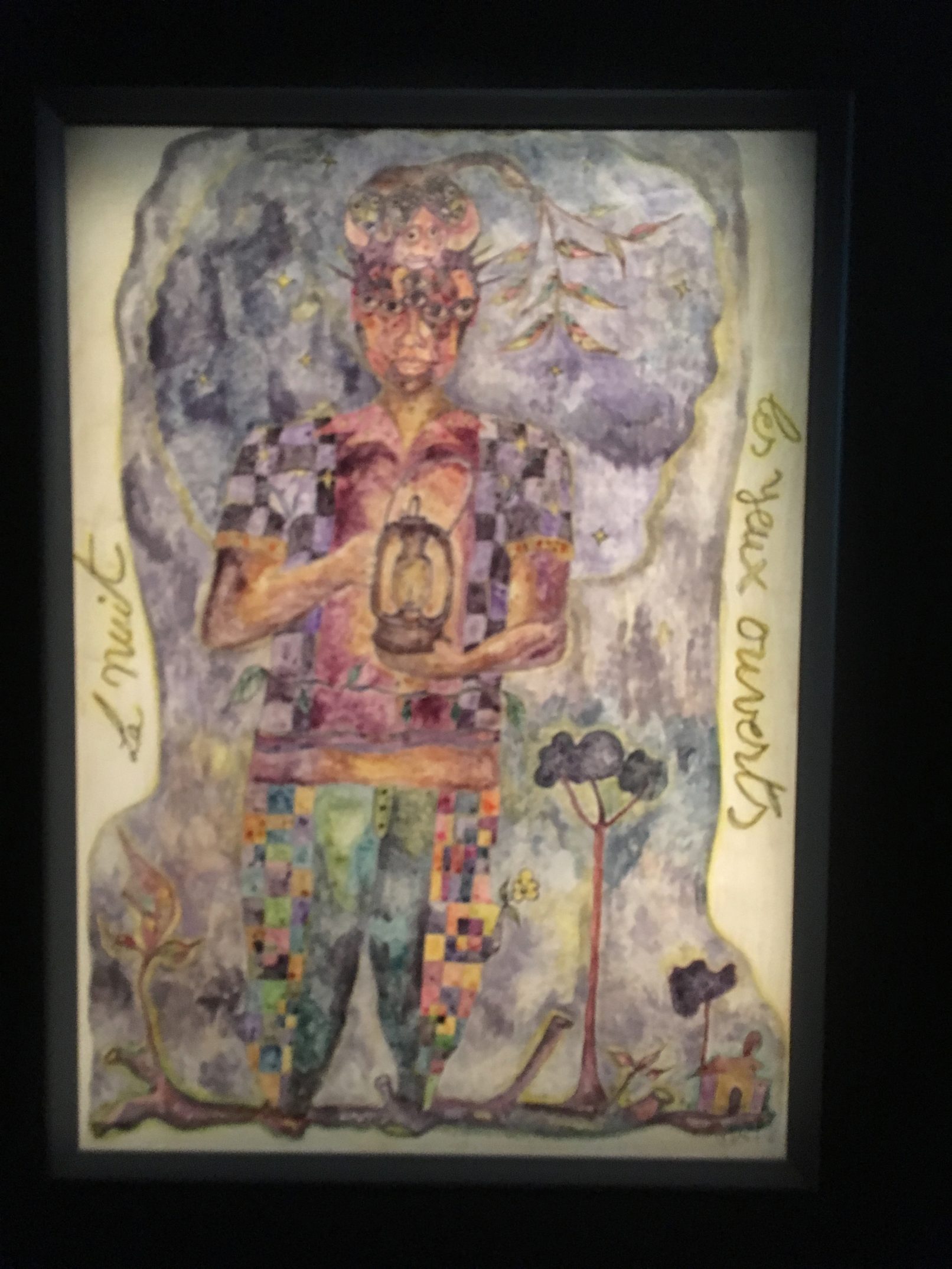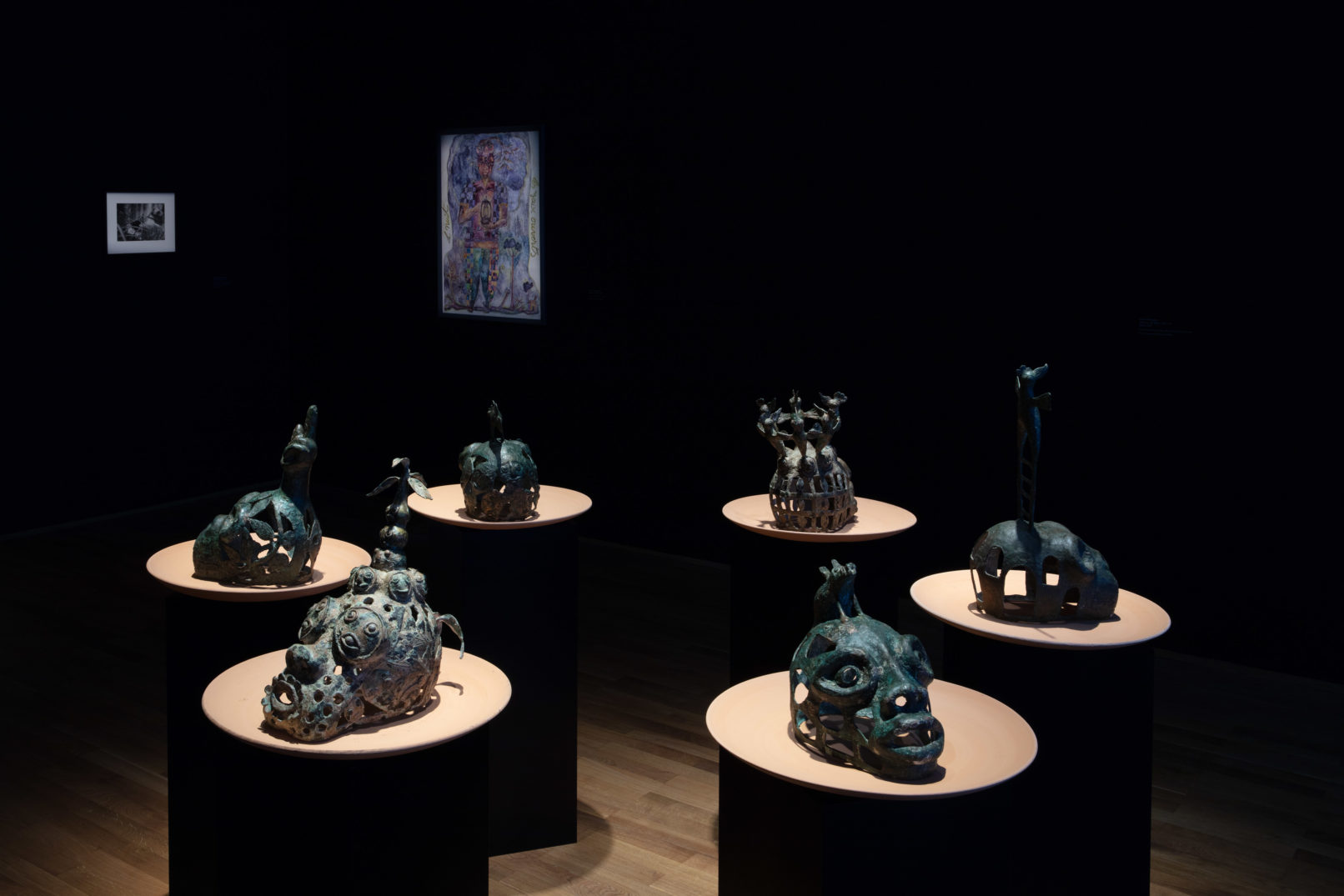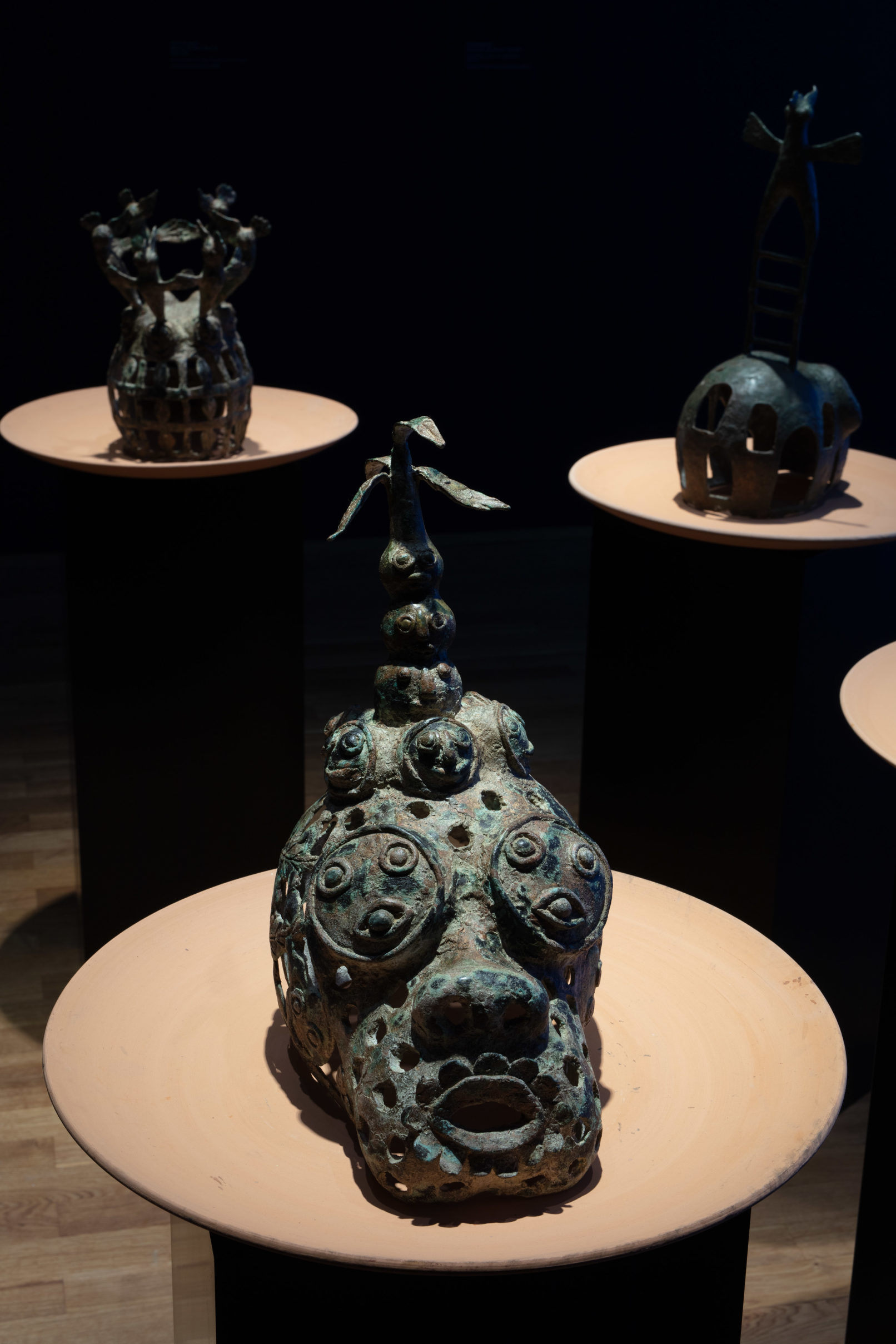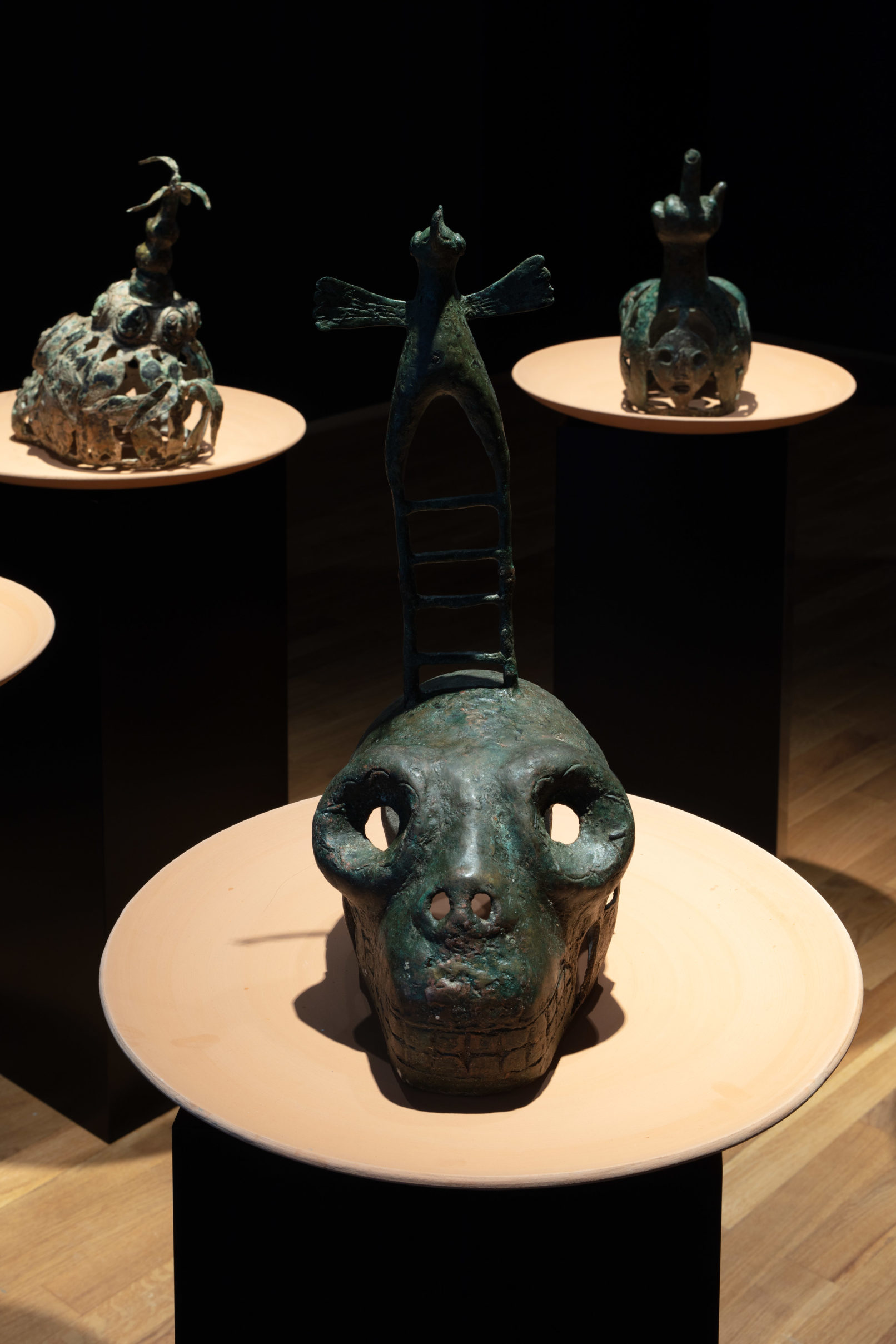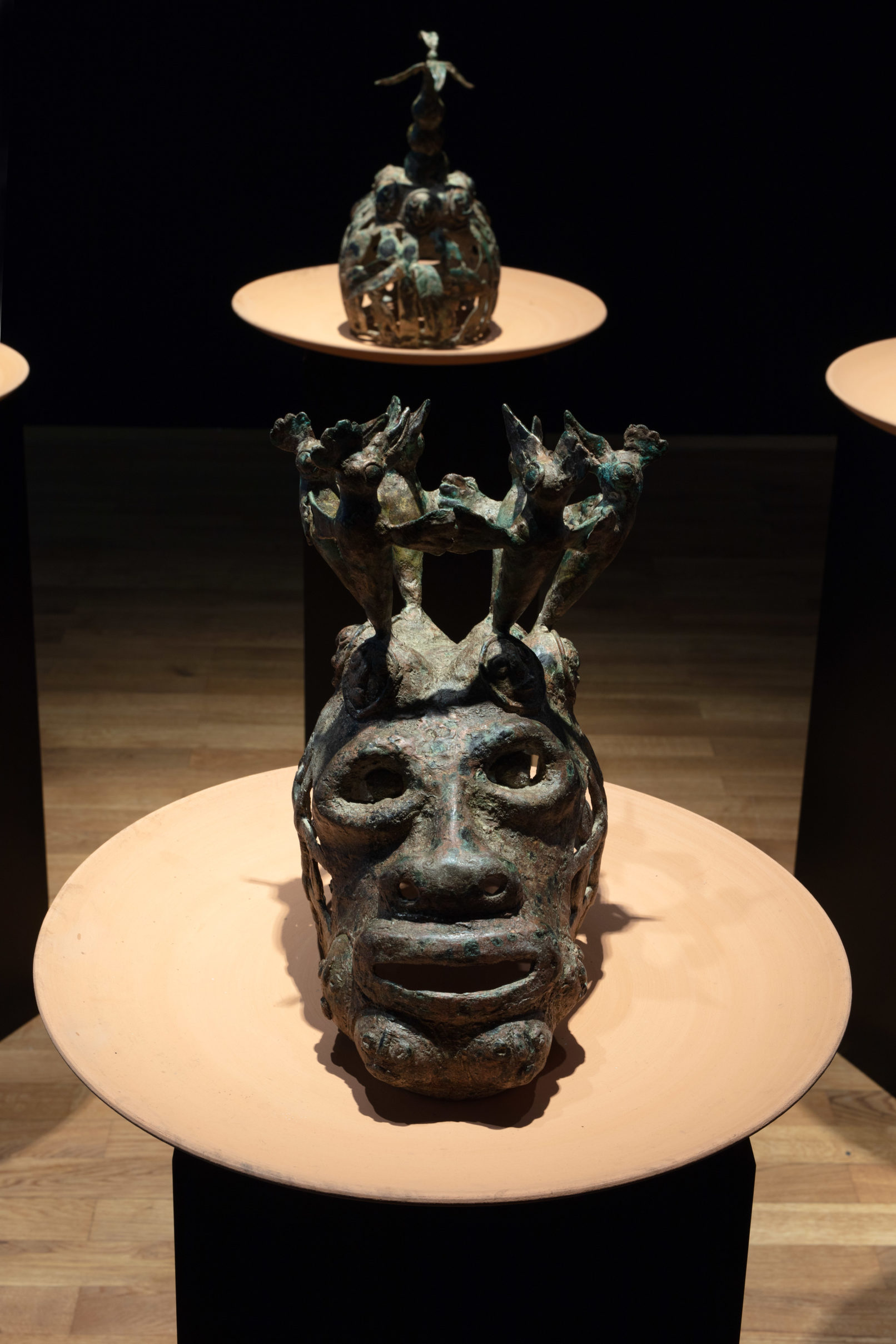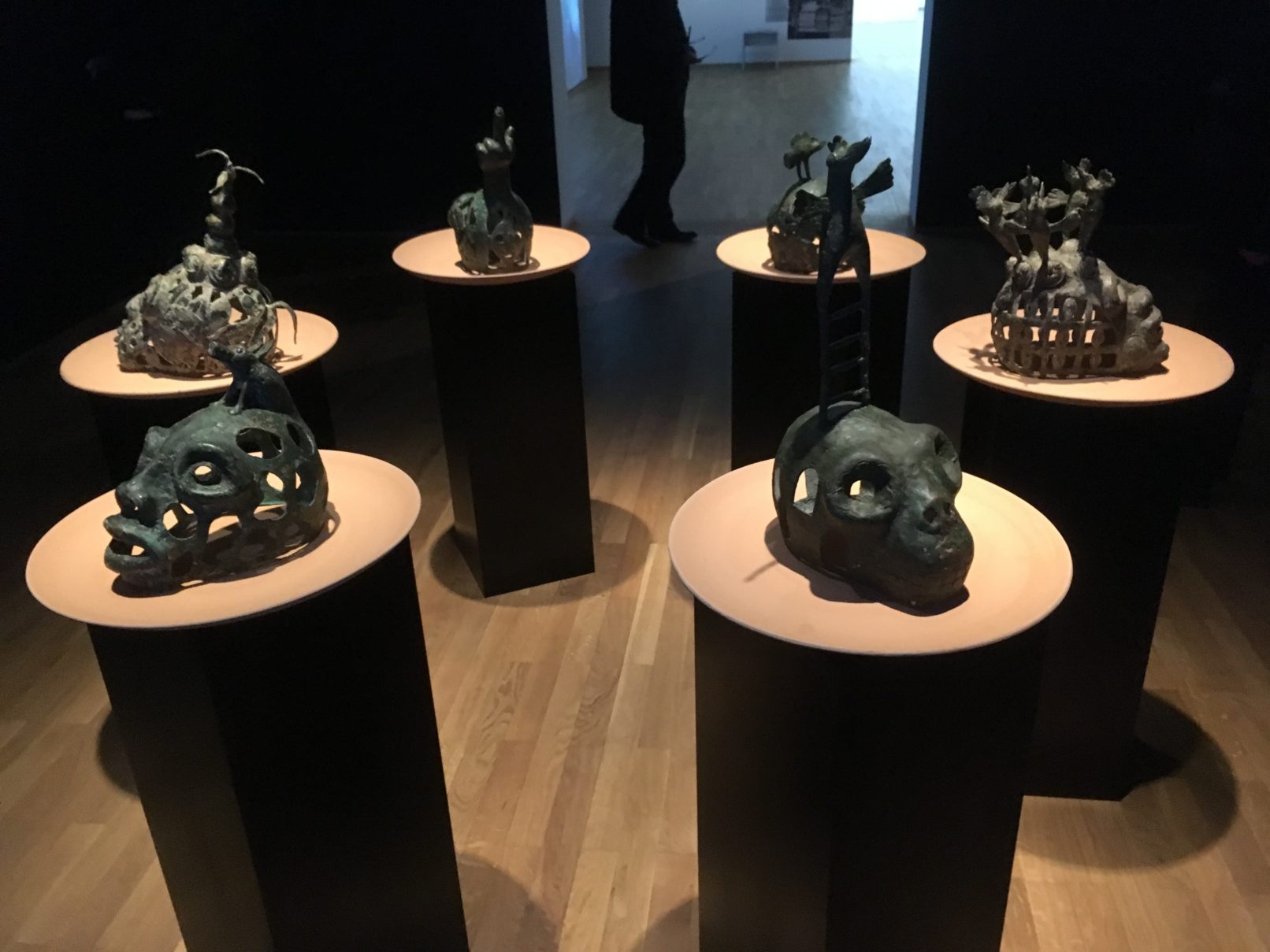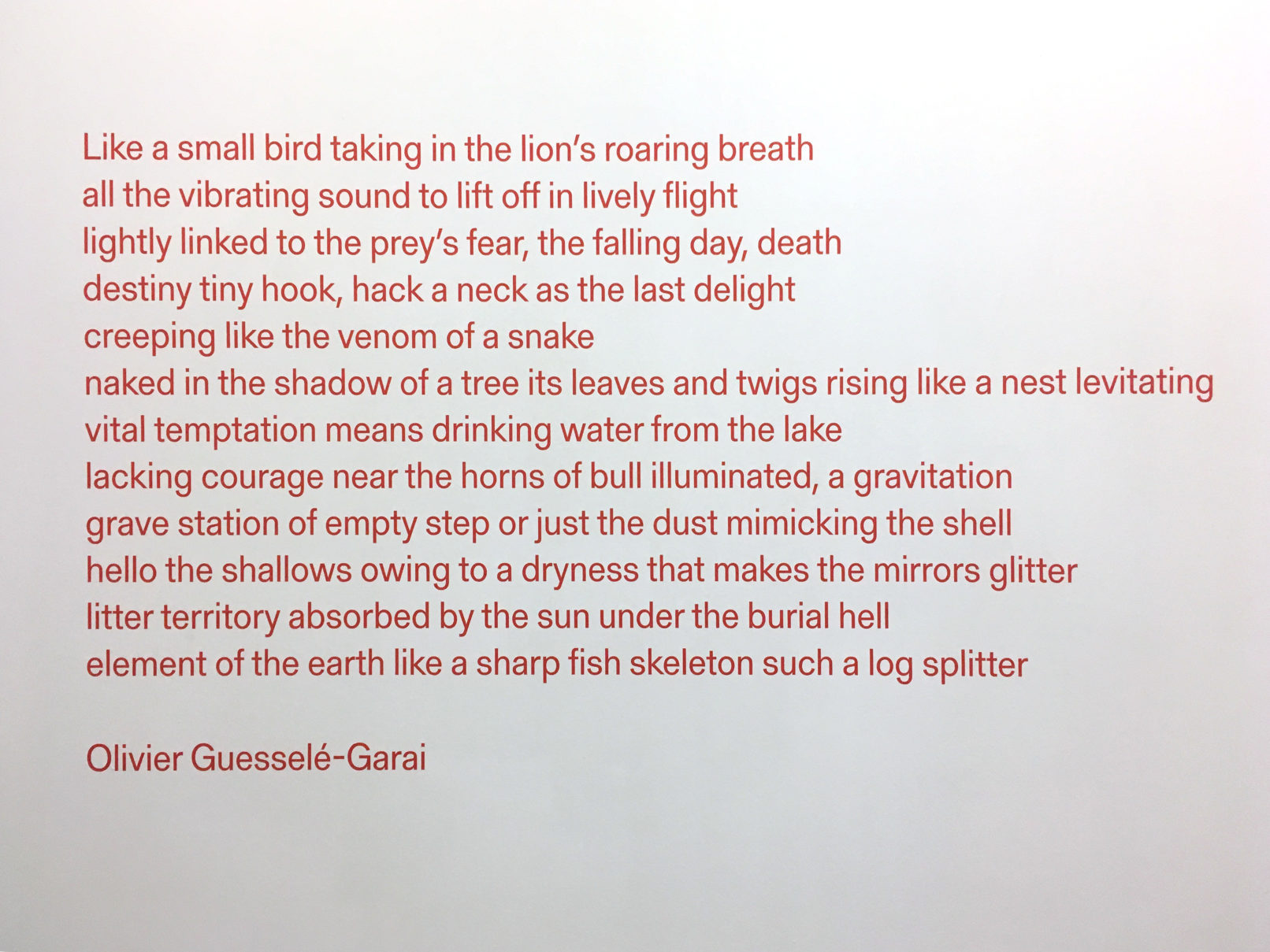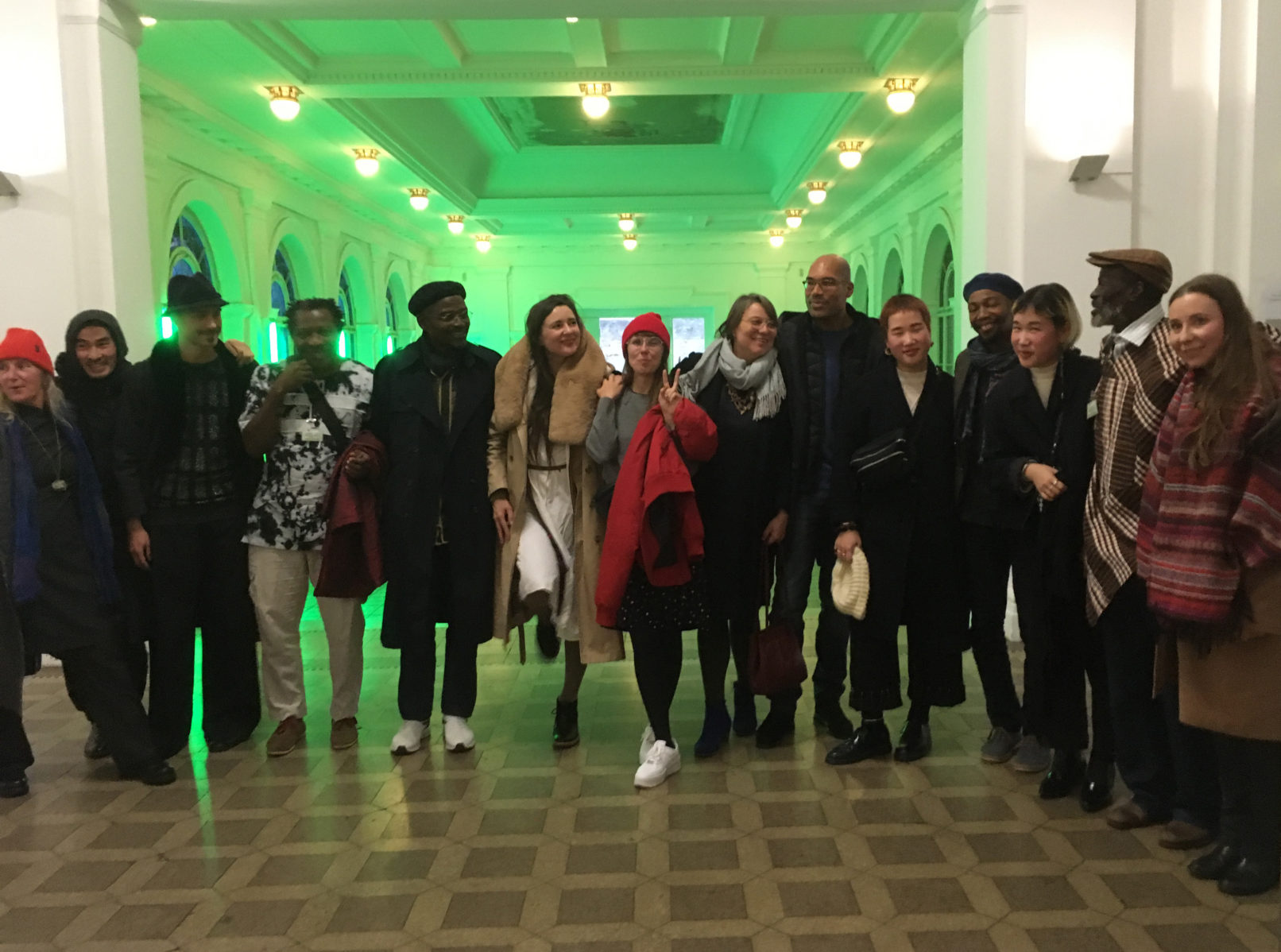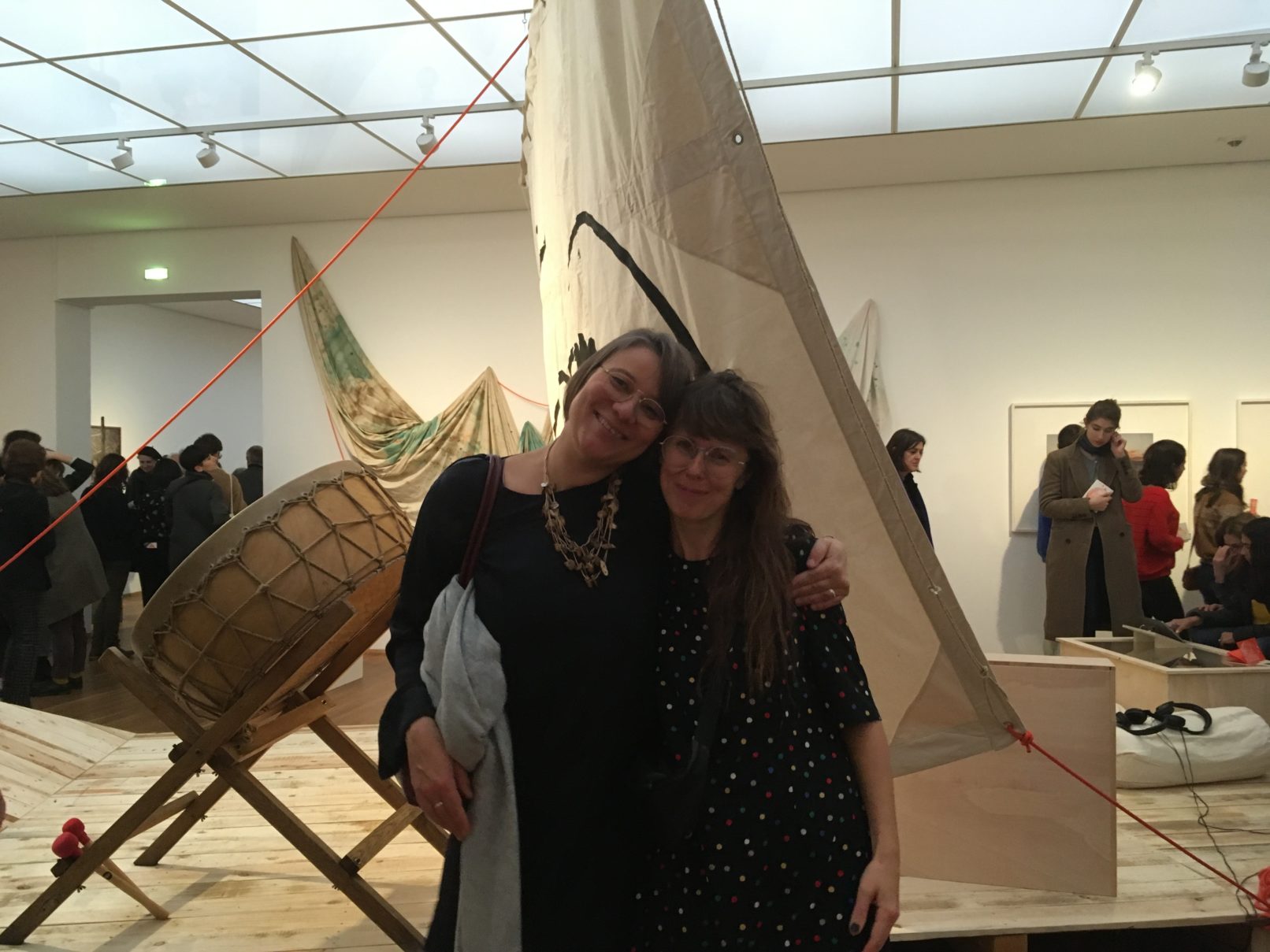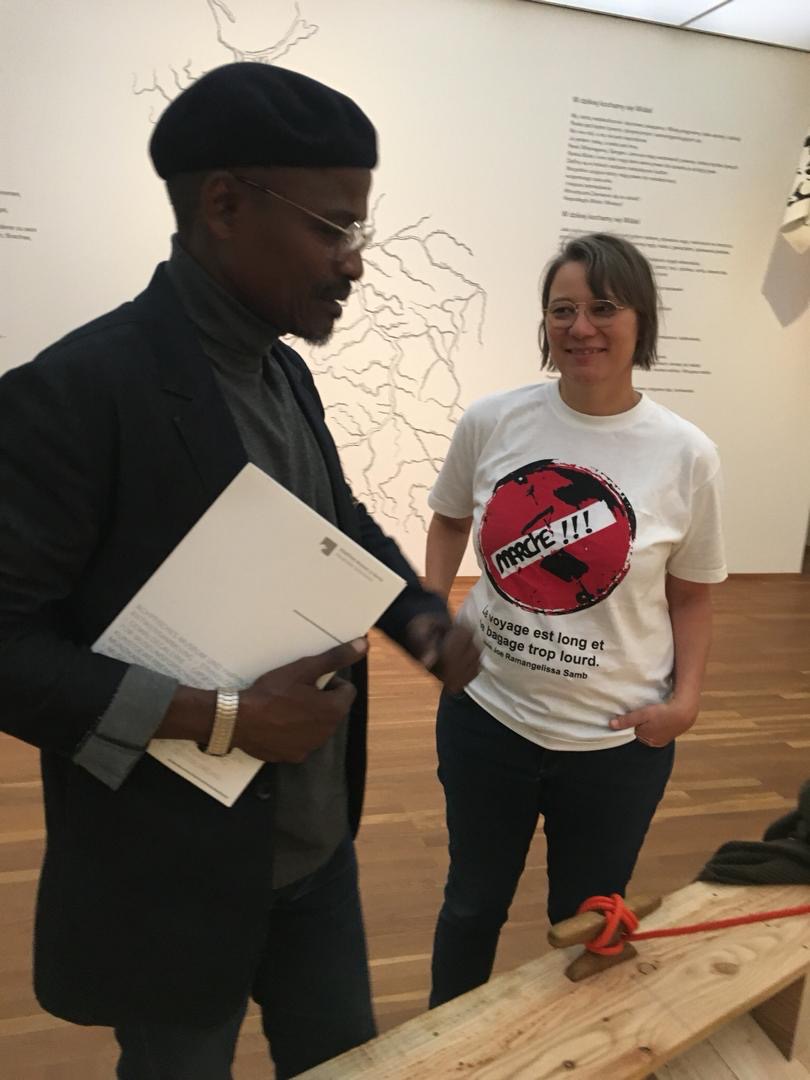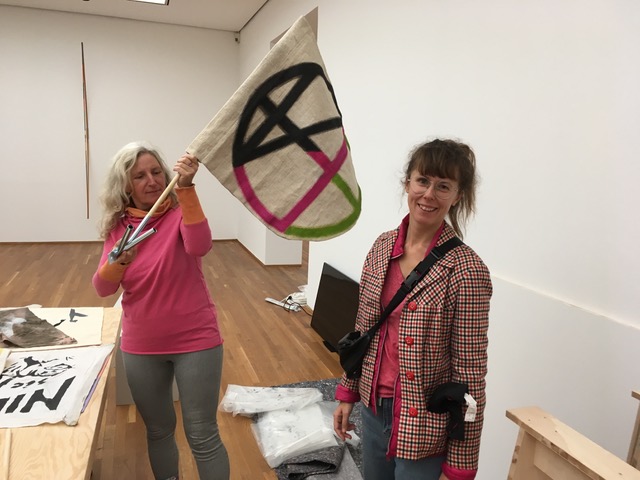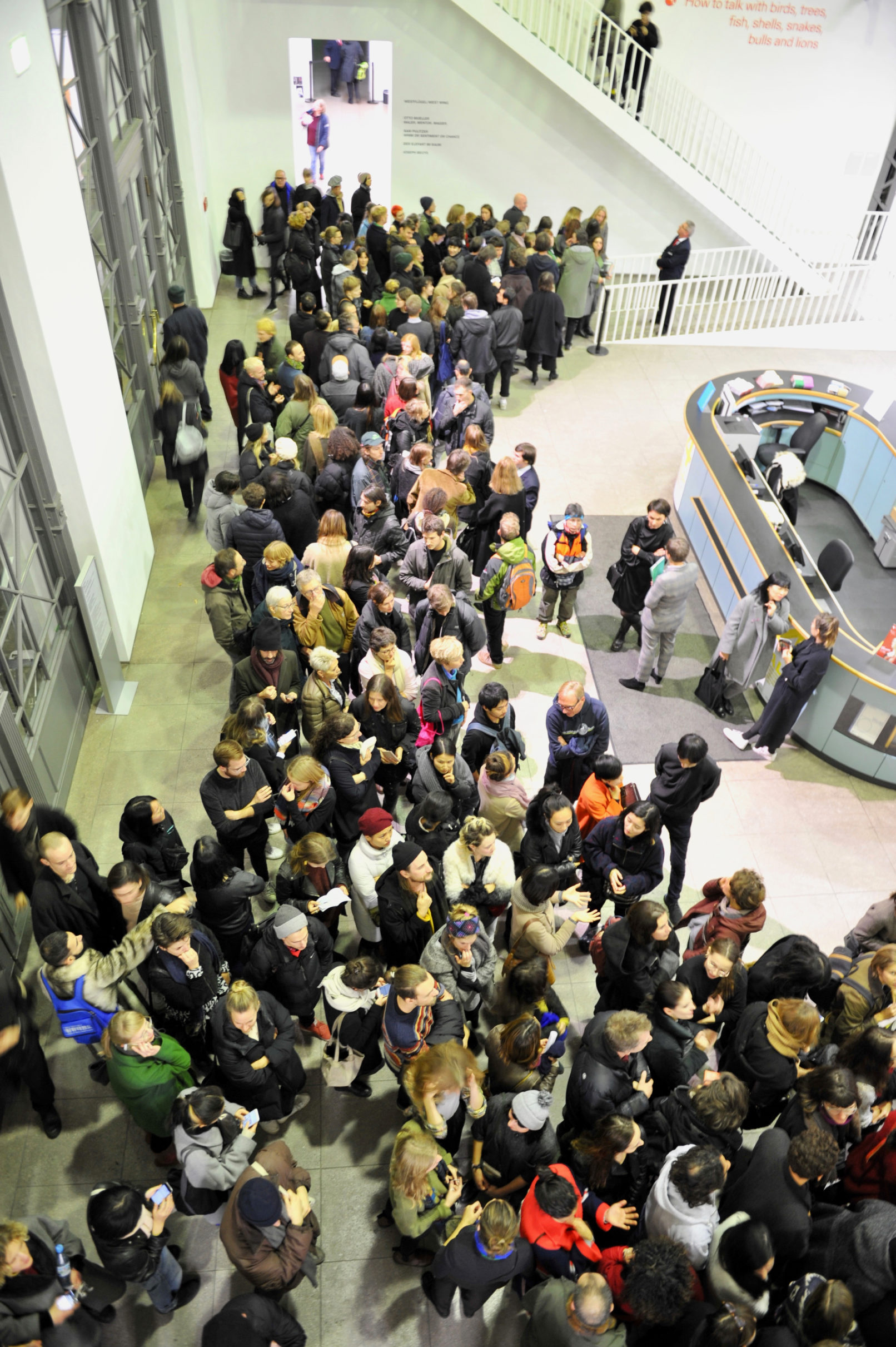How to talk to birds, trees, fish, shells, snakes, bulls and lions, 2018
How to talk with birds, trees, fish, shells, snakes, bulls and lions
November 16, 2018 to March 31, 2019
Hamburger Bahnhof – Museum für Gegenwart – Berlin
A project by Antje Majewski with Agnieszka Brzeżańska & Ewa Ciepielewska, Carolina Caycedo, Paweł Freisler, Olivier Guesselé-Garai, Tamás Kaszás, Paulo Nazareth, Guarani-Kaiowá & Luciana de Oliveira, Issa Samb, Xu Tan, Hervé Yamguen
Can a shell sing to me? Can a human being be a snake? Can a tree be my mother or father? Can I converse with a river? Can a chicken communicate with my ancestors? Are there human beings that know how to sing like birds? Can my apple tree call for my help? Can animals in the forest show me how to survive? Can I listen to the insects in a fallow in the middle of the city?
Collaborative and trans-disciplinary artist Antje Majewski (born 1968 in Marl, Germany) has opened an ongoing dialogue with colleagues from Brazil, Cameroon, China, Colombia, France, Hungary, Poland and Senegal and invited them to contribute works exploring the reciprocal relationships between human and beyond-human beings in a poetic way. The exhibition project at Hamburger Bahnhof – Museum für Gegenwart – Berlin stems from this conversation between the participating artists and their interactions with others.
The project and its title emerged from a conversation between Senegalese painter, sculptor, performance artist, playwright and poet Issa Samb and Antje Majewski under the trees in his courtyard in Dakar. Sadly, both Issa Samb and the trees are gone today, but the discussion set a process, a laboratory in motion. It was the start of meetings, travels, and conversations between Majewski and the invited artists, and each of these conversations generated new ideas and proposals for the exhibition.
Paulo Nazareth, Luciana Oliveira and Antje Majewski spent time together during the first “Indigenous World Games” held in the middle of Brazil’s Cerrado, a territory of former indigenous land destroyed by monoculture farming. Agnieszka Brzeżańska and Ewa Ciepielewska took Majewski and Guesselé-Garai on their boat project “Flow” on the Vistula, Europe’s last wild river; in Cameroon, Majewski and Guesselé-Garai learned about Hervé Yamguen’s reconnection with the traditions of his village. In South China, they joined Xu Tan in speaking about land use with people involved in farming or complex relationships with trees. Tamás Kaszás built birdhouses and a yurt in Majewski’s garden that will return to their practical uses after the show. And most artists came together when Majewski hosted a 3-day workshop in Himmelpfort (Germany), where they were introduced to the project and shared initial ideas.
How to talk with birds, trees, fish, shells, snakes, bulls and lions takes artists’ interactions with endangered places, societies and environments as points of departure. The presented works often focus on specific places that have been destroyed, altered, or are seriously imperiled by encroaching capitalism, colonialism, and other detrimental human influences. Videos, large-scale installations, sculptures, manifestos, poems, photographs, drawings and paintings address delicate socio-ecological systems and often put the focus on plants and animals —which are simultaneously the most vulnerable beings in this context and the basic premise for human life.
The artists speak from personal positions of dissidence to today’s dominant modes of interaction with the environment—whether feminist, decolonizing, situational, and/or by proposing radically non-capitalist ways of interacting with humans, other living beings, and matter. Their work suggests a closer look at inter-species messages and mindfulness towards the vulnerable, which could open us up to alternative ways of being with others that are not utopias, but already happening right before our eyes.
The emphasis on “speaking” or “talking” raises questions as to how meaning is created and conveyed, and for whom. The concept of “meaning” in Western science—especially as created by linguistic communication—seems especially human, since most semiotic modes of communication presuppose a human mindset. And yet language is just one mode of expression in the planetary semiosis, and like other meaningful acts, it is rooted in the environment and all those dependent on it. Talking with birds, trees, fish, shells, snakes, bulls and lions requires keen attention to different voices, and openness to the sound of languages that we might not understand. Enacting this communication means suspending the grammar and style regime, and listening to murmurs and reverberations, repetitions and pauses.
A decolonization of thought, language and ways of life means questioning not only the relationships between the so-called “center” and the “periphery” as established by the West, but also false divisions between nature and culture, humankind and other organisms. These artistic approaches to our natural and cultural habitats raise questions that will require an answer in the years to come, since the fate of mankind is linked to that of all other inhabitants in the planetary ecosystem. We need to learn how to listen and respond to other beings with empathy, attentiveness, and love.
Curators: Melanie Roumiguière, Ina Dinter (Hamburger Bahnhof – Museum für Gegenwart – Berlin, Nationalgalerie – Staatliche Museen zu Berlin), Aleksandra Jach (Muzeum Sztuki, Łódź)
